When Toyota unveiled the new 4Runner in April, it sparked a wave of questions among enthusiasts. Following the recent debut of the redesigned Land Cruiser, which now shares the TNGA-F platform with the Tacoma, Sequoia, and Tundra, the arrival of a similarly sized, TNGA-F-based 4Runner with the same 2.4-liter engine and eight-speed transmission raised eyebrows. Many wondered if the new 4Runner was simply too close to the Land Cruiser, perhaps even redundant. Having had the opportunity to drive the new 4Runner alongside the Land Cruiser, here’s a detailed comparison of what sets these two SUVs apart.
The immediate answer is clear: there’s definitely an overlap between the two models. Toyota’s strategy, however, is to target distinct customer segments, aiming to capture a broader market, potentially attracting buyers considering vehicles like the Ford Bronco, Jeep Wrangler, or even Porsche Cayenne. A Toyota spokesperson at the 4Runner’s media launch emphasized this North American focus, stating, “4Runner is a North America-focused product for North American taste, so the driving dynamics and styling are very different. One of [the chief engineer’s] top three goals was to make it fun to drive and sporty. Land Cruiser is a global vehicle based on global heritage and tastes, from a driving dynamics standpoint.”
Alt text: A promotional video thumbnail showcasing the Toyota 4Runner, highlighting its dynamic design.
Essentially, Toyota positions the 4Runner as the more aggressive and sporty option, while the Land Cruiser is intended to be the premium offering. This distinction applies not only to styling and build quality but also to driving dynamics.
Decoding the 2025 Toyota 4Runner Lineup
Toyota describes the 4Runner as versatile, and the extensive trim lineup certainly reflects this. Unlike the Land Cruiser, which is offered in just two trims (1958 and Land Cruiser), the new Toyota 4Runner boasts an impressive nine different variants, with prices ranging from $42,220 to $68,350:
- SR5 ($42,220 for 4×2, $44,220 for 4×4)
- TRD Sport ($48,700 for 4×2, $50,700 for 4×4)
- TRD Sport Premium ($54,060 for 4×2, $56,060 for 4×4)
- TRD Off-Road 4×4 ($50,640)
- TRD Off-Road Premium 4×4 ($56,420)
- Limited ($56,850 for 4×2, $58,850 for 4×4)
- Platinum 4×4 ($64,310)
- TRD Pro 4×4 ($68,350)
- Trailhunter 4×4 ($68,350)
 Img 5921
Img 5921
The top-tier trims—Platinum, TRD Pro, and Trailhunter—exclusively feature the 2.4-liter hybrid “i-Force Max” powertrain. This system delivers a robust 326 horsepower and 465 lb-ft of torque, a familiar setup also found in the Tacoma and Land Cruiser.
The Limited, TRD Off-Road, and TRD Off-Road Premium trims come standard with the 278 horsepower, 317 lb-ft 2.4-liter “i-Force” engine, which is the sole engine option for the SR5 and TRD Sport. However, these trims offer the hybrid powertrain as an upgrade for an additional $2,800.
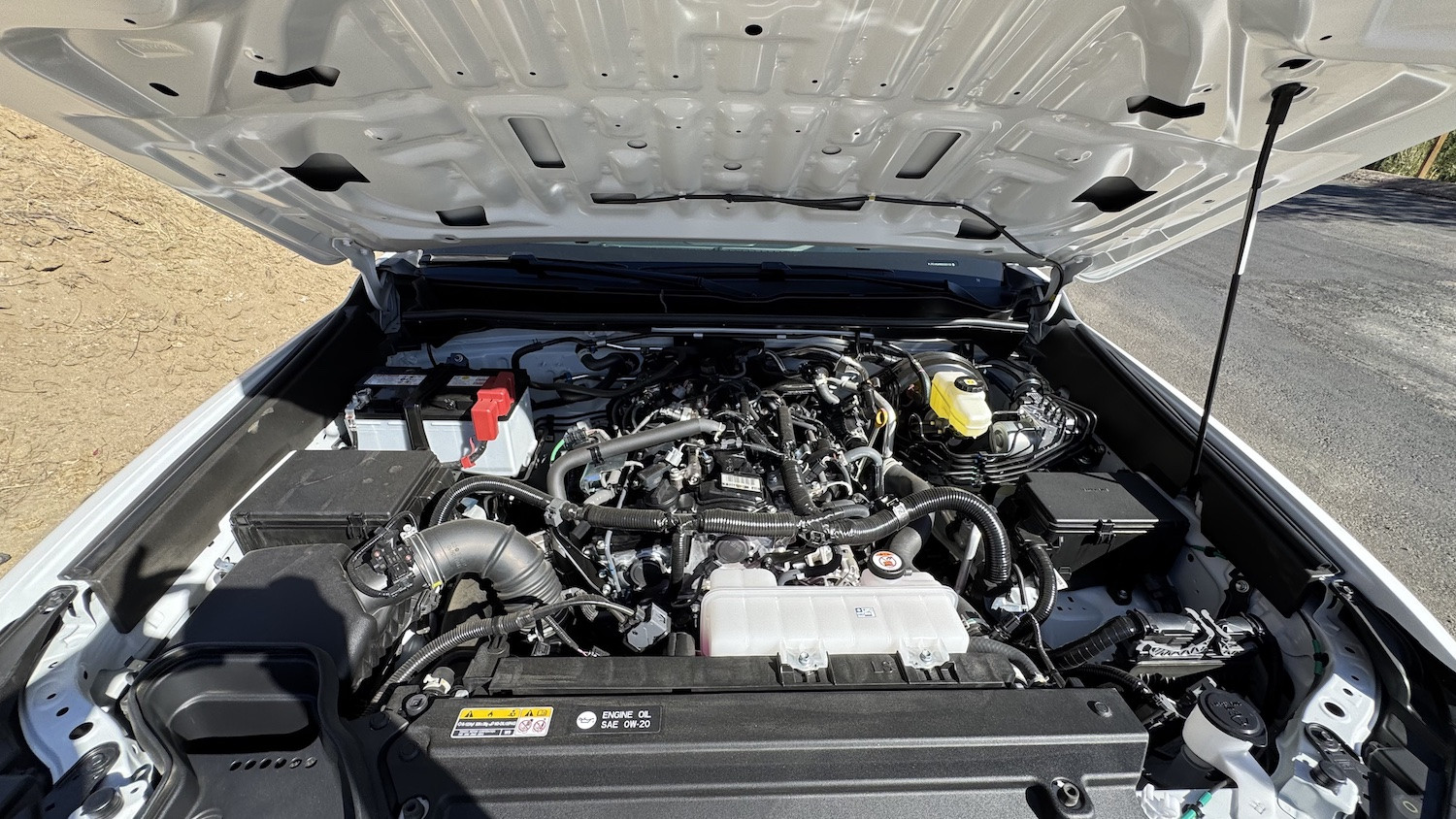 Img 5897
Img 5897
Third-row seating, priced at $600, is available only for the SR5 and non-hybrid Limited models. The hybrid battery, positioned under the rear cargo area, significantly reduces space, making third-row configurations incompatible with hybrid powertrains. This space constraint is evident in the Trailhunter model:
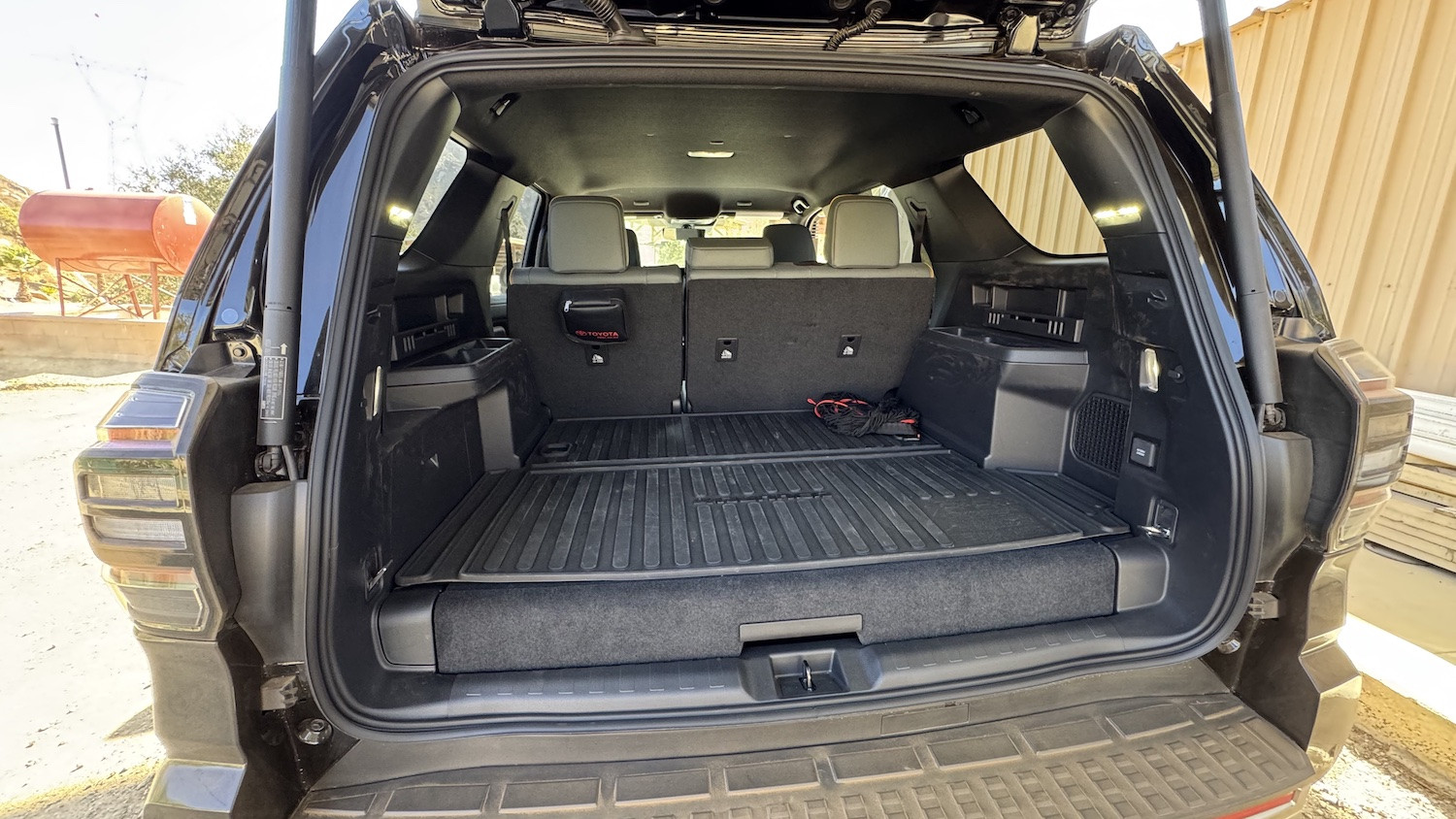 4runner 5920
4runner 5920
In contrast, the non-hybrid SR5, which can accommodate a third row, showcases a noticeably lower rear cargo floor. While the TRD Sport and TRD Off-Road non-hybrid versions could technically house a third row, Toyota historically limits this option to the Limited and SR5 trims, based on customer demand and dealer feedback. This configuration difference is visually clear when comparing the cargo space:
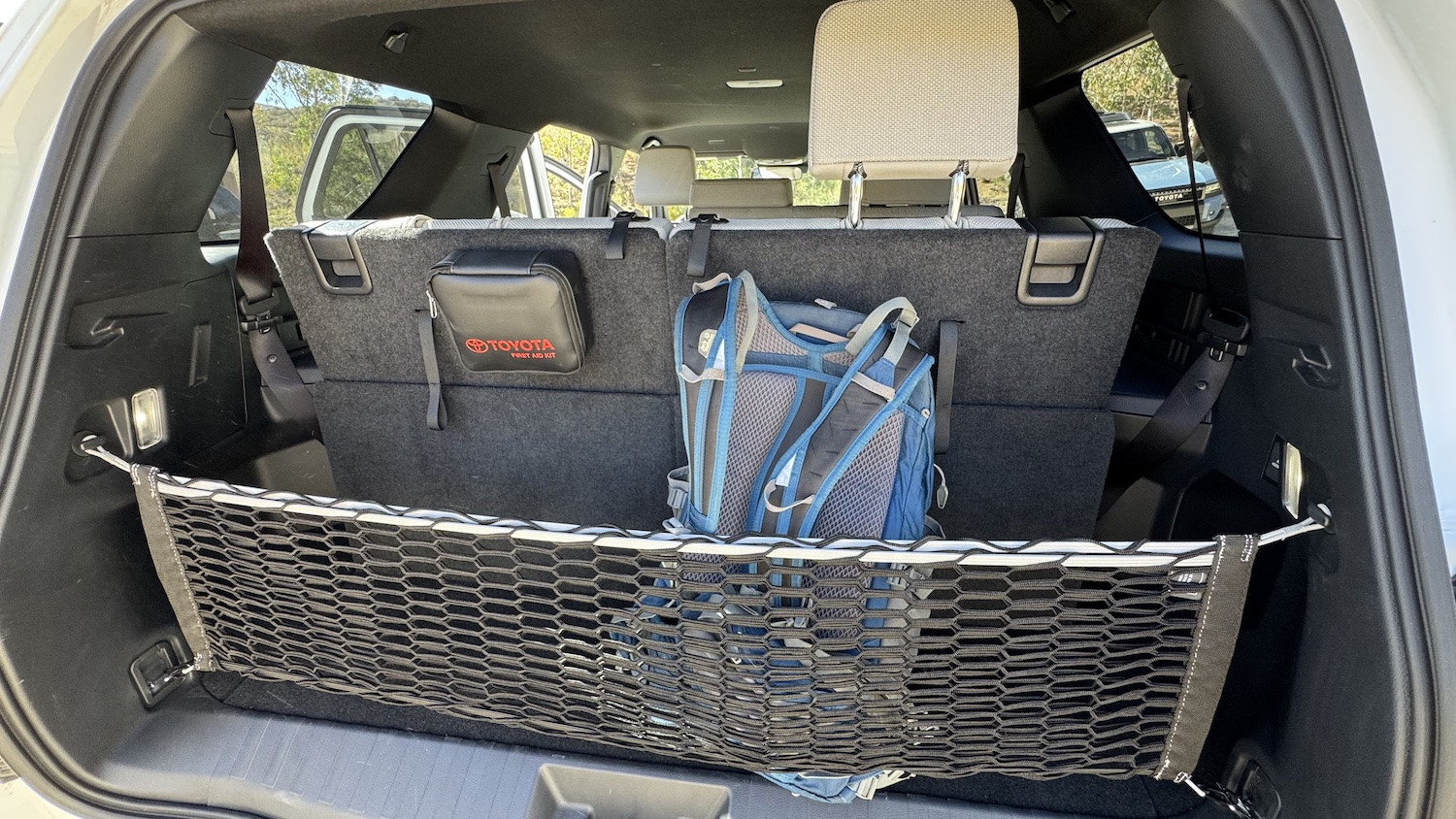 4runner 5903
4runner 5903
Platform and Suspension Deep Dive: TNGA-F Underpinnings
Delving into the 4Runner’s construction, the familiar TNGA-F platform is apparent. The front suspension design closely mirrors that of the Tacoma:
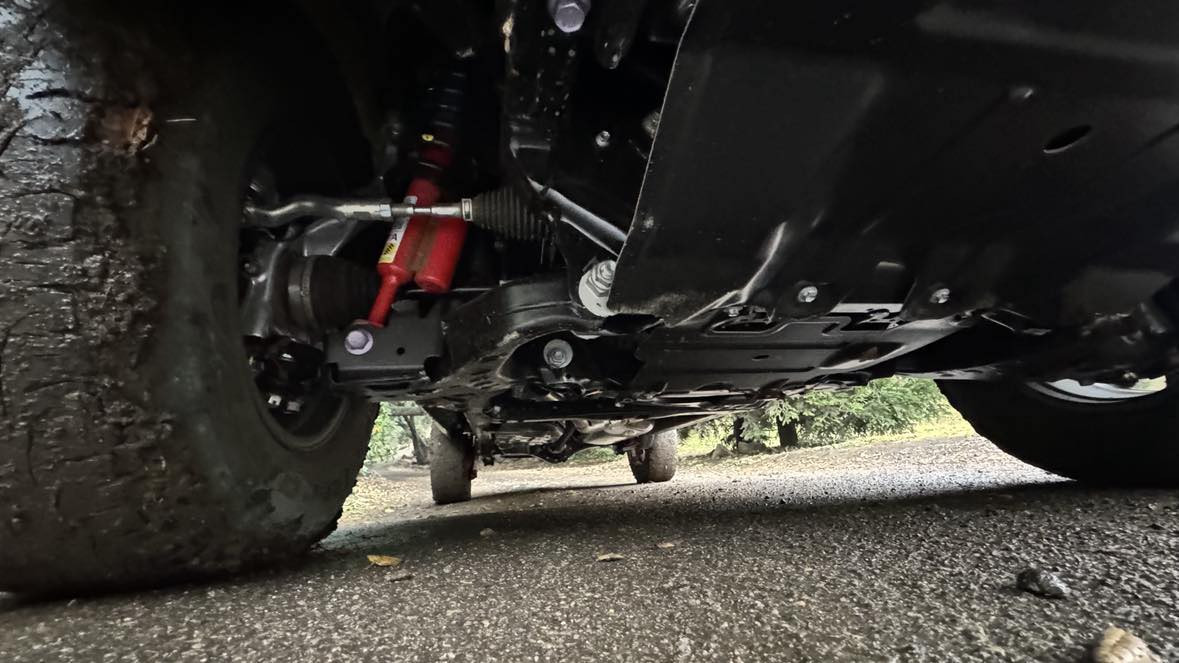 474501055 897935238892303 5046041520326498010 N
474501055 897935238892303 5046041520326498010 N
And the Land Cruiser:
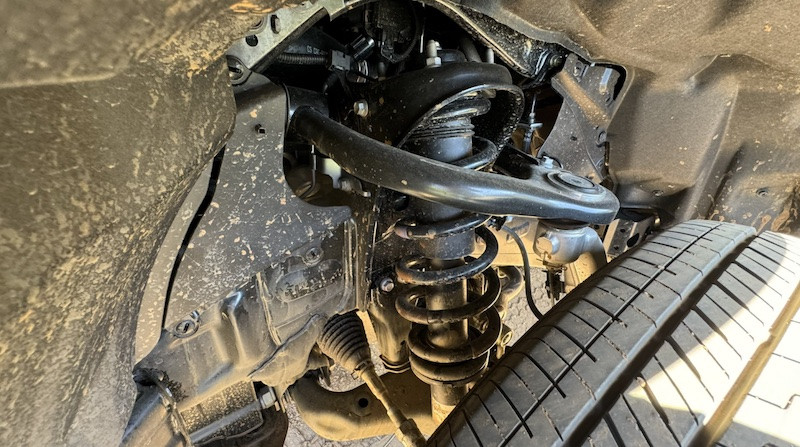 Land Cruiser 5
Land Cruiser 5
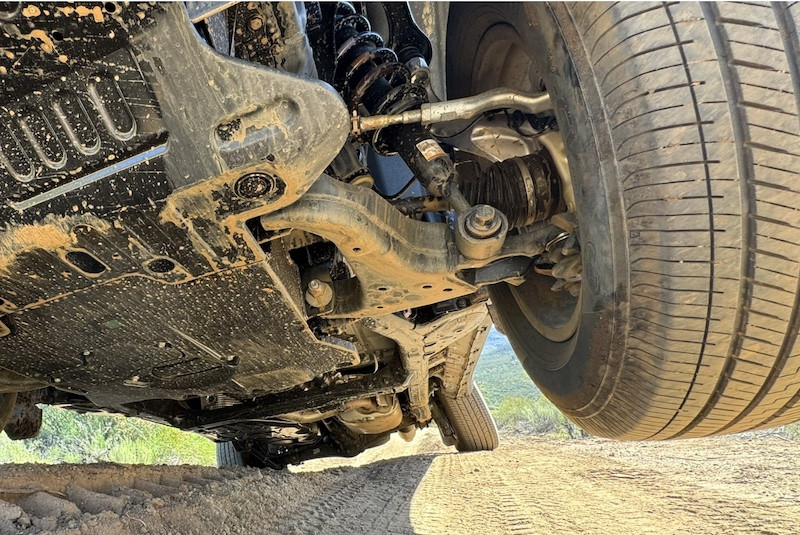 Land Cruiser 6
Land Cruiser 6
The new 4Runner’s front suspension shares this fundamental architecture:
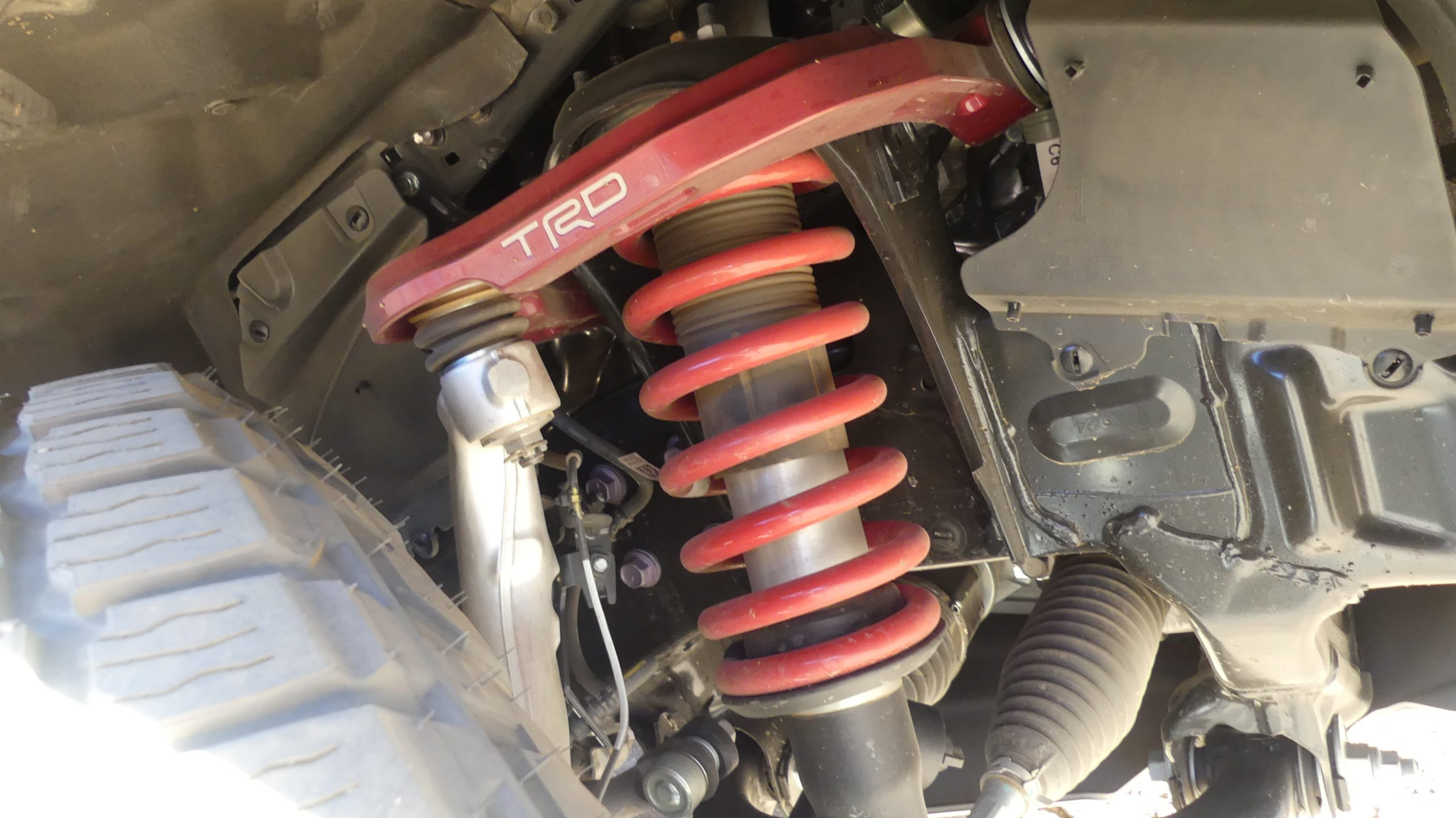 P1030247
P1030247
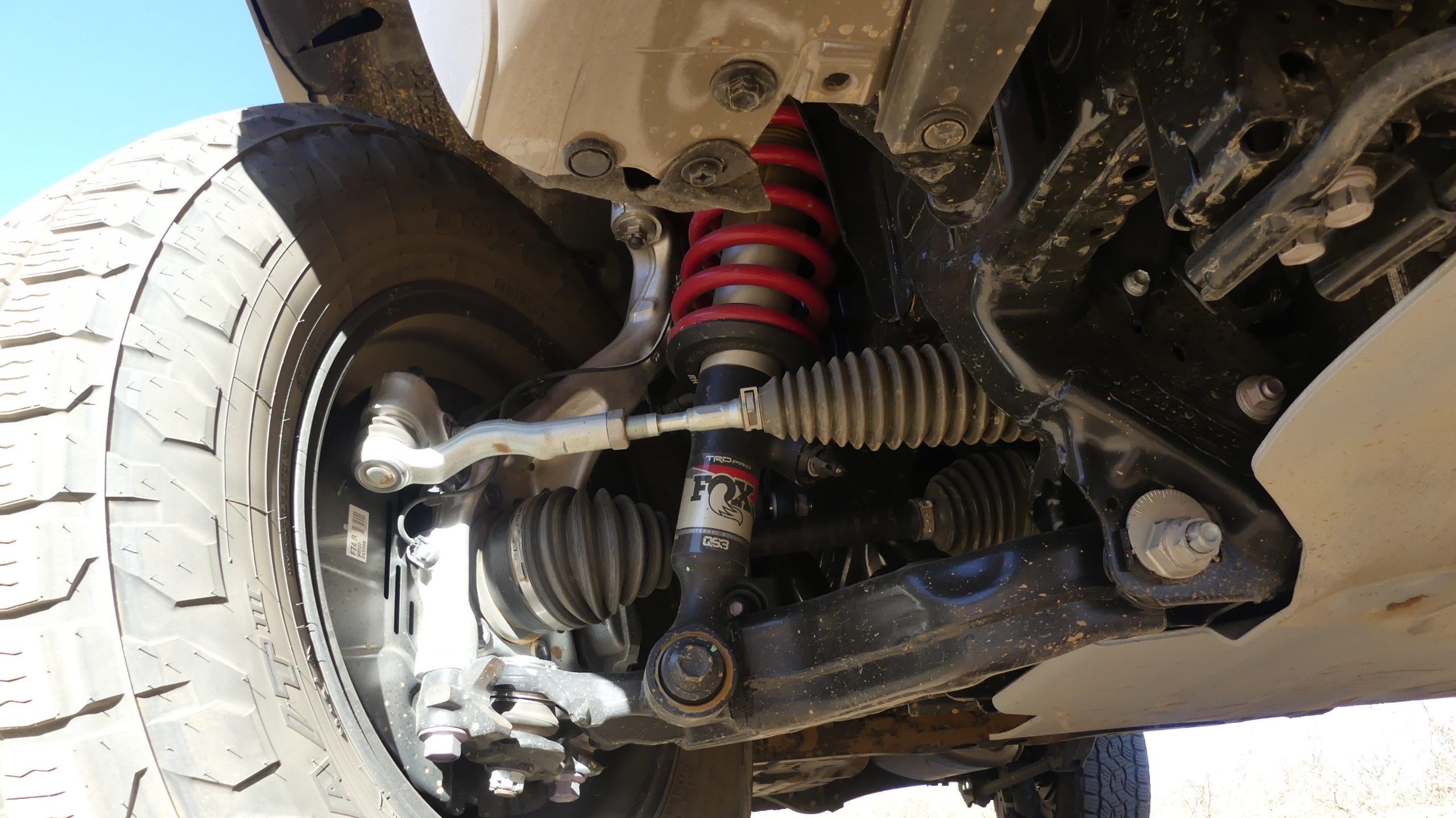 P1030252
P1030252
While control arm designs vary across trims, and link geometries differ, the core suspension mounting points on the frame remain consistent across these TNGA-F platform vehicles. The fundamental design—double-wishbone independent front suspension with coilovers—is shared, along with the coil-sprung solid rear axle.
The Tacoma’s rear suspension setup:
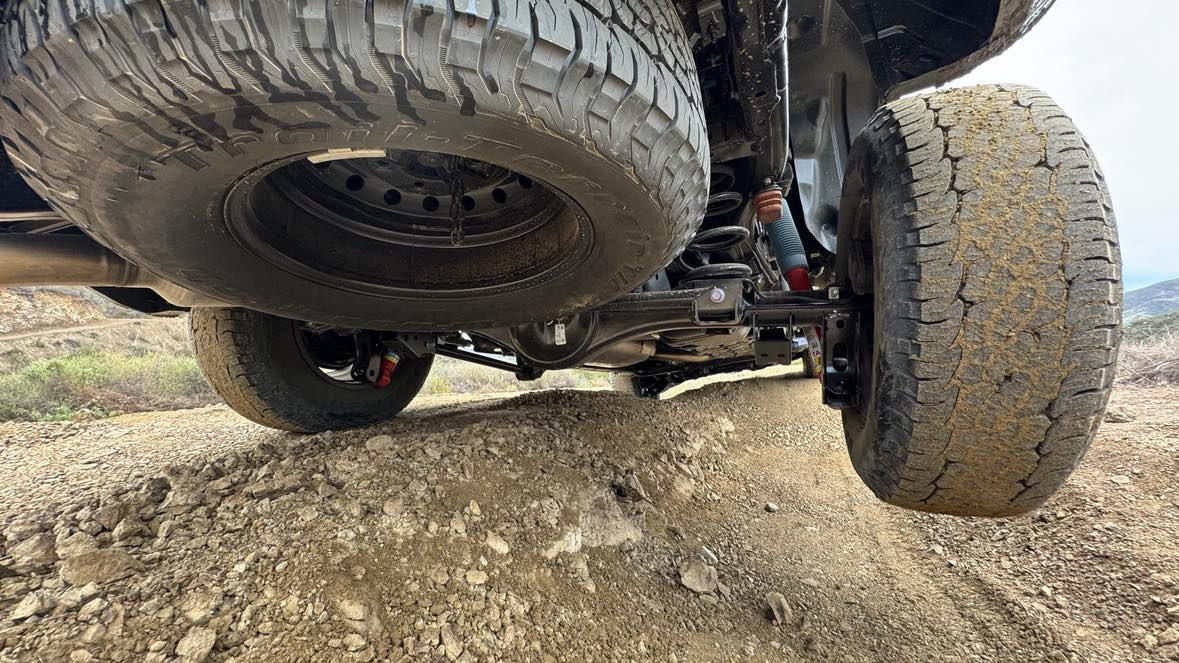 474882033 2095725720860637 2144529389440388280 N
474882033 2095725720860637 2144529389440388280 N
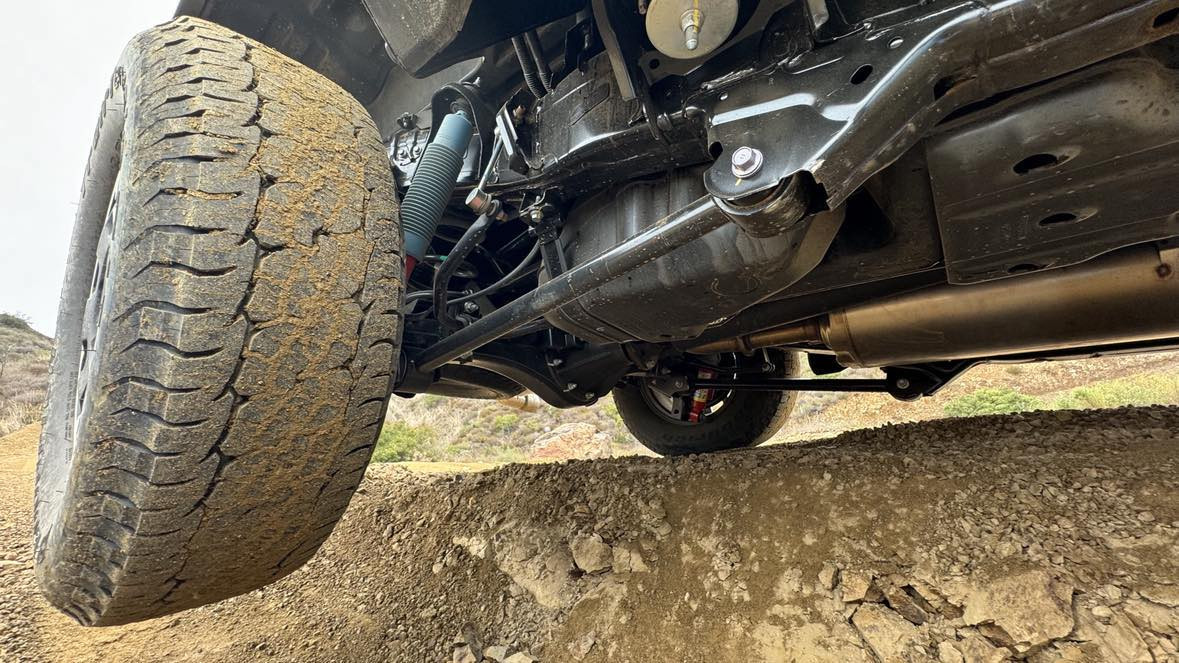 475038630 552884564429661 6029326705291672447 N
475038630 552884564429661 6029326705291672447 N
The Land Cruiser’s rear suspension:
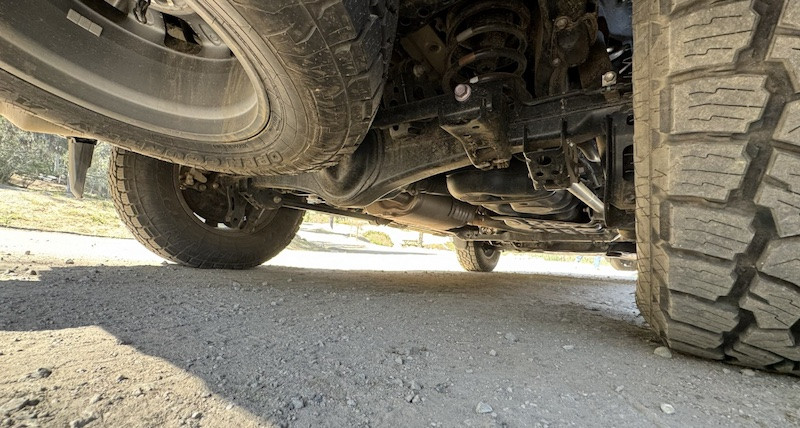 Land Cruiser 8
Land Cruiser 8
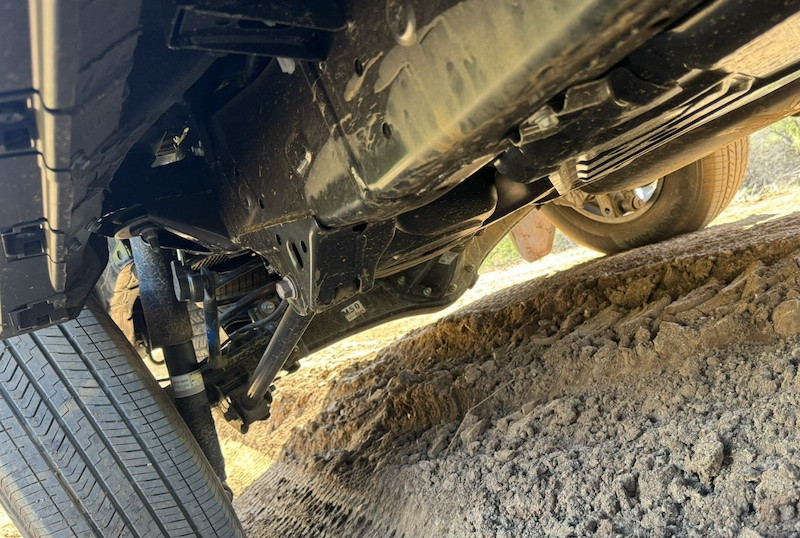 Land Cruiser 65
Land Cruiser 65
And finally, the 4Runner’s rear suspension:
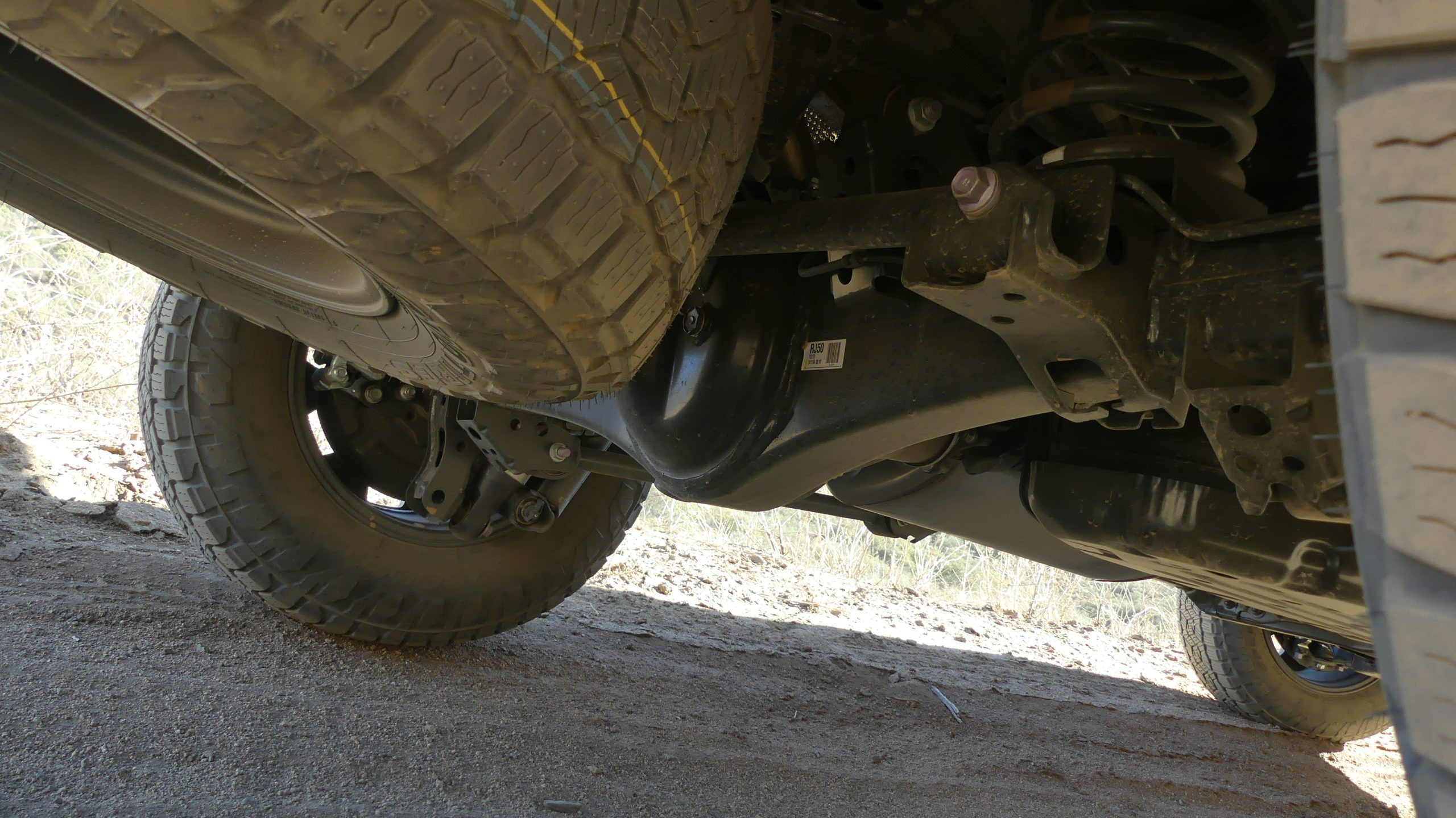 P1030251
P1030251
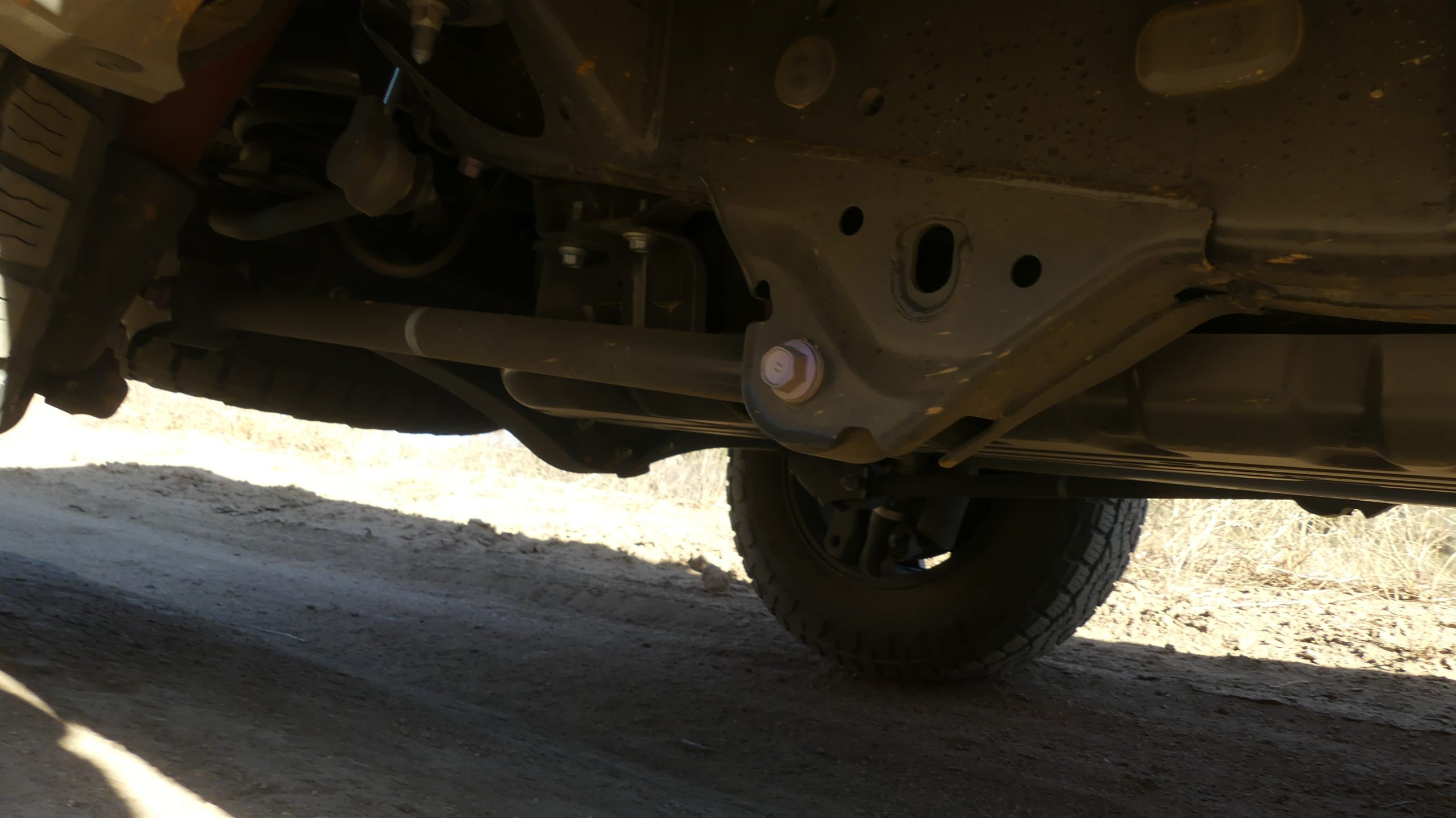 P1030250
P1030250
Dimensionally, the 4Runner and Land Cruiser are quite similar. The Land Cruiser measures 194 inches long, 84.2 inches wide, and 73.2 inches tall. The 4Runner is approximately an inch longer, nearly the same width, and the height of the Limited, TRD Sport, and Platinum trims is comparable to the Land Cruiser. Even ground clearance is roughly equivalent between the Land Cruiser and these specific 4Runner trims.
Both vehicles share a 6,000-pound towing capacity and a combined fuel economy of 23 MPG for hybrid models. Non-hybrid 4Runners, however, slightly reduce fuel efficiency by one to two combined MPG.
Driving Dynamics: On-Road and Off-Road Impressions
 Img 5834
Img 5834
The driving experience event commenced in downtown San Diego, where a 4Runner TRD Pro was the first test vehicle. The interior layout closely mirrors the Toyota Tacoma, featuring a prominent 14-inch touchscreen and a 12.3-inch digital gauge cluster. The cabin design is robust, with blocky “TOYOTA” lettering, a substantial shift lever, a thick passenger grab handle, and durable, albeit hard, interior materials.
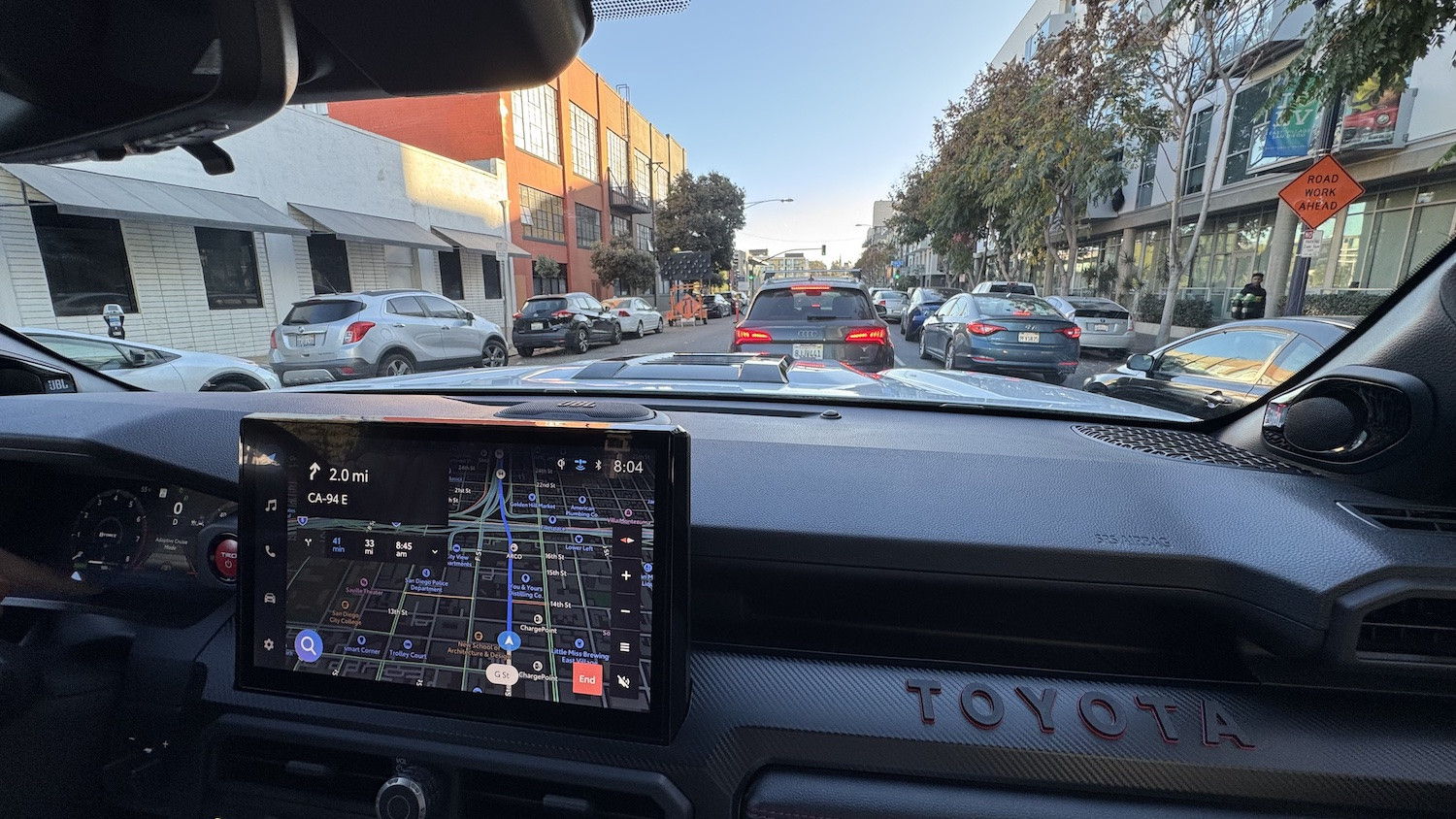 4runner 5842
4runner 5842
Pre-production TRD Pro models exhibited some minor trim imperfections, such as fitment issues near the glovebox. While agility and speed weren’t particularly impressive, the ride quality was commendable for a large SUV riding on 33-inch tires. Handling, as expected, was not razor-sharp given the vehicle’s size and off-road focus.
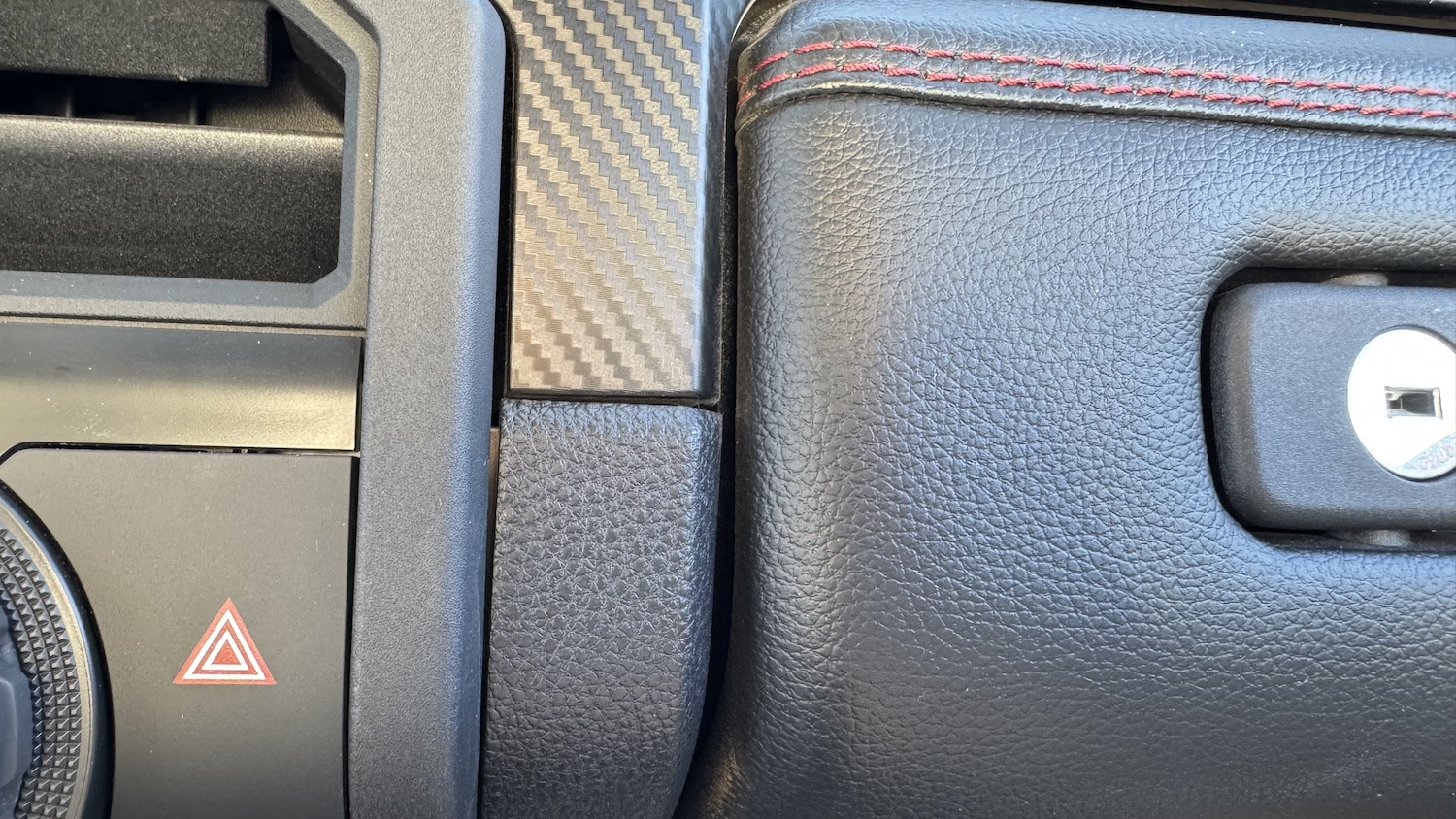 4runner 5843
4runner 5843
The TRD Pro’s prominent, non-functional hood scoop exhibited noticeable shaking at highway speeds, a trait also observed in the Tacoma. The extensive use of piano black plastic on the TRD Pro’s exterior trim is prone to swirl marks, detracting from the vehicle’s otherwise rugged aesthetic.
 4runner 5844
4runner 5844
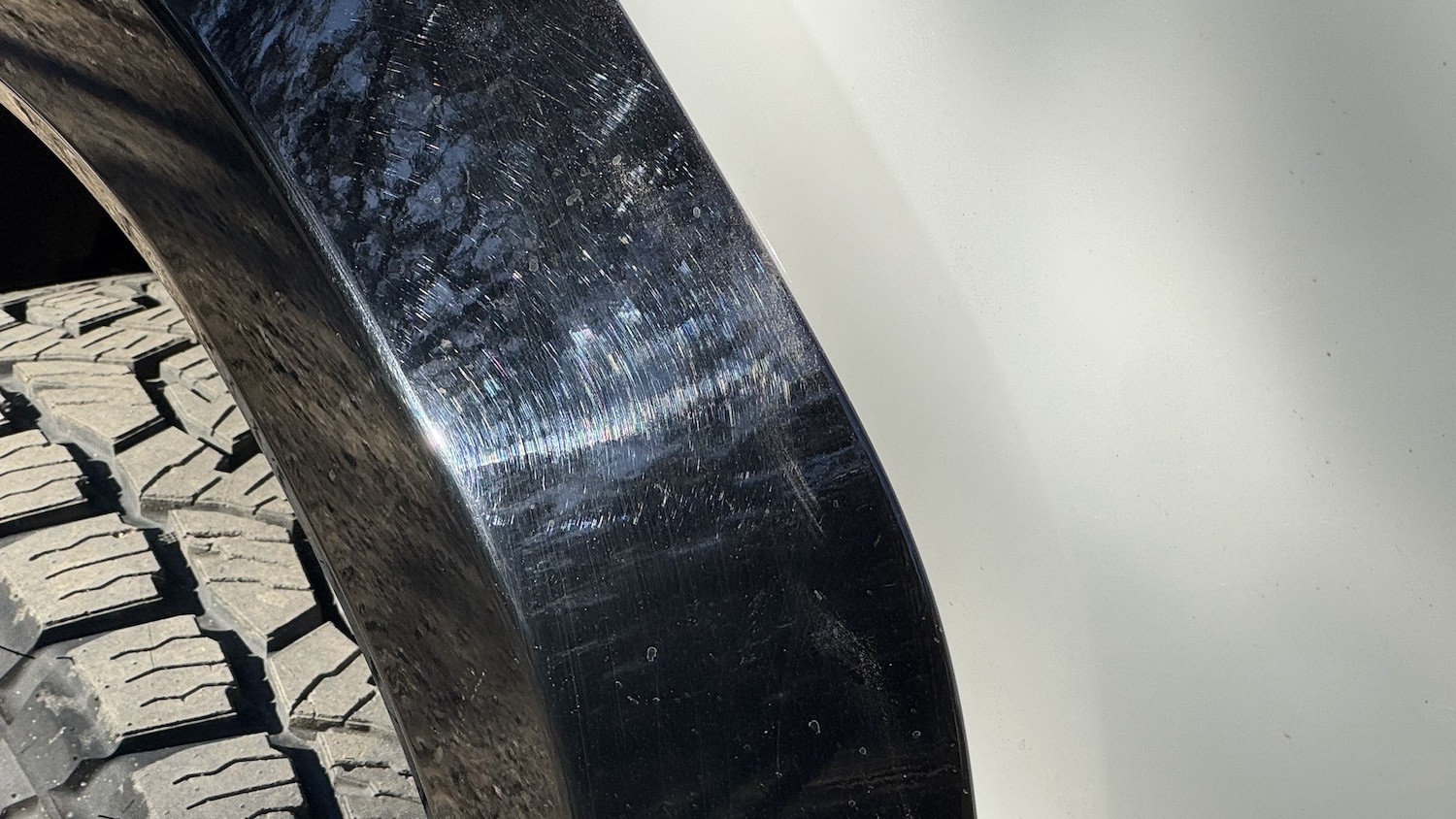 4runner 5846
4runner 5846
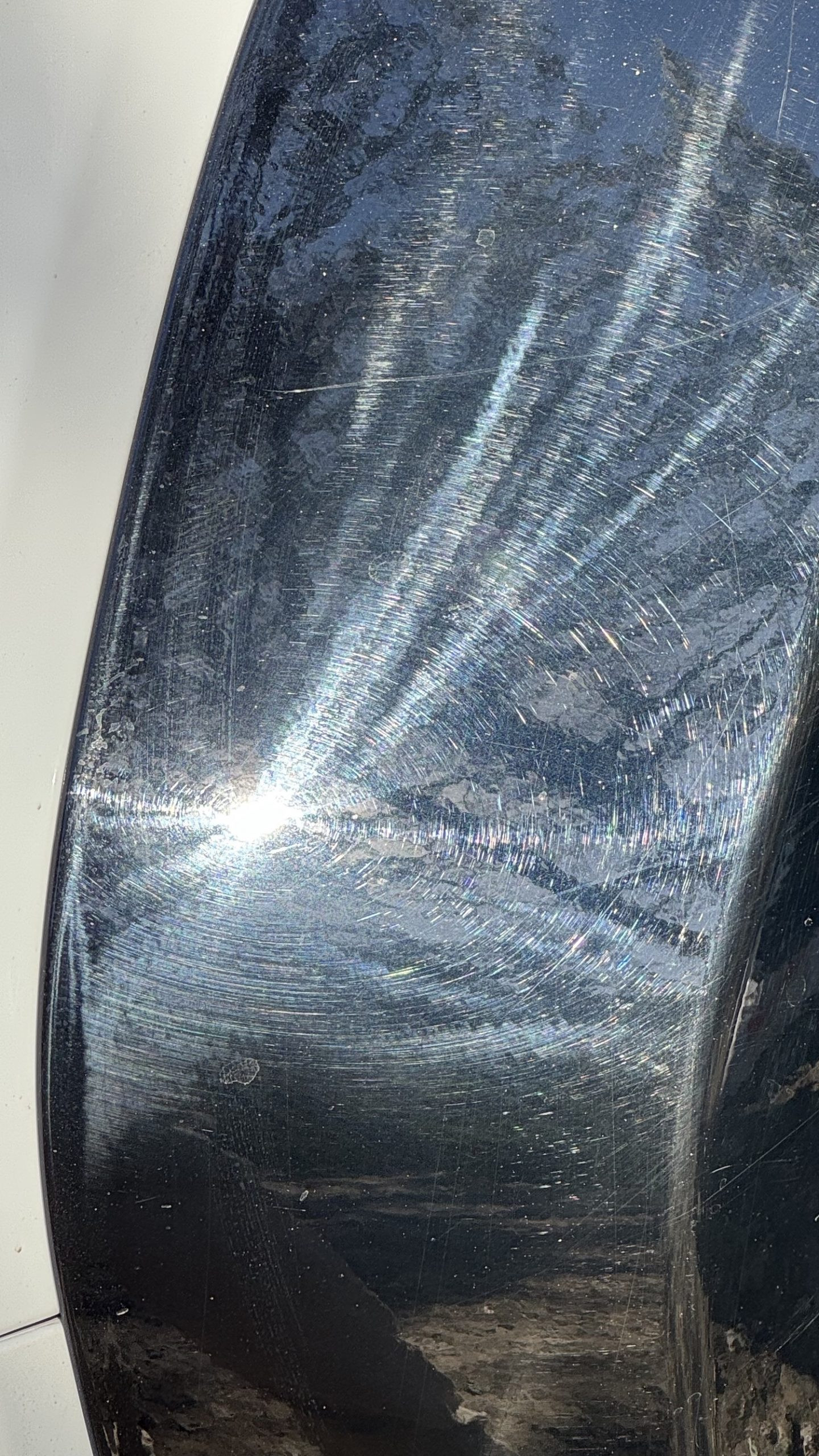 4runner 5851
4runner 5851
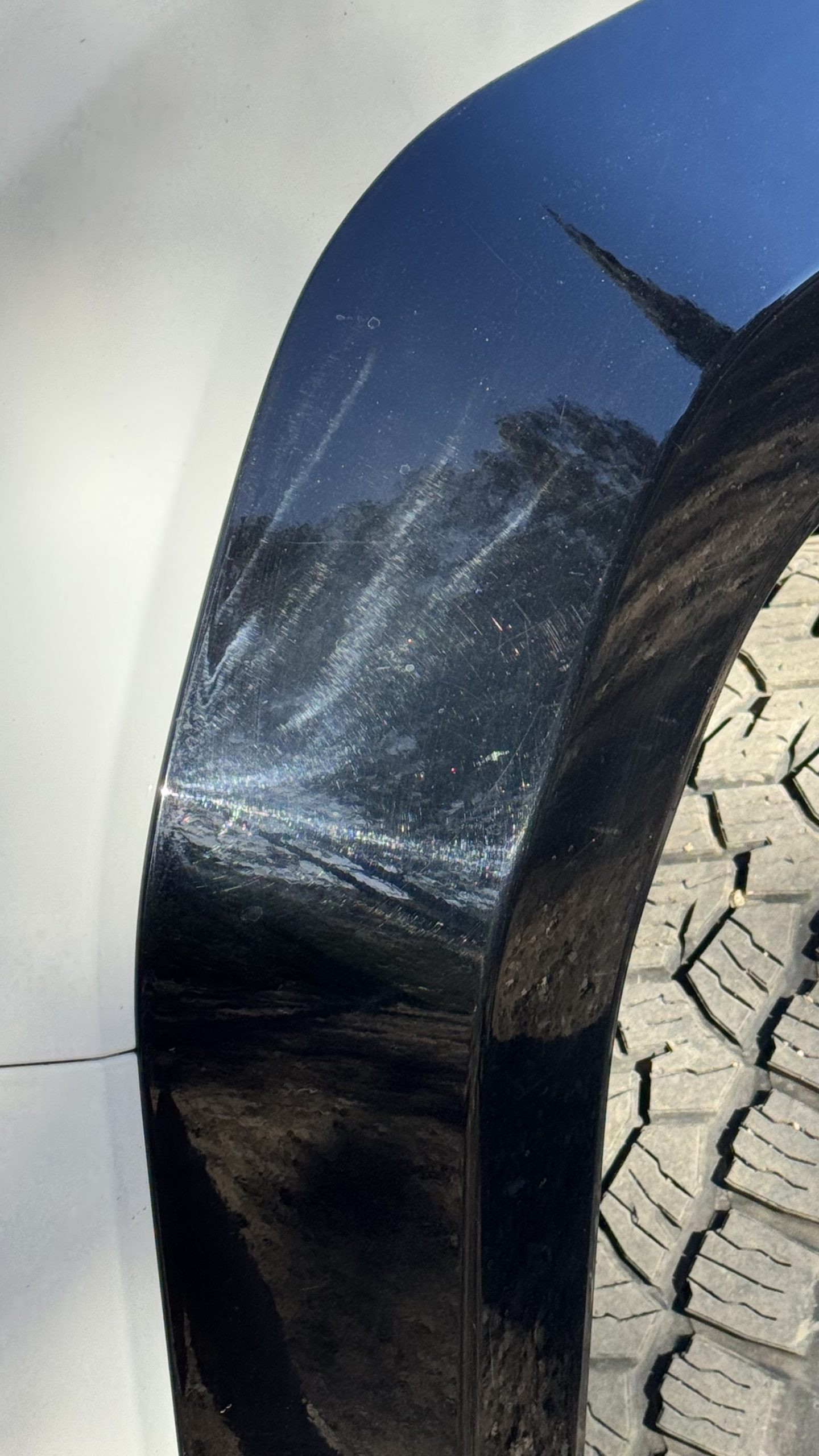 4runner 5850
4runner 5850
 4runner 5848
4runner 5848
The Surprisingly Appealing Base Model 4Runner SR5
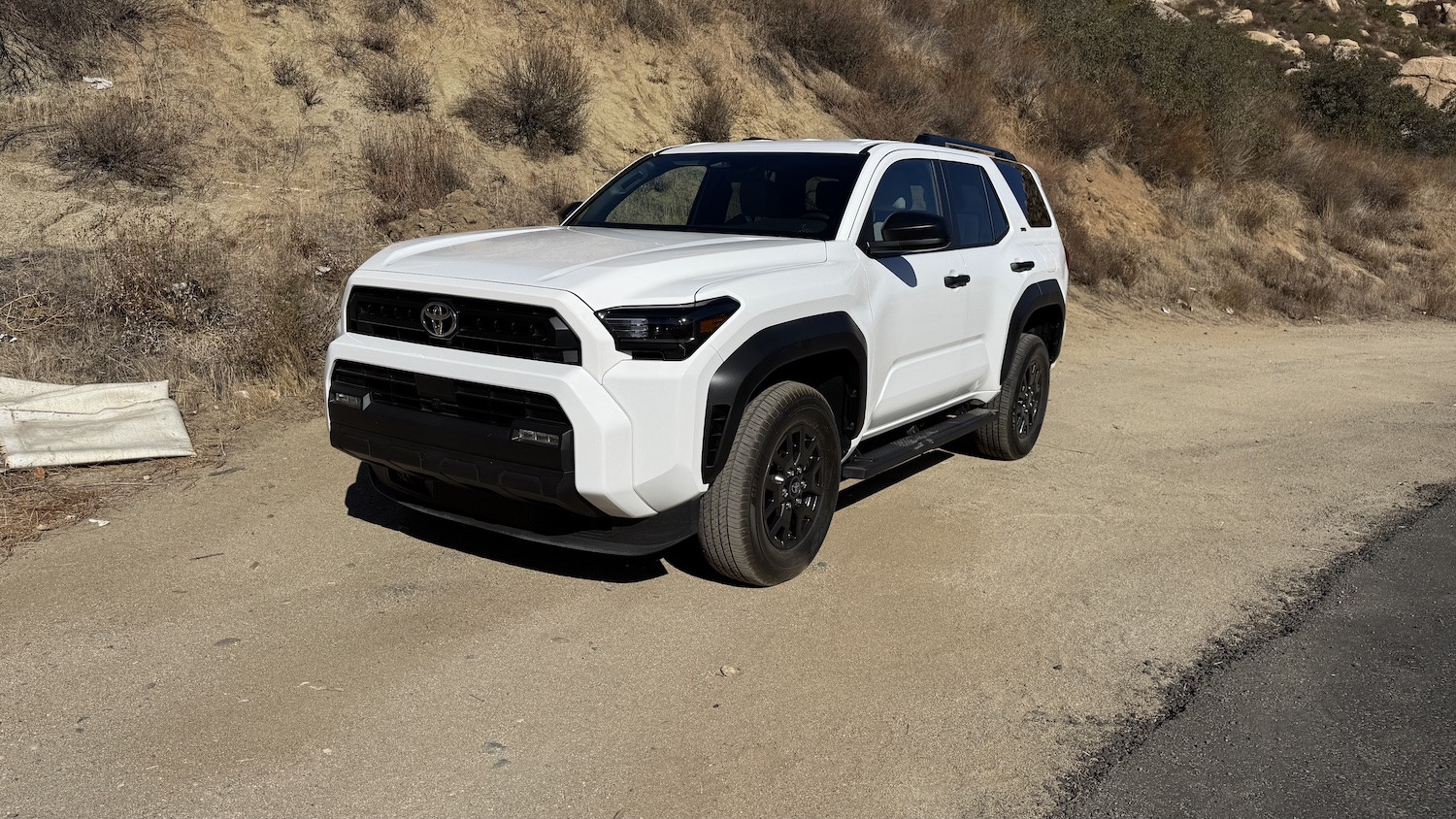 4runner 5893
4runner 5893
The base-model 4Runner SR5, with a two-wheel-drive configuration and an approximate $43,000 price tag, proved to be a pleasant surprise. On paved roads, the SR5 stood out as the most enjoyable 4Runner variant tested. Weighing in at 4,455 pounds—a significant 1,000 pounds lighter than the TRD Pro—the SR5 felt noticeably more agile. The 278 horsepower, 317 lb-ft 2.4-liter non-hybrid turbo engine delivered performance comparable to, if not slightly better than, the more powerful TRD Pro. The SR5 felt smaller, lower to the ground, and more nimble overall.
The 2.4-liter turbocharged inline-four engine is adequate in power, though somewhat buzzy and unremarkable in character. The eight-speed automatic transmission shifts smoothly and efficiently. While the powertrain is functional, it lacks the distinctiveness of some previous 4Runner engines.
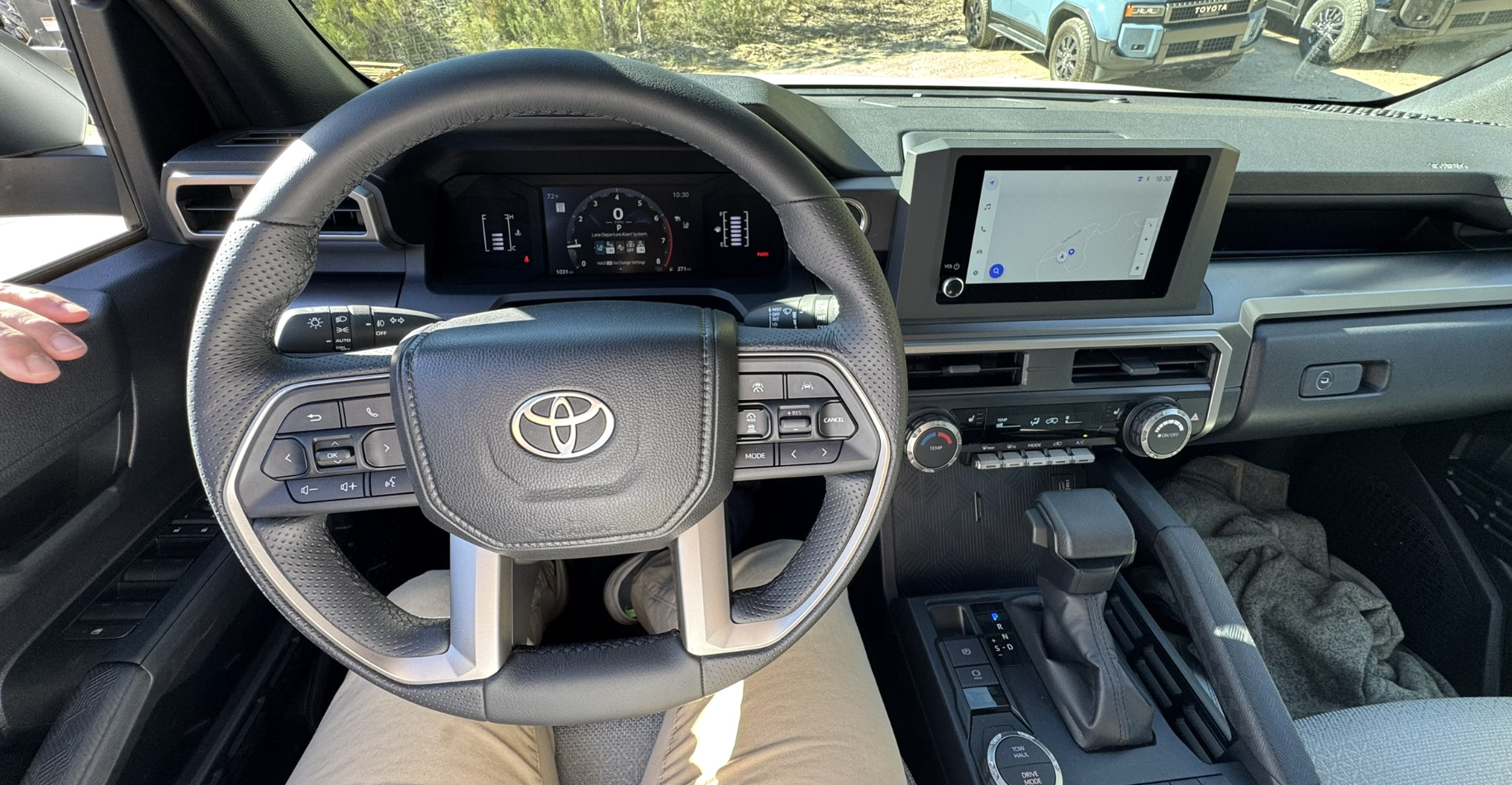 Screen Shot 2025 01 27 At 8.27.54 Pm
Screen Shot 2025 01 27 At 8.27.54 Pm
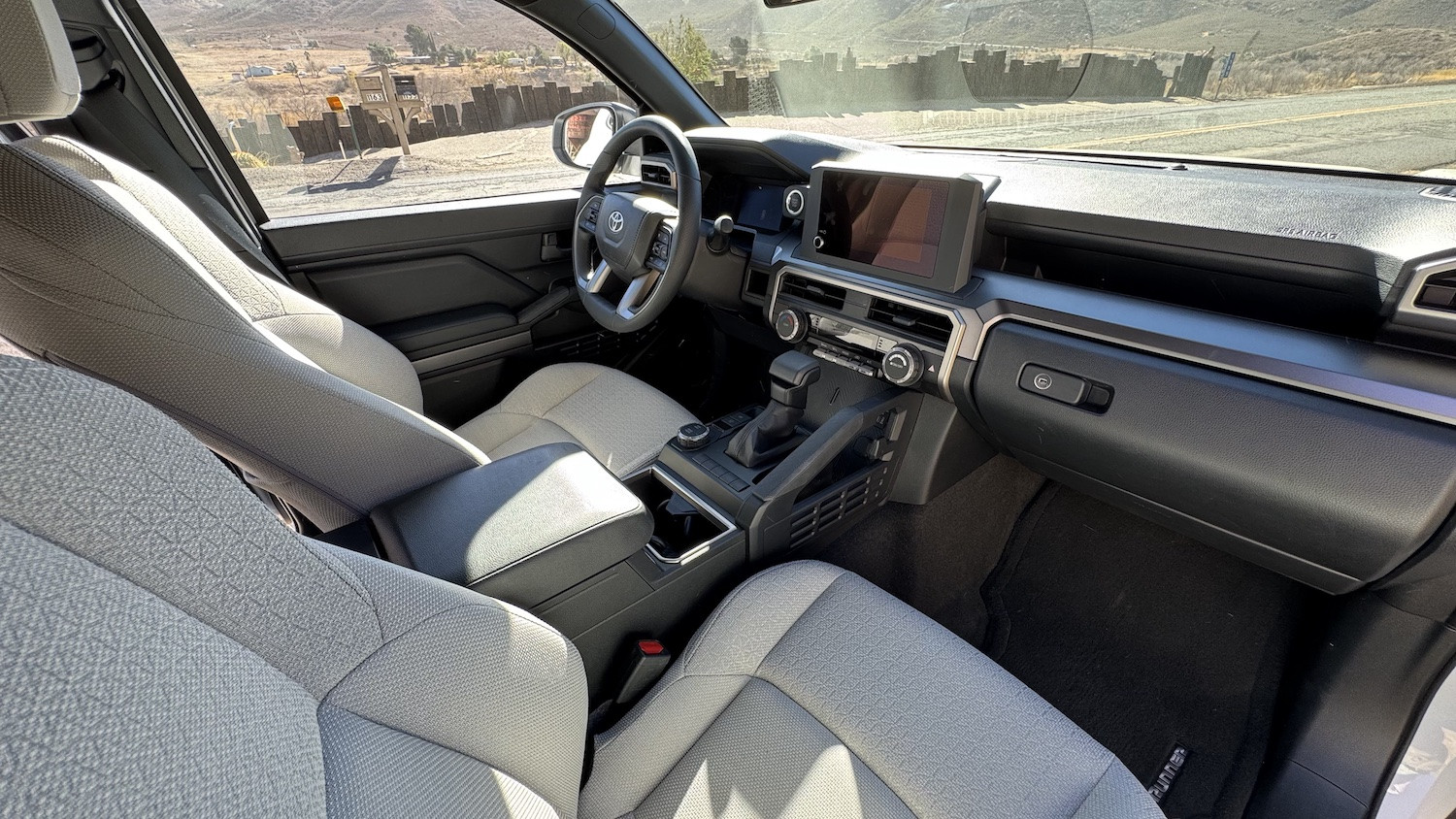 4runner 5888
4runner 5888
The SR5’s interior features an eight-inch touchscreen, which is sufficiently sized and arguably more integrated in appearance than the larger 14-inch screen in higher trims. The light cloth seats are both aesthetically pleasing and comfortable.
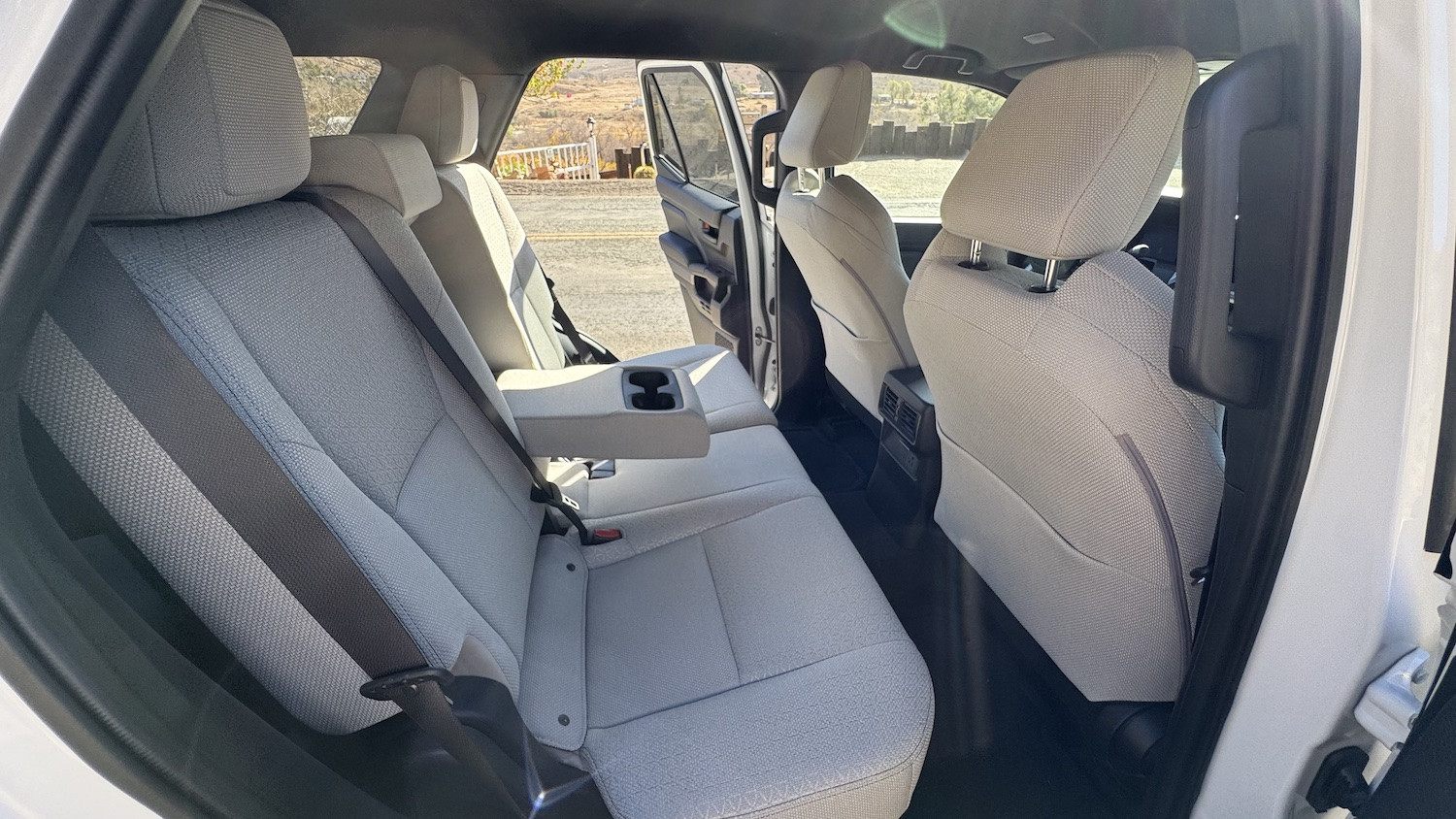 4runner 5887
4runner 5887
Third-Row Access and Space in the SR5
The optional third-row seating in the SR5 is a notable feature, reminiscent of the “jump seats” in previous 4Runner generations. Due to the solid rear axle’s articulation and the resulting high rear floor, the third-row seats are positioned low and fold down and backward when not in use.
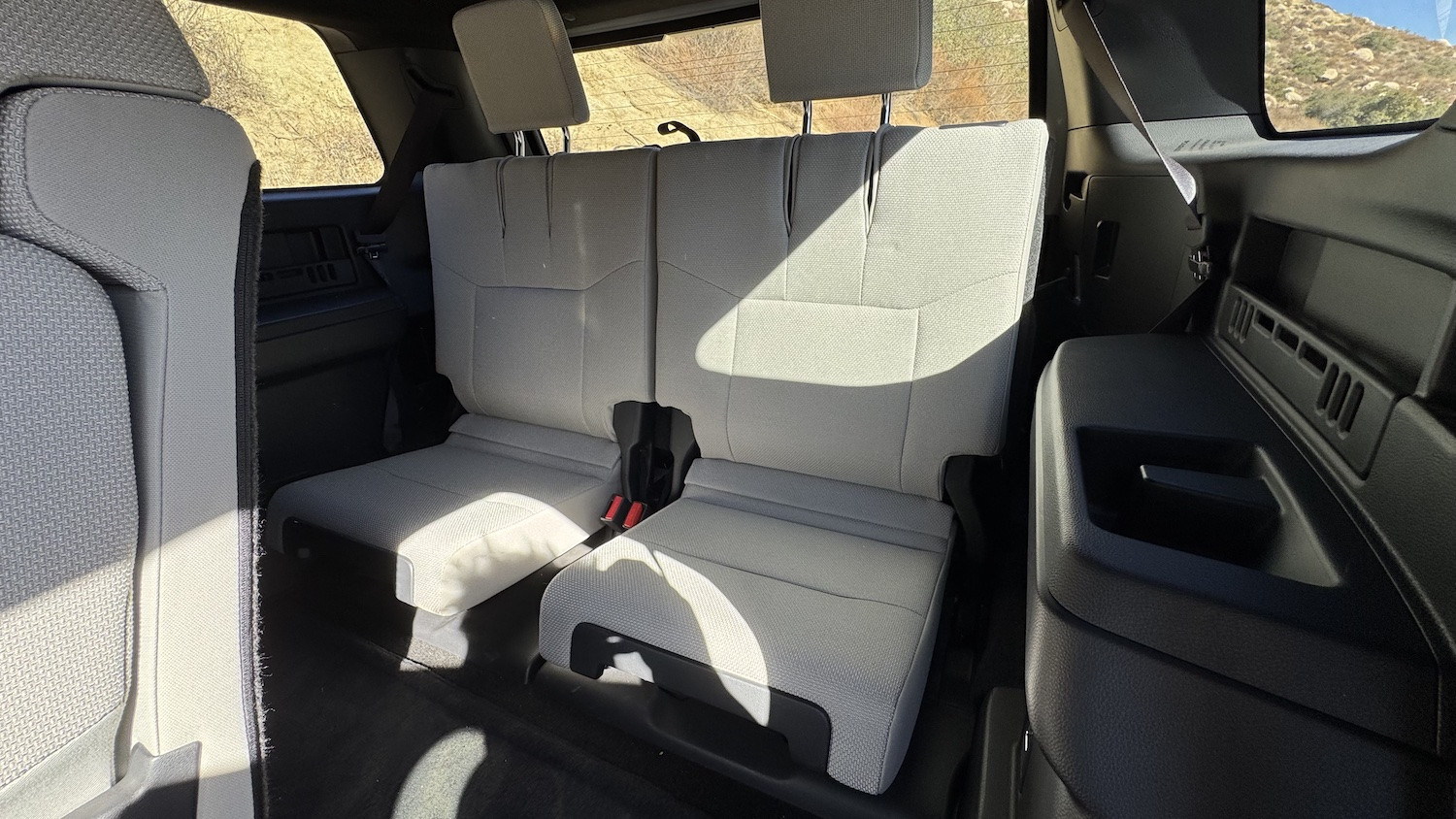 4runner 5865
4runner 5865
Access to the third row via the second row is somewhat restricted by the rear wheel arch, but folding the second row forward with a simple lever makes entry manageable.
 4runner 5875
4runner 5875
When folded flat, the third-row seats integrate relatively seamlessly into the cargo floor.
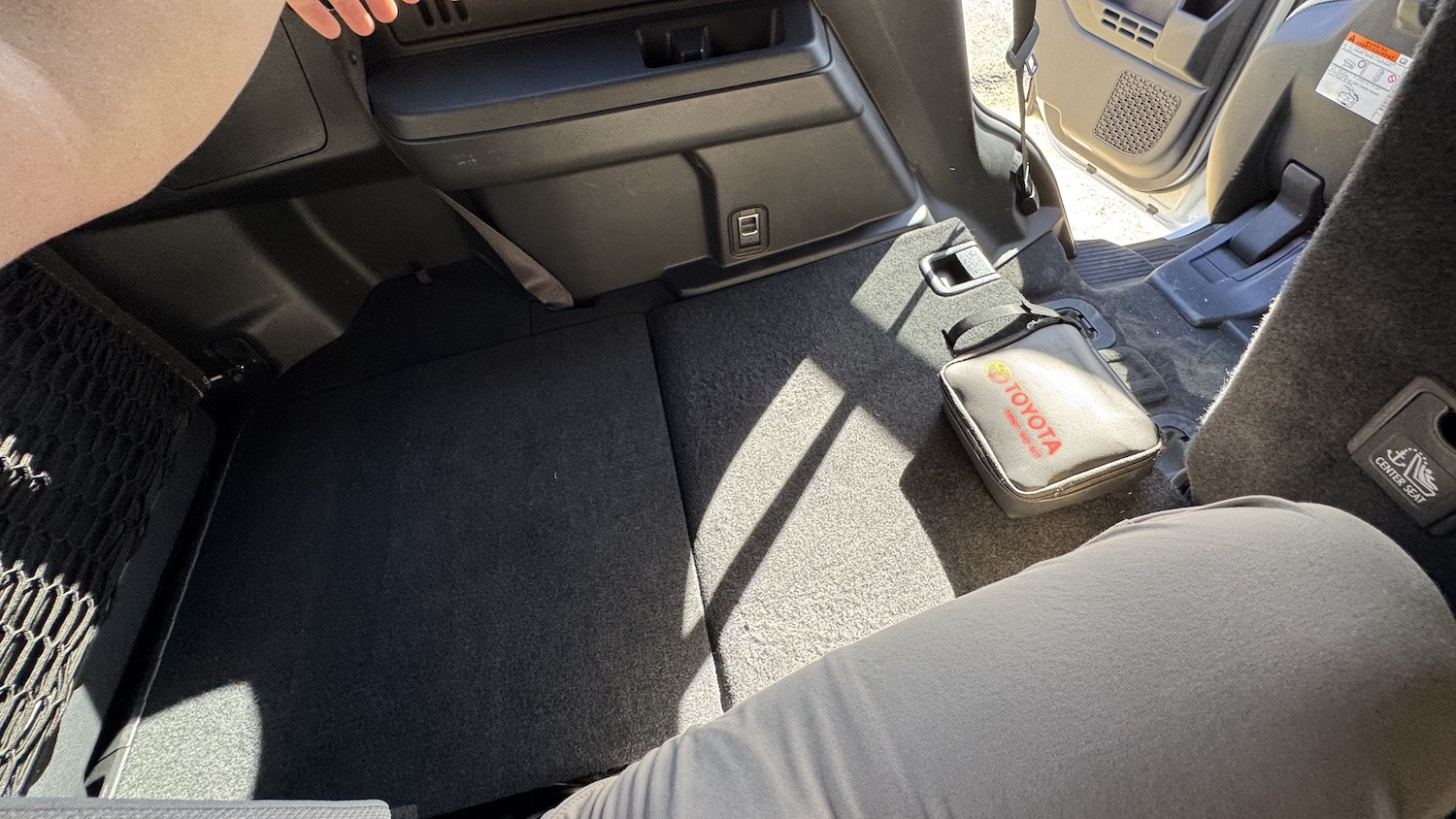 4runner 5883
4runner 5883
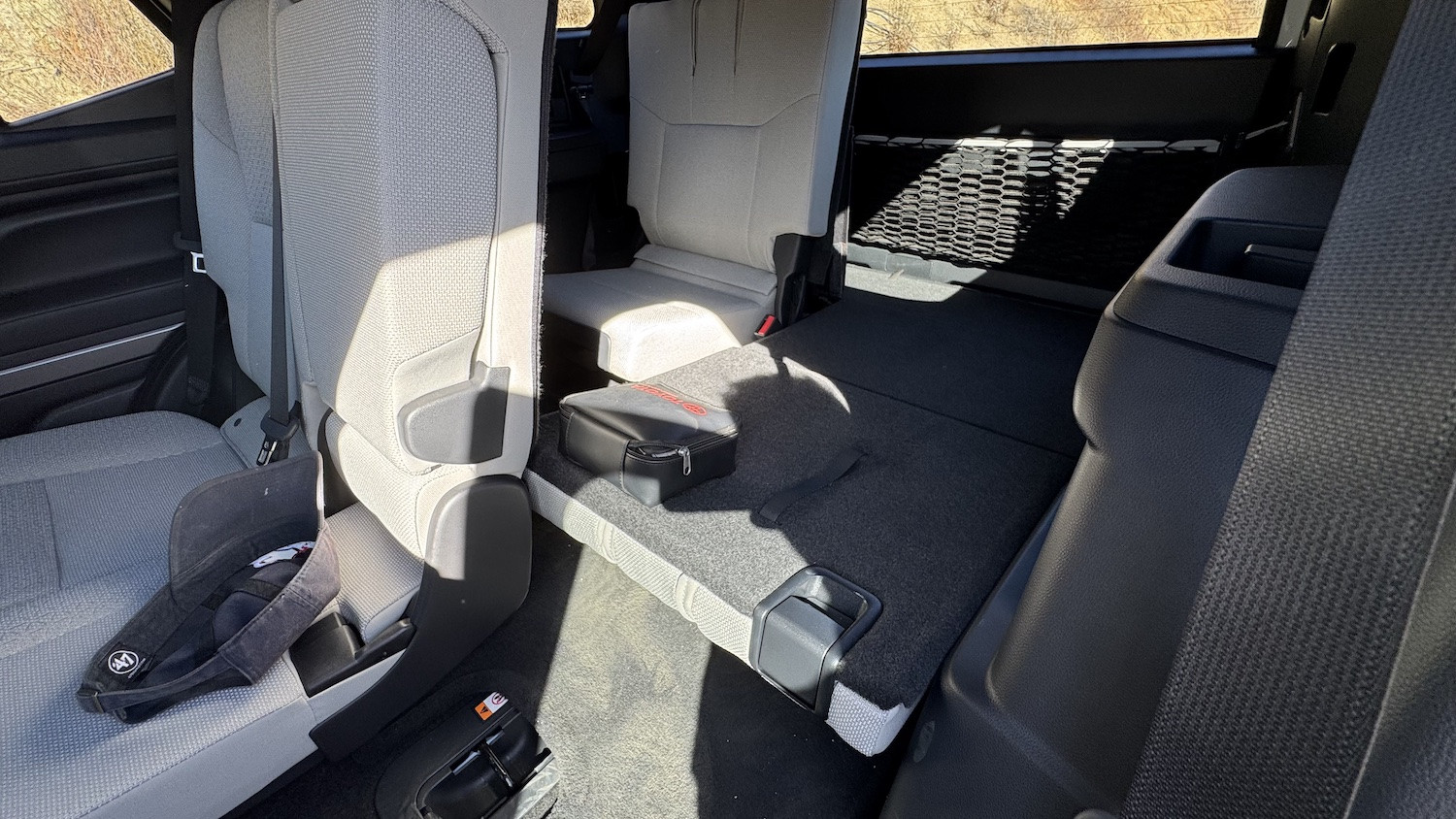 4runner 5867
4runner 5867
Releasing and raising the third-row seatbacks can be done using either a handle or a strap.
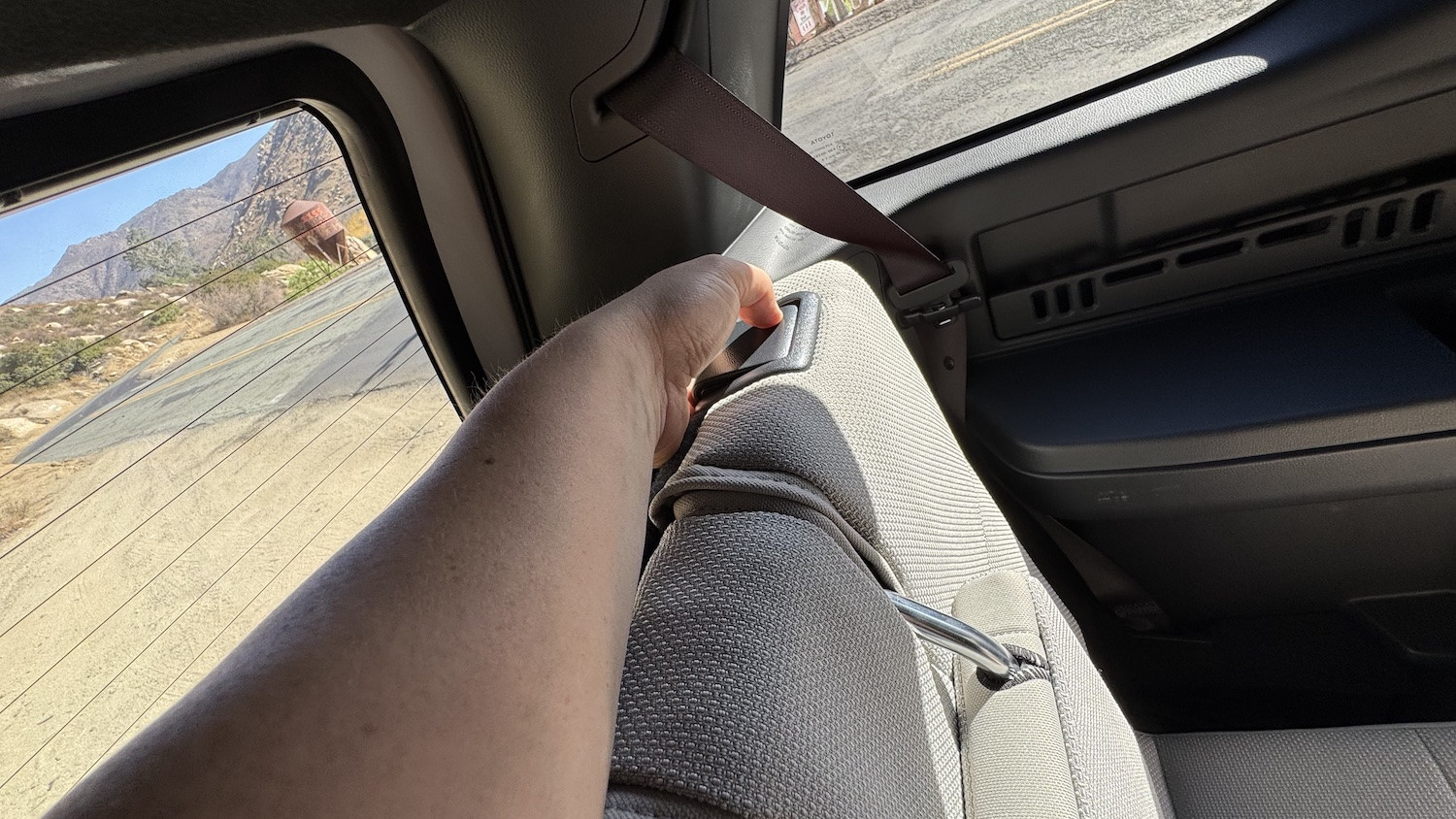 4runner 5881
4runner 5881
The seat cushion slots down below the floor level when folded.
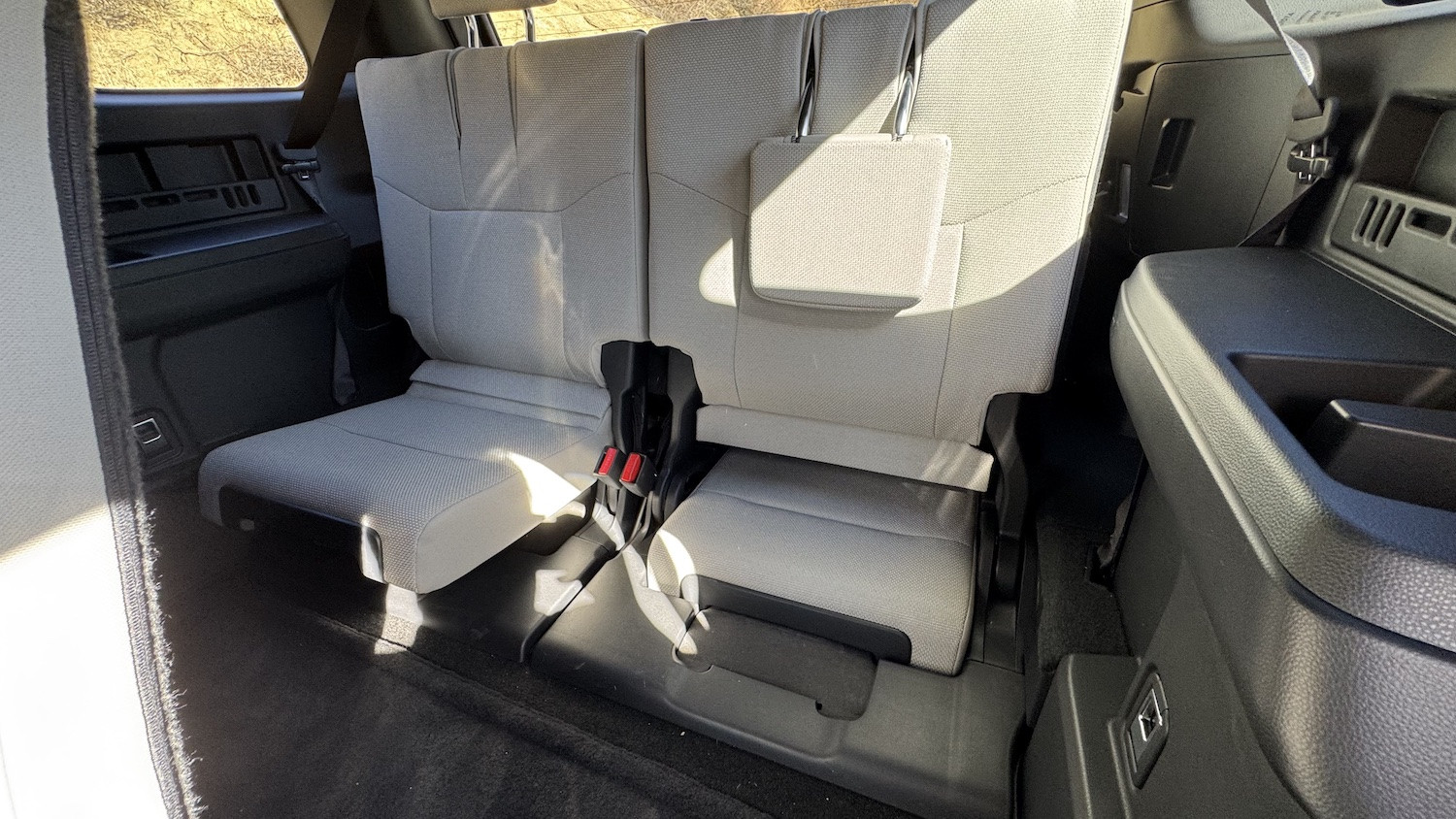 4runner 5868
4runner 5868
A rubber barrier is present when accessing the seat.
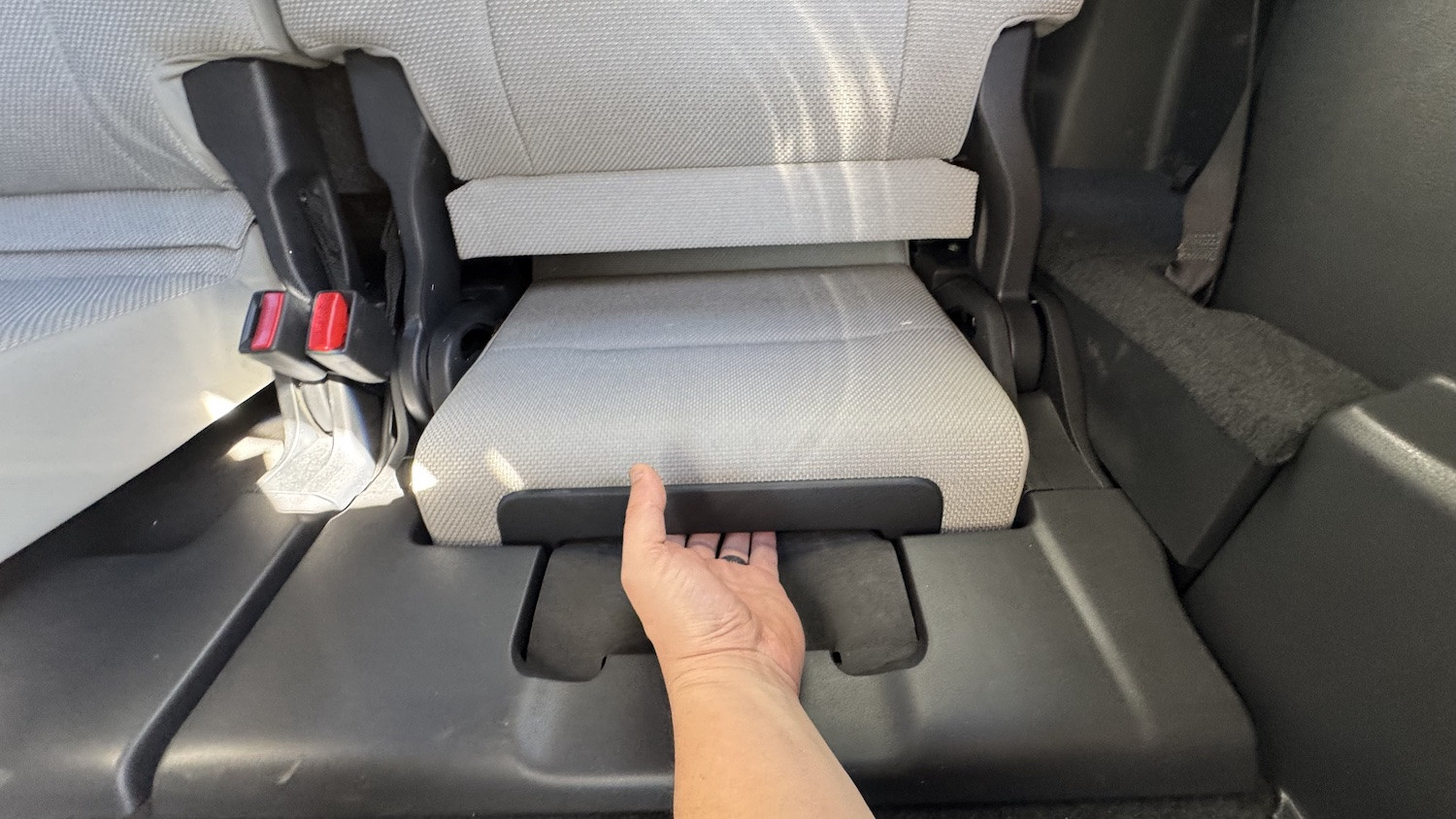 4runner 5869
4runner 5869
Once raised, the jump seat is revealed.
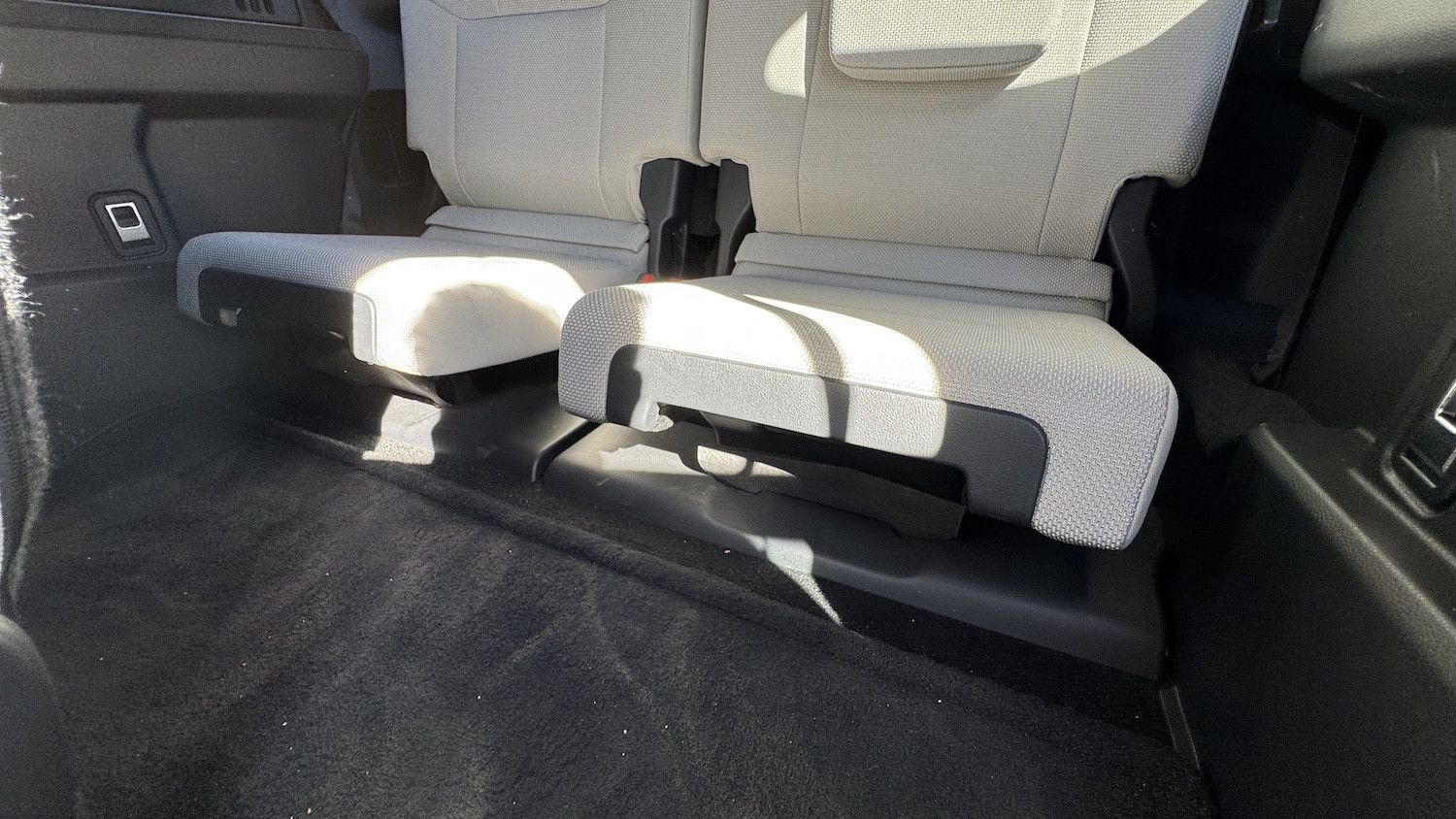 4runner 5870
4runner 5870
At five-foot eight-inches tall, legroom in the third row is somewhat limited, suitable for short trips but potentially cramped for longer journeys.
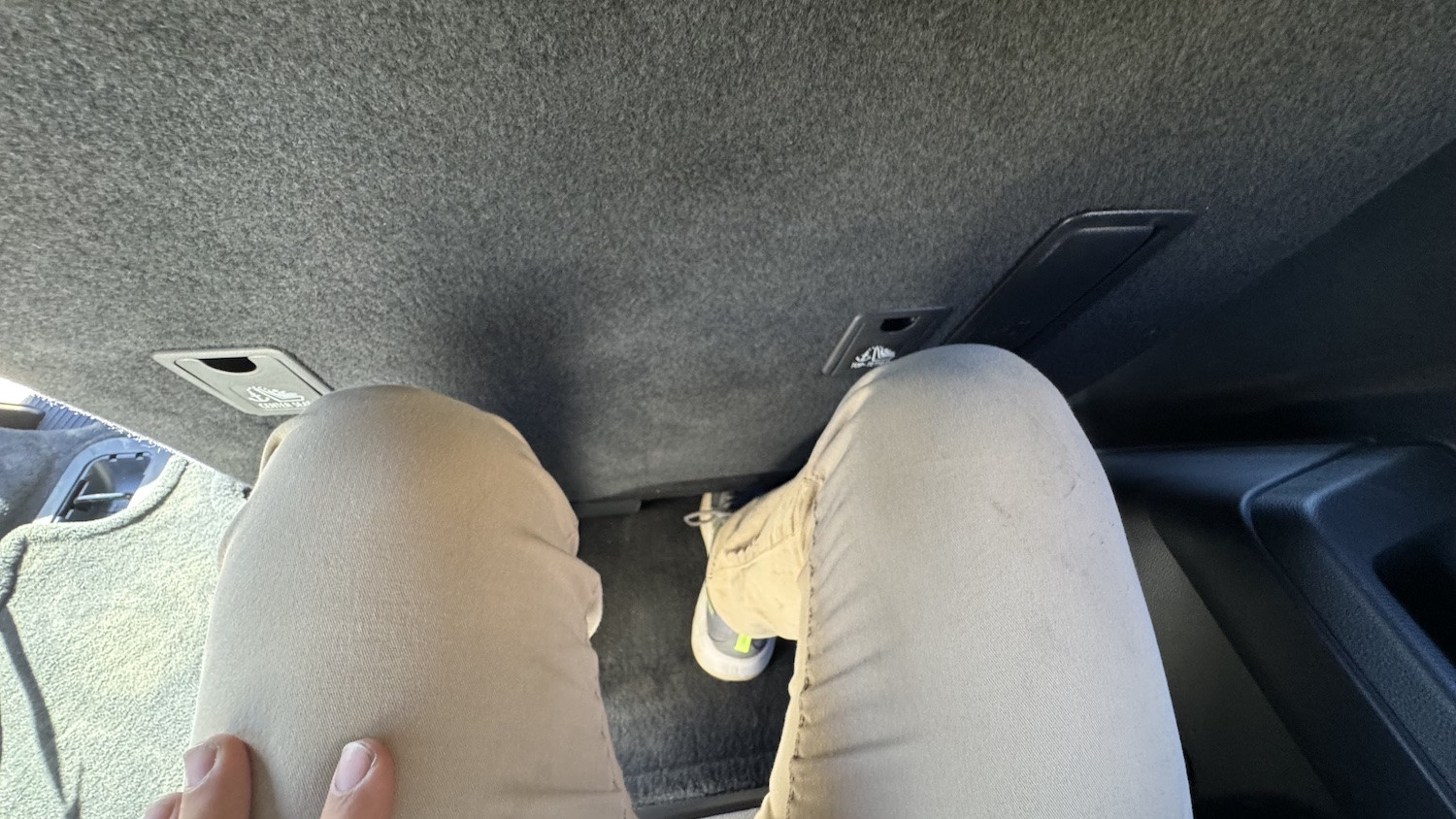 4runner 5876
4runner 5876
Headroom is also a constraint for adults, with limited vertical space. The third row is best suited for children and smaller teenagers.
 4runner 5877
4runner 5877
Off-Road Prowess of the 4Runner Trailhunter
The Trailhunter trim represents the “overlanding” focused variant of the 4Runner, contrasting with the “rally” orientation of the TRD Pro. Priced at $68,350, the Trailhunter is a serious off-road machine, equipped with substantial underbody protection, a sway bar disconnect for enhanced front axle articulation, robust 33-inch tires, a rear locker, and a snorkel. The interior is also well-appointed.
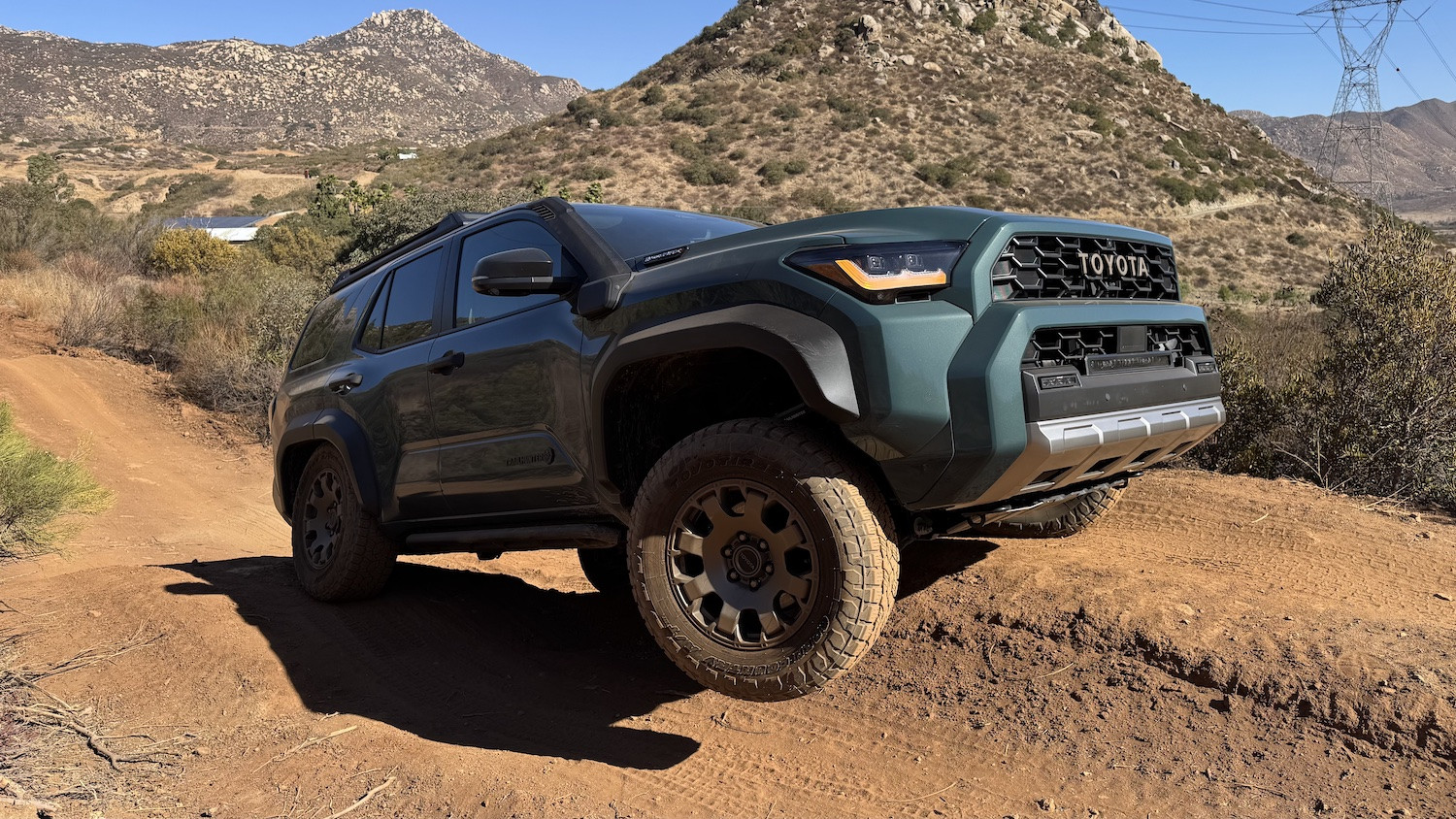 4runner 5928
4runner 5928
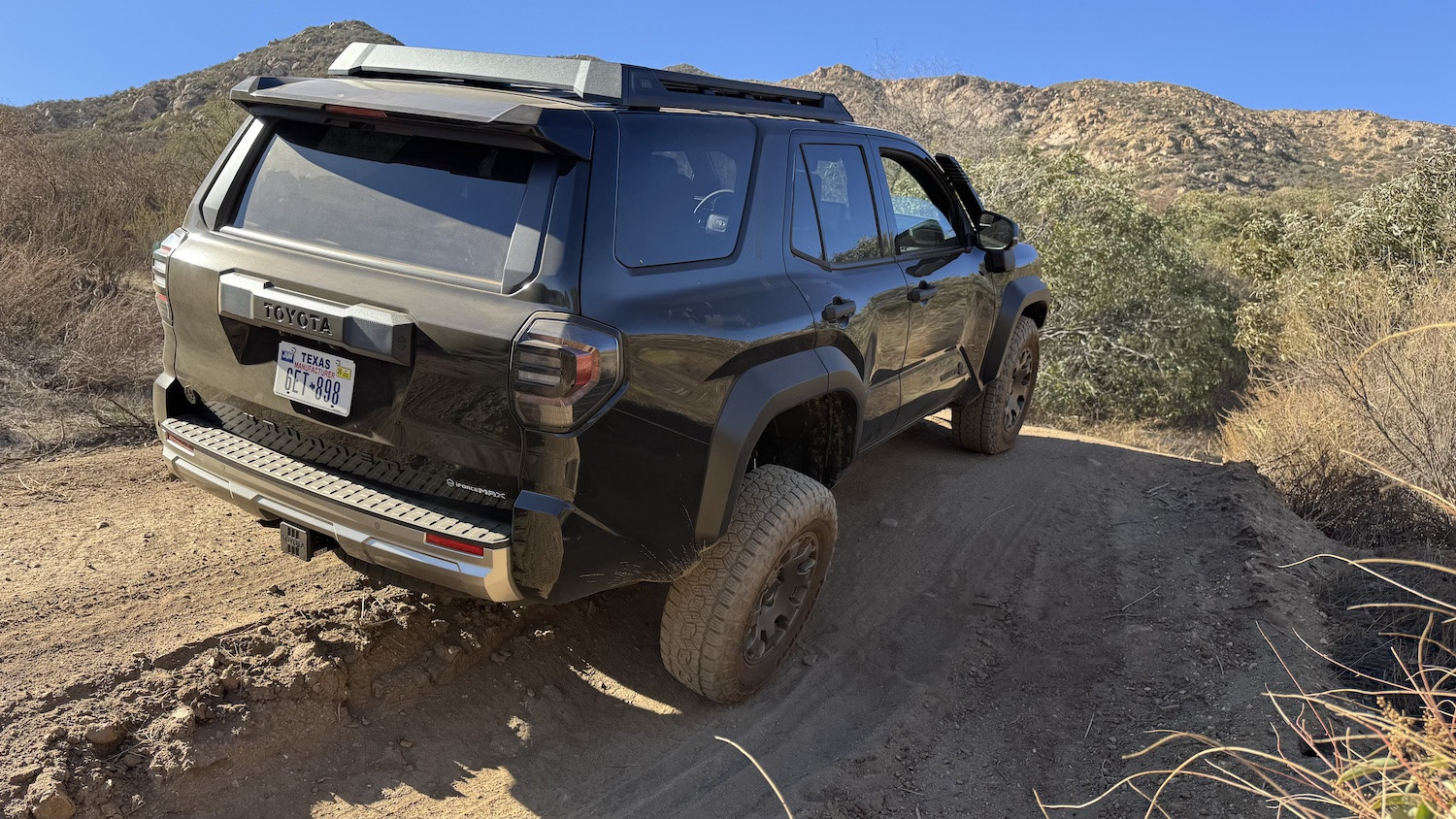 4runner 5916
4runner 5916
The off-road course proved surprisingly easy for the Trailhunter. While the independent front suspension limited the effectiveness of the sway bar disconnect in terms of front axle articulation, the coil-sprung five-link rear axle demonstrated impressive flex. Crawling over uneven terrain was smooth and effortless, aided by the front-facing camera.
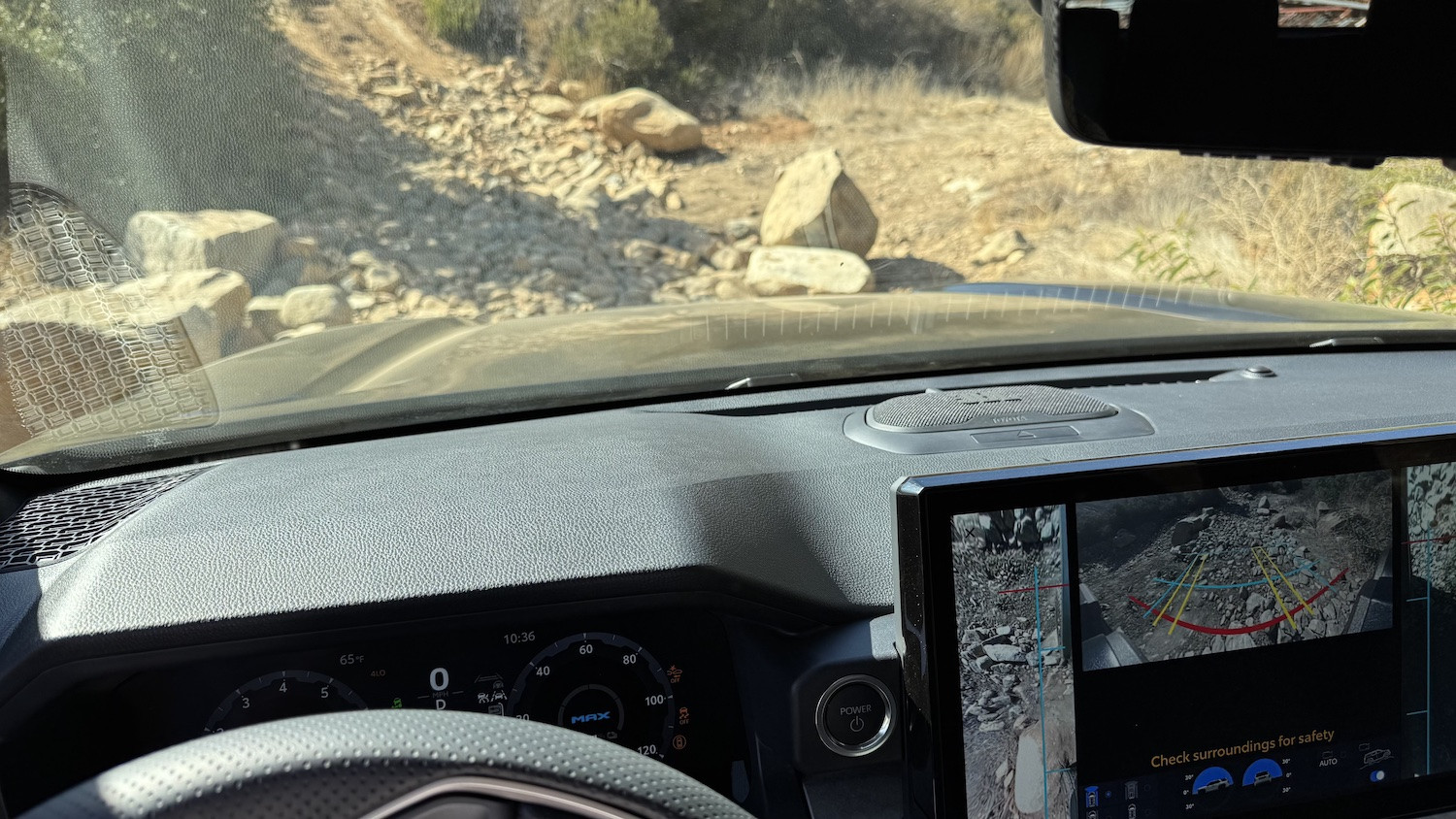 4runner 5904
4runner 5904
 4runner 5940
4runner 5940
The hood design, with a lower center section, offered excellent forward visibility, simplifying trail navigation. Extensive underbody skid plates covering the front end, fuel tank, and transfer case provided robust protection.
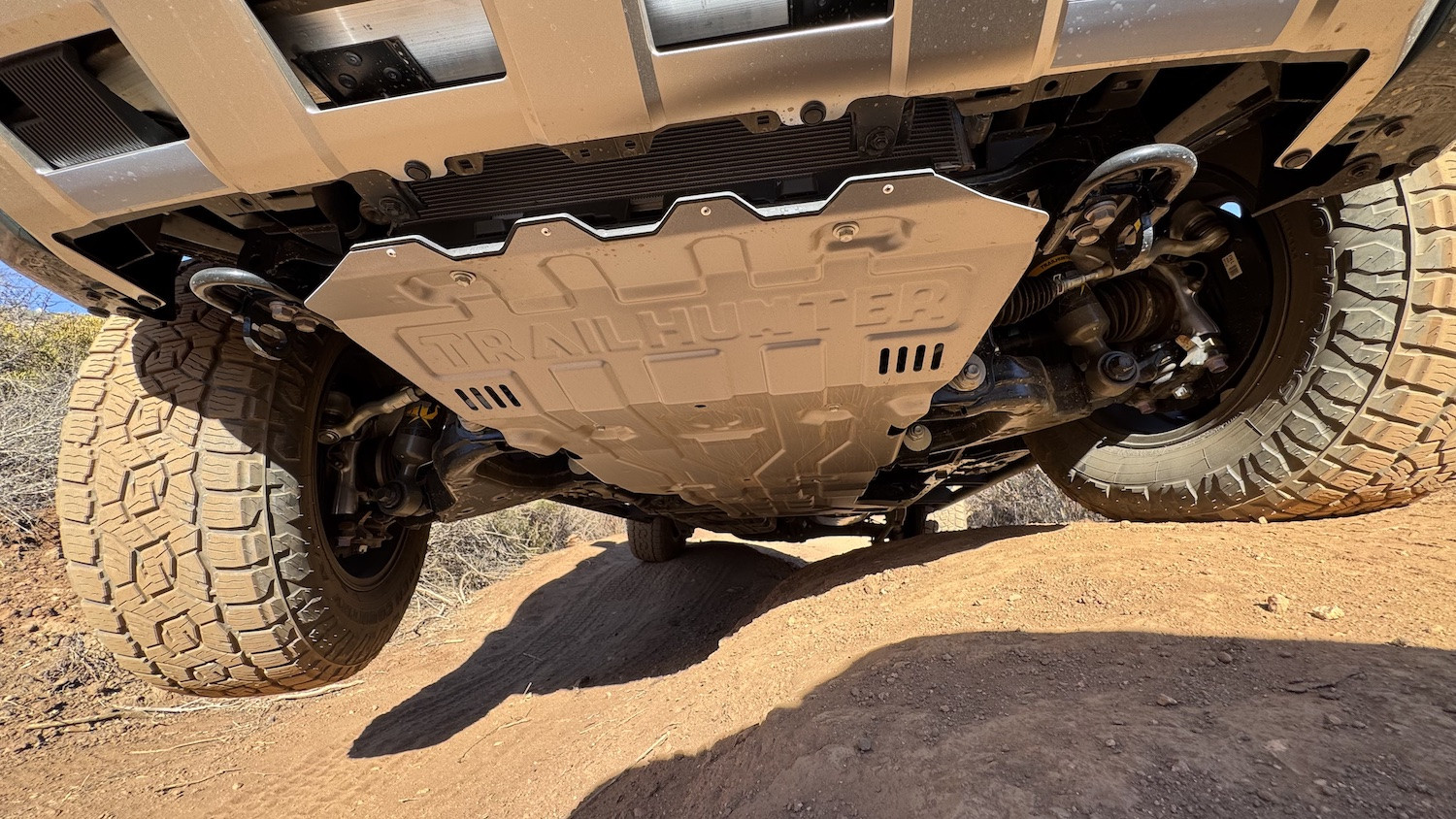 4runner 5929
4runner 5929
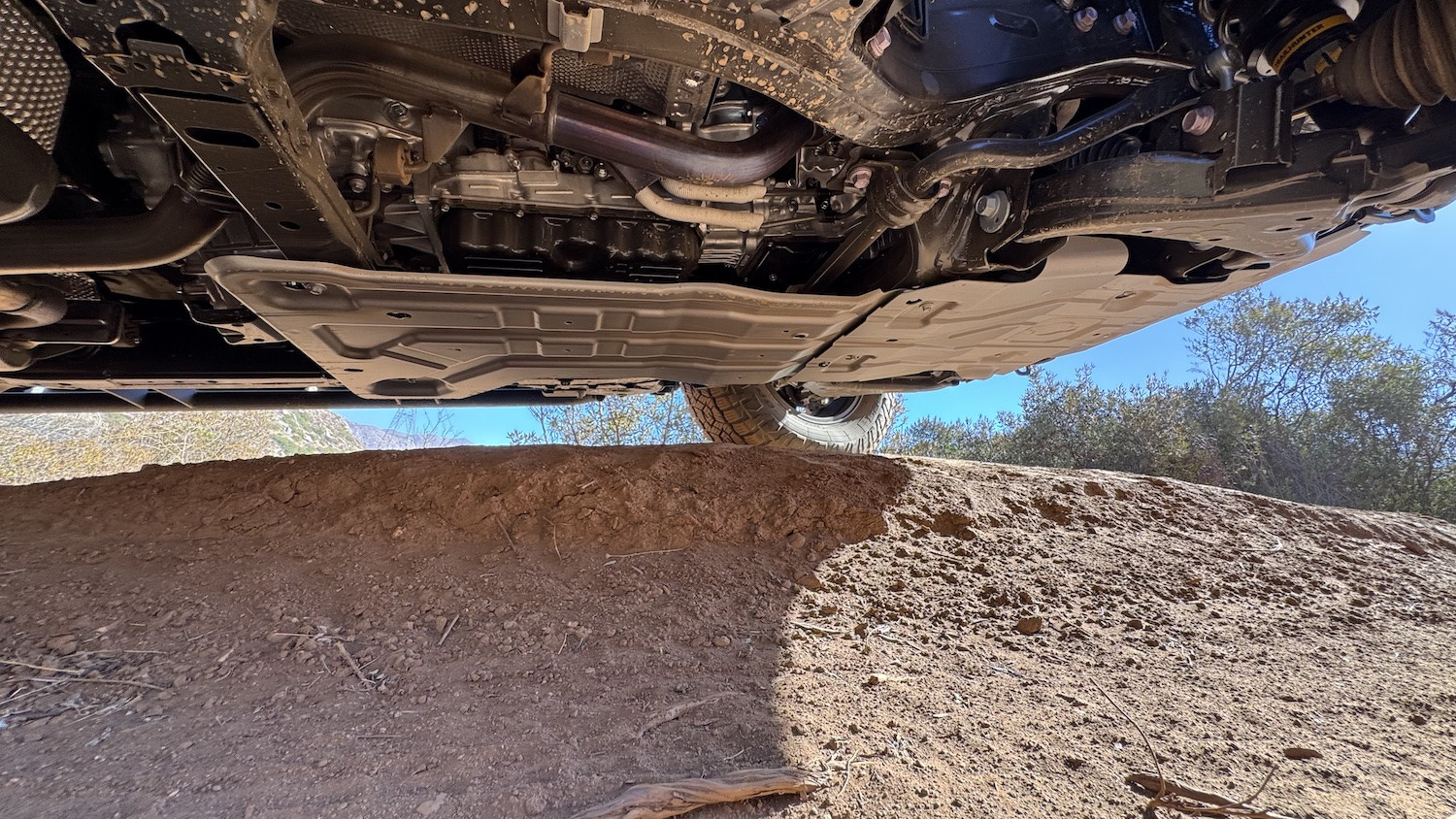 4runner 5930
4runner 5930
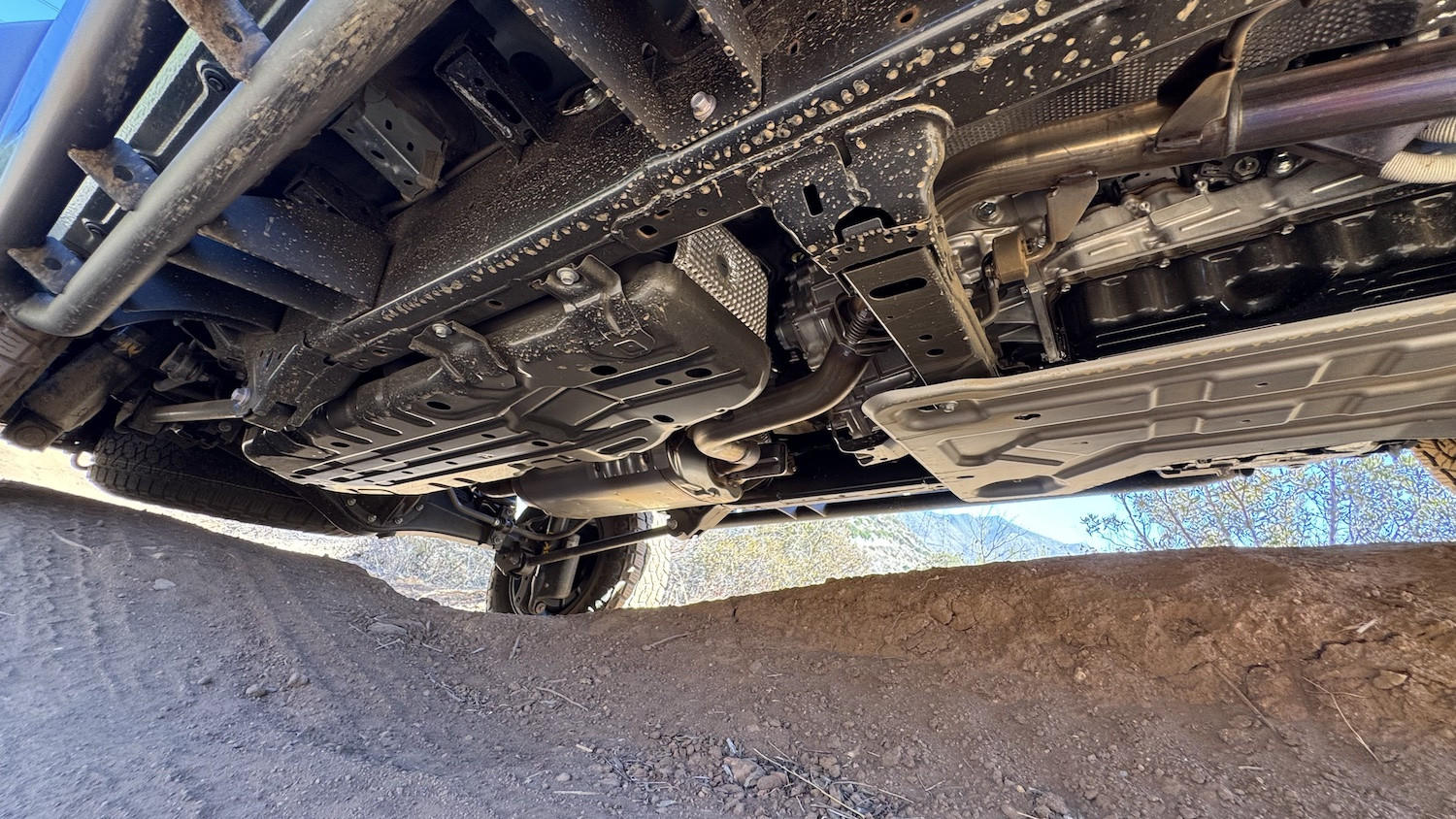 4runner 5931
4runner 5931
Despite its 10.1 inches of ground clearance, rear locker, and disconnecting front sway bar, the 4Runner Trailhunter’s breakover and departure angles (24 degrees each) are not exceptional due to its bulkier dimensions. While capable, it falls short of the extreme off-road geometry offered by vehicles like the Ford Bronco or Jeep Wrangler.
TRD Pro: High-Speed Desert Runner
The TRD Pro variant was tested on a high-speed dirt track.
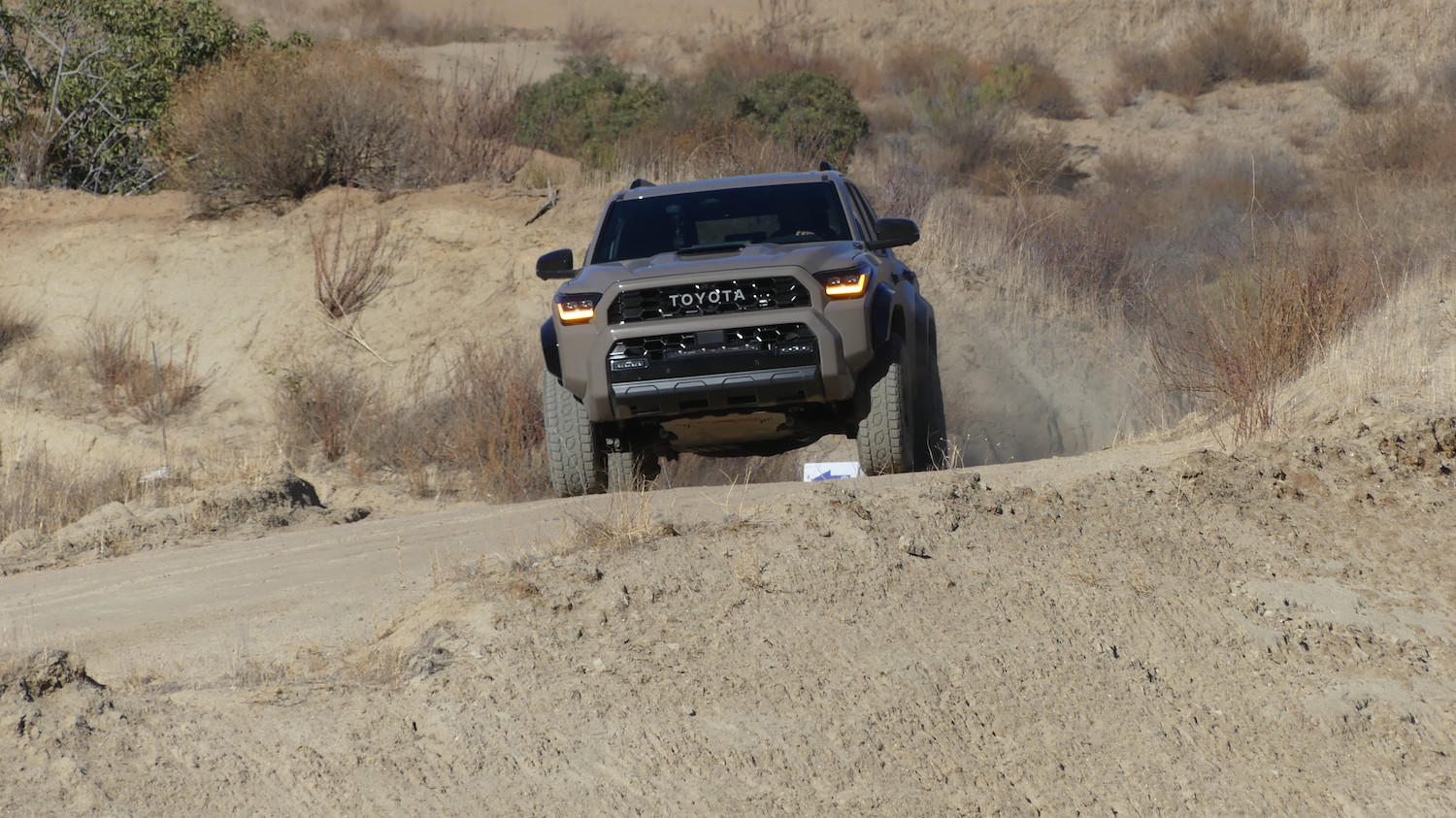 P1030239
P1030239
Equipped with “3-way adjustable Fox 2.5-in internal bypass Q3S shocks with rear piggy-back remote reservoirs,” the suspension effectively absorbed bumps and undulations at speed.
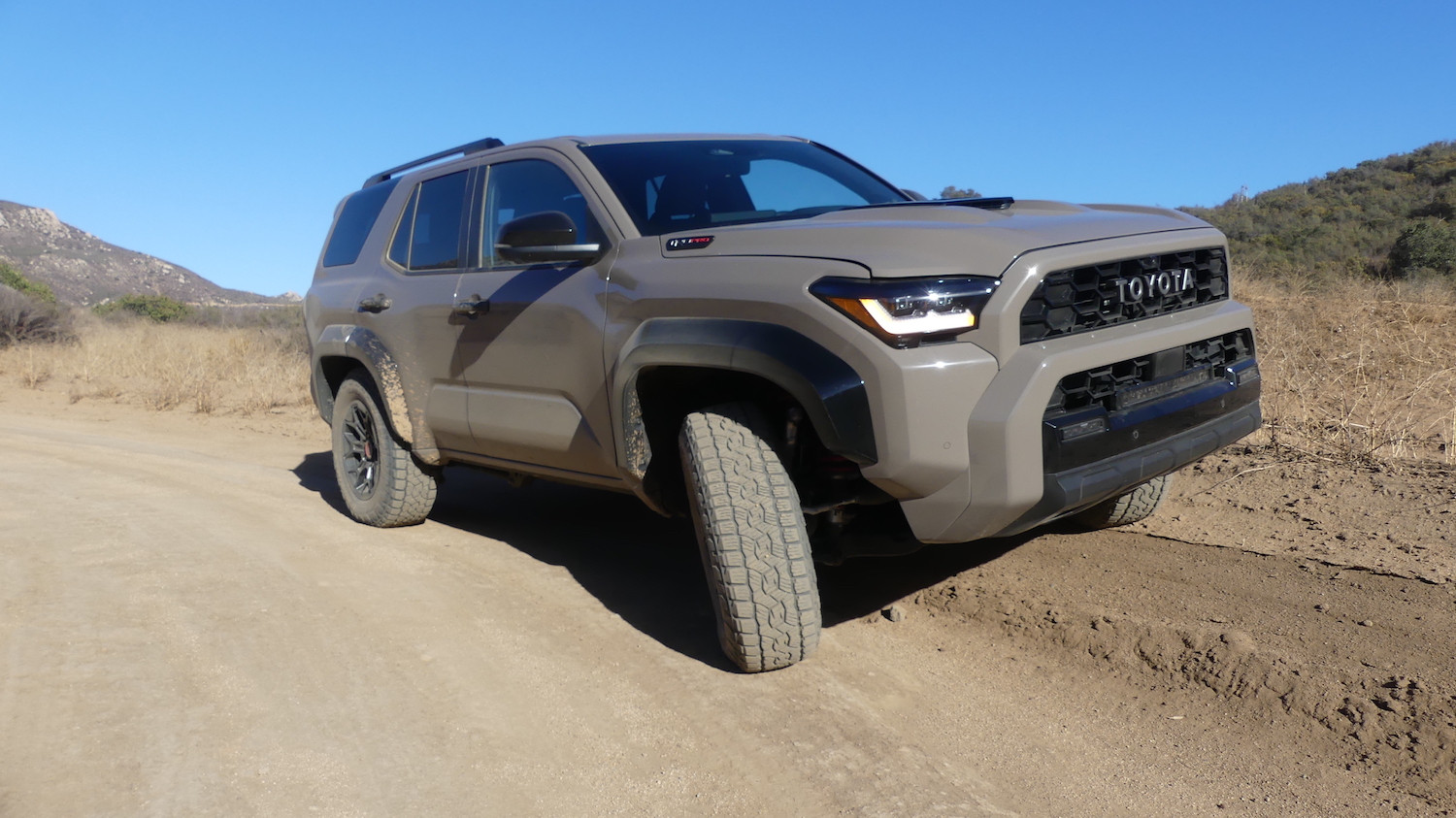 P1030245
P1030245
Toyota even demonstrated the TRD Pro’s jump capability.
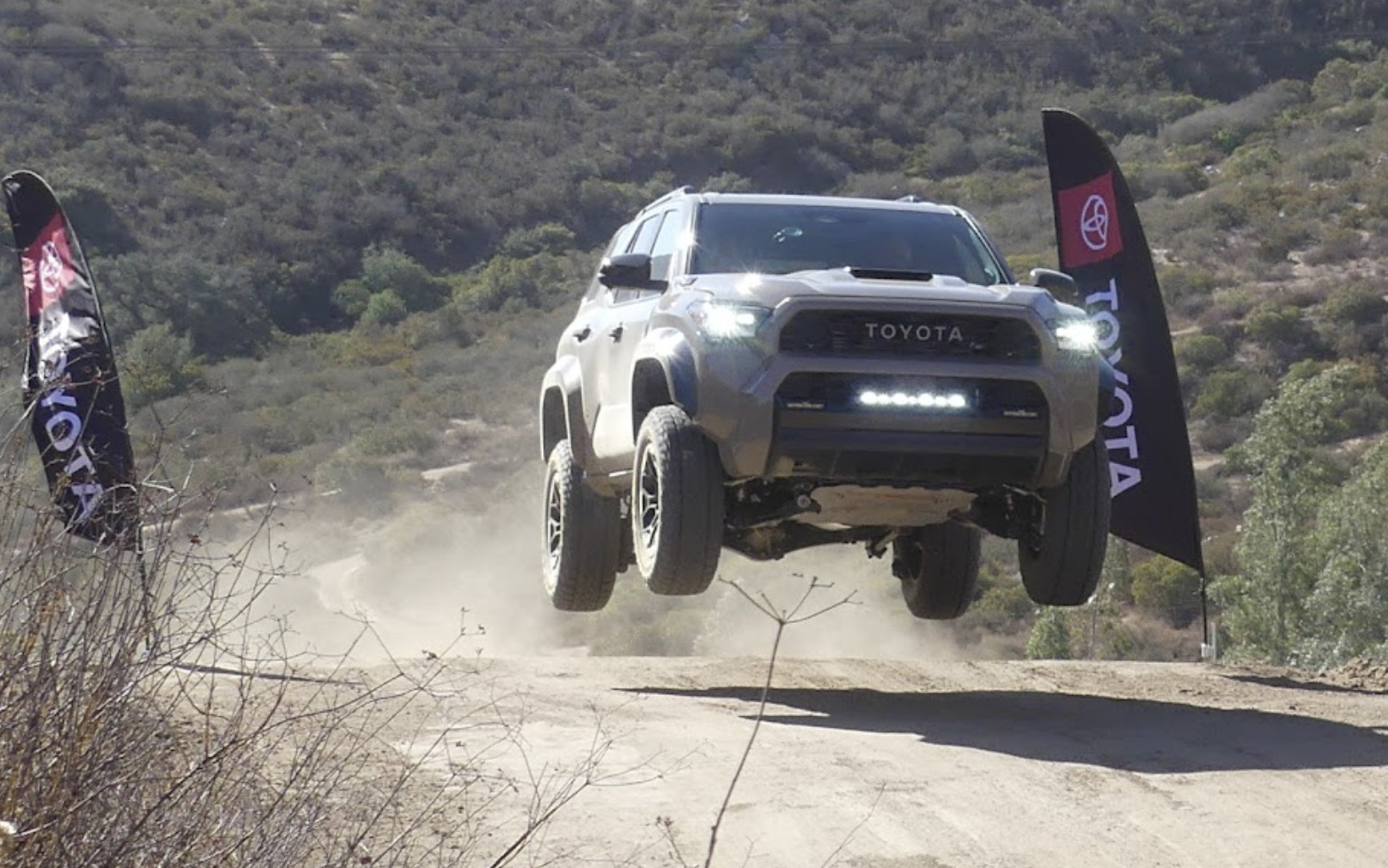 Screen Shot 2025 01 27 At 9.23.57 Pm
Screen Shot 2025 01 27 At 9.23.57 Pm
However, the TRD Pro trim has drawbacks. The piano black exterior cladding and the shaking fake hood bulge are notable detractors.
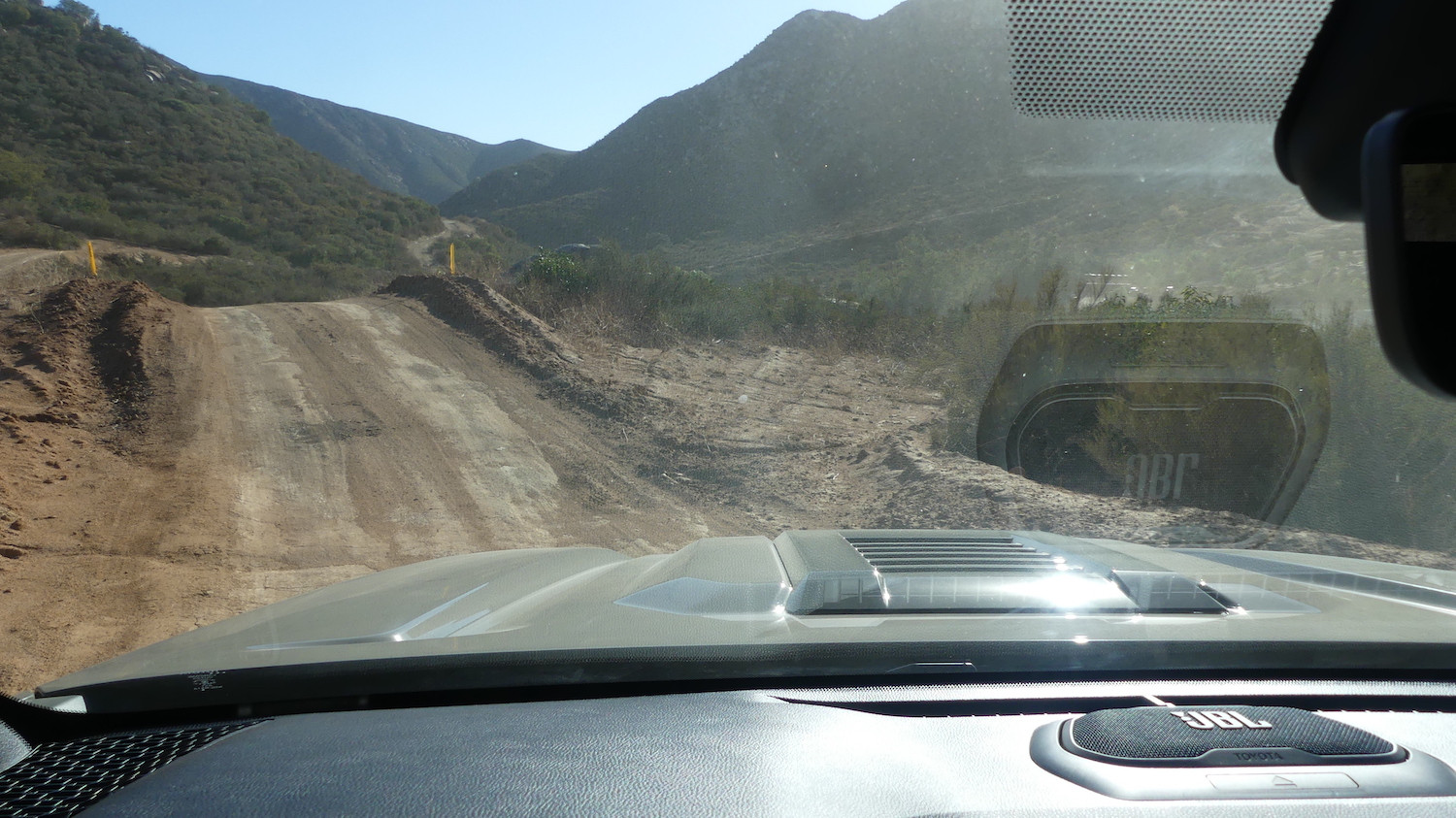 P1030242
P1030242
Furthermore, the underbody protection is less comprehensive compared to the Trailhunter, which features “Old Man Emu® 2.5-in forged shocks with rear piggyback remote reservoirs” and better overall protection.
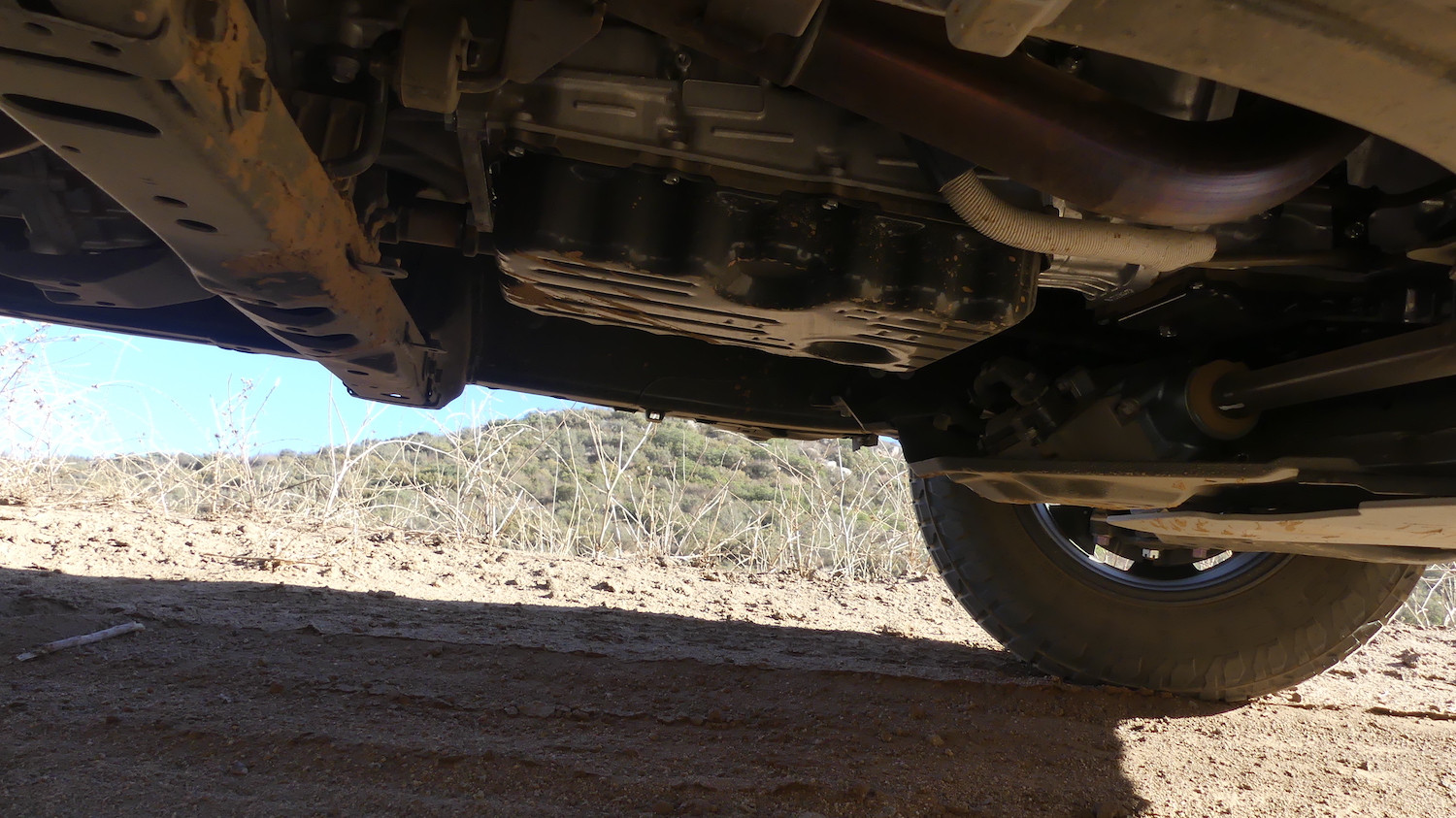 P1030248
P1030248
Despite the TRD Pro’s high-speed off-road performance and capabilities, the Trailhunter and the TRD Off-Road trims present compelling alternatives with different strengths and value propositions.
TRD Off-Road: The Goldilocks of the 4Runner Lineup
The TRD Off-Road trim emerges as the “Goldilocks” option in the 4Runner lineup, striking a balance of capability, features, and value, similar to the Tacoma TRD Off-Road.
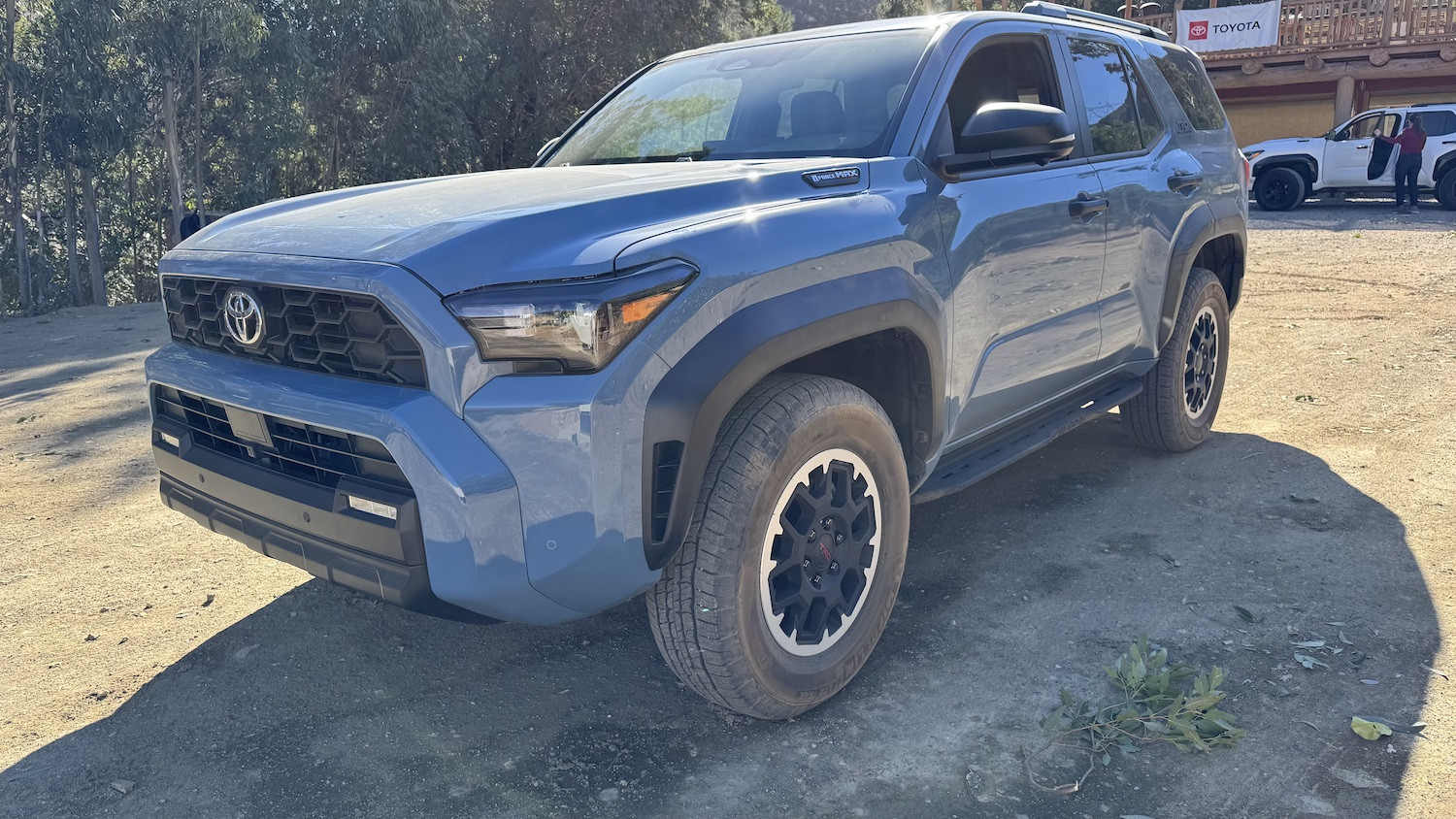 4runner 5971
4runner 5971
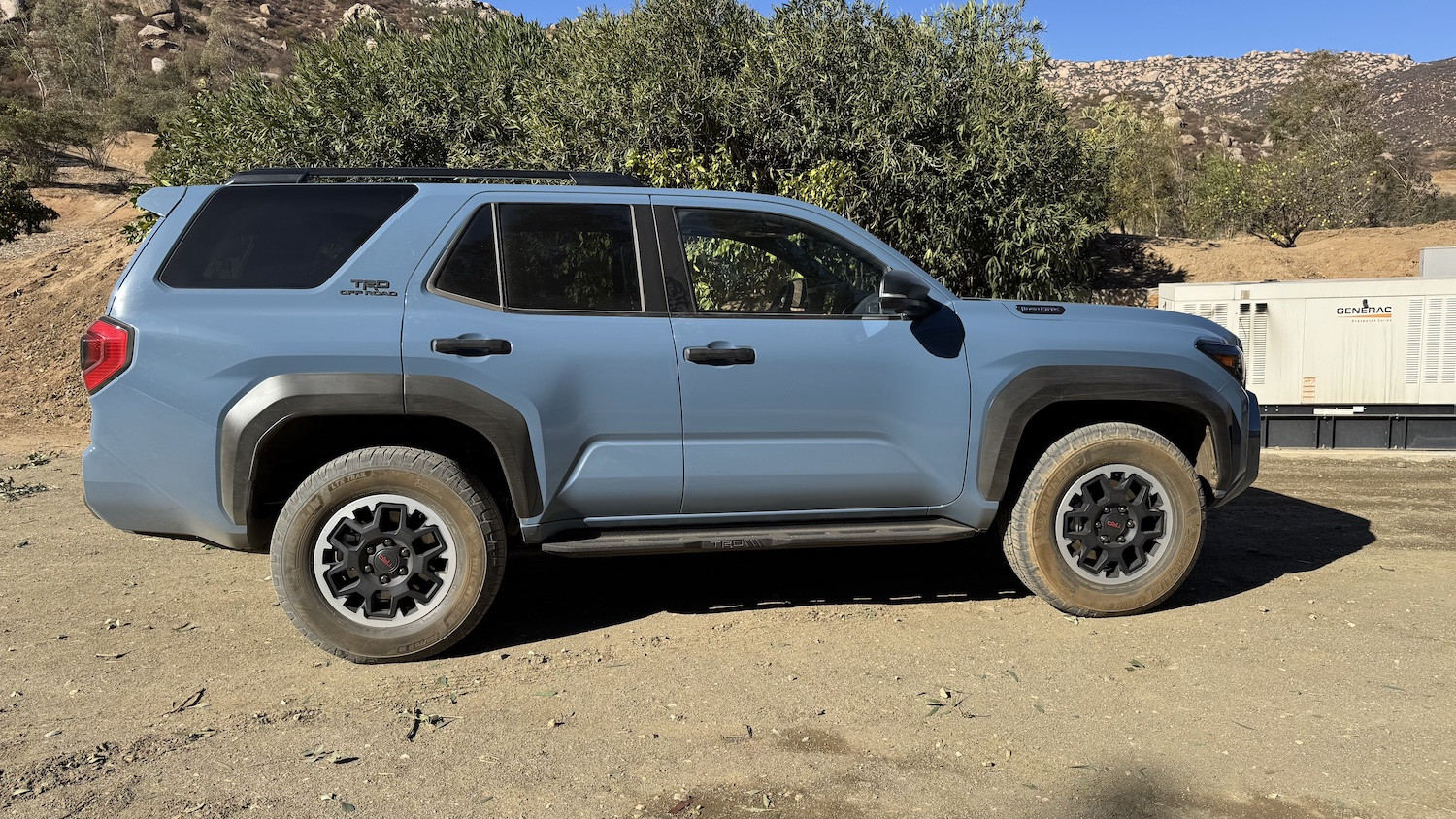 4runner 5972
4runner 5972
 4runner 5973
4runner 5973
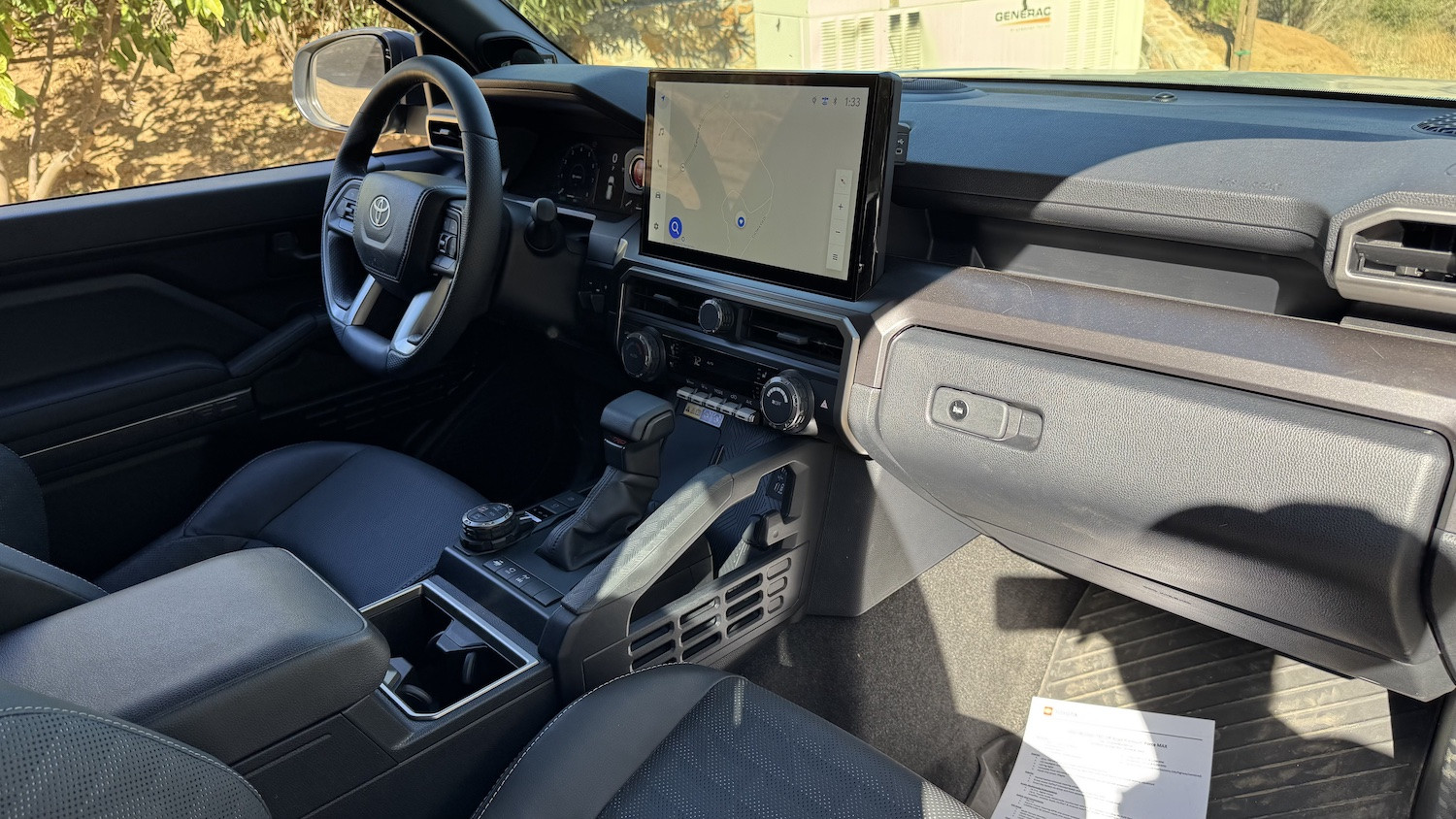 4runner 5974
4runner 5974
Starting at $50,640 for the base TRD Off-Road and $56,420 for the TRD Off-Road Premium, these trims are positioned above competitors like the Ford Bronco four-door and Jeep Wrangler four-door in terms of price. However, 4Runners have historically commanded a premium, justified by brand reputation and refinement. The TRD Off-Road offers the best value proposition within the 4Runner range.
The TRD Off-Road Premium hybrid, priced over $60,870, includes features like a faux-leather interior, a large infotainment screen, a front-facing camera, and a moonroof, in addition to standard TRD Off-Road equipment like 33-inch tires and a rear locker.
 4runner 5942
4runner 5942
 4runner 5943
4runner 5943
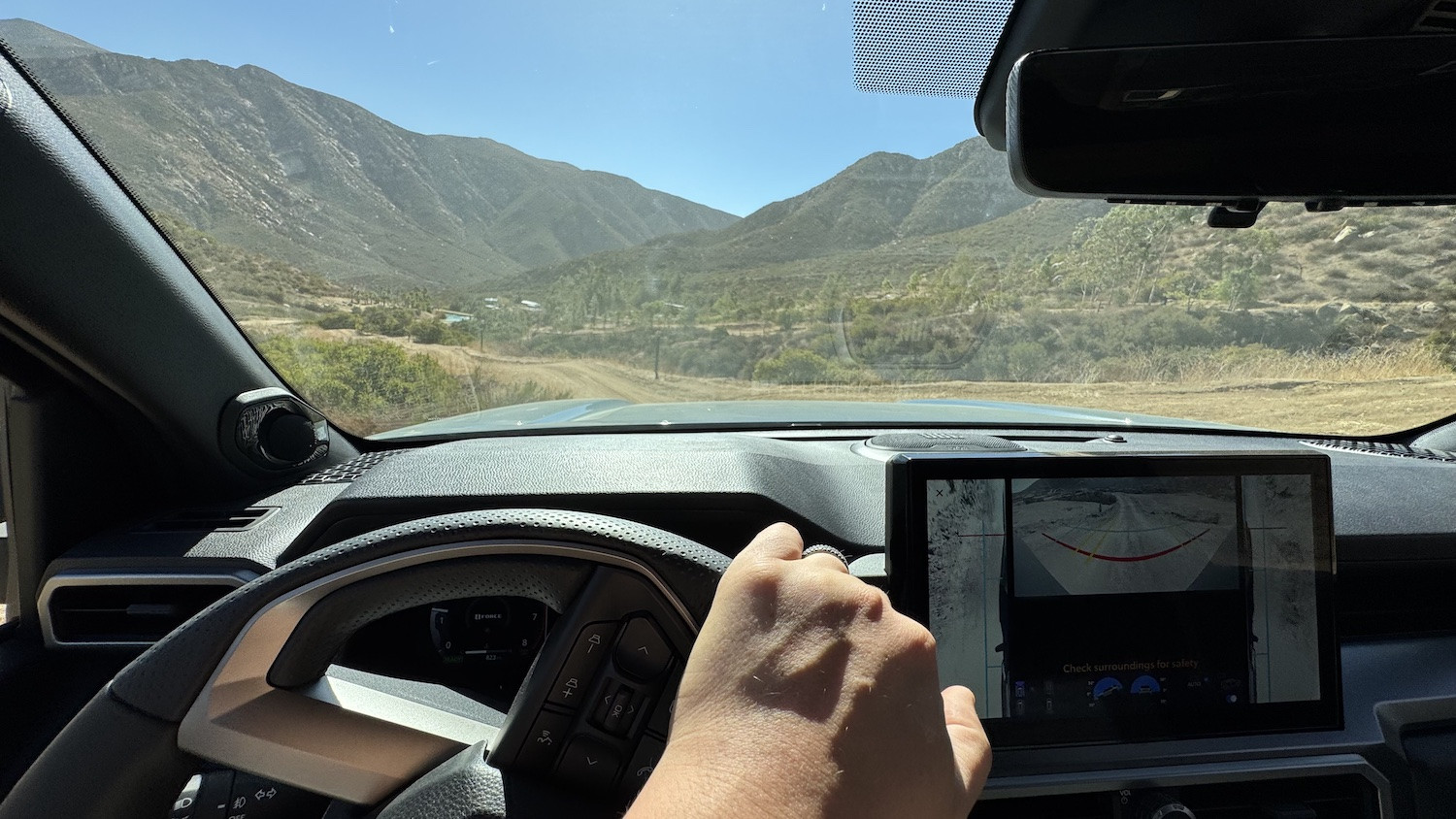 4runner 5944
4runner 5944
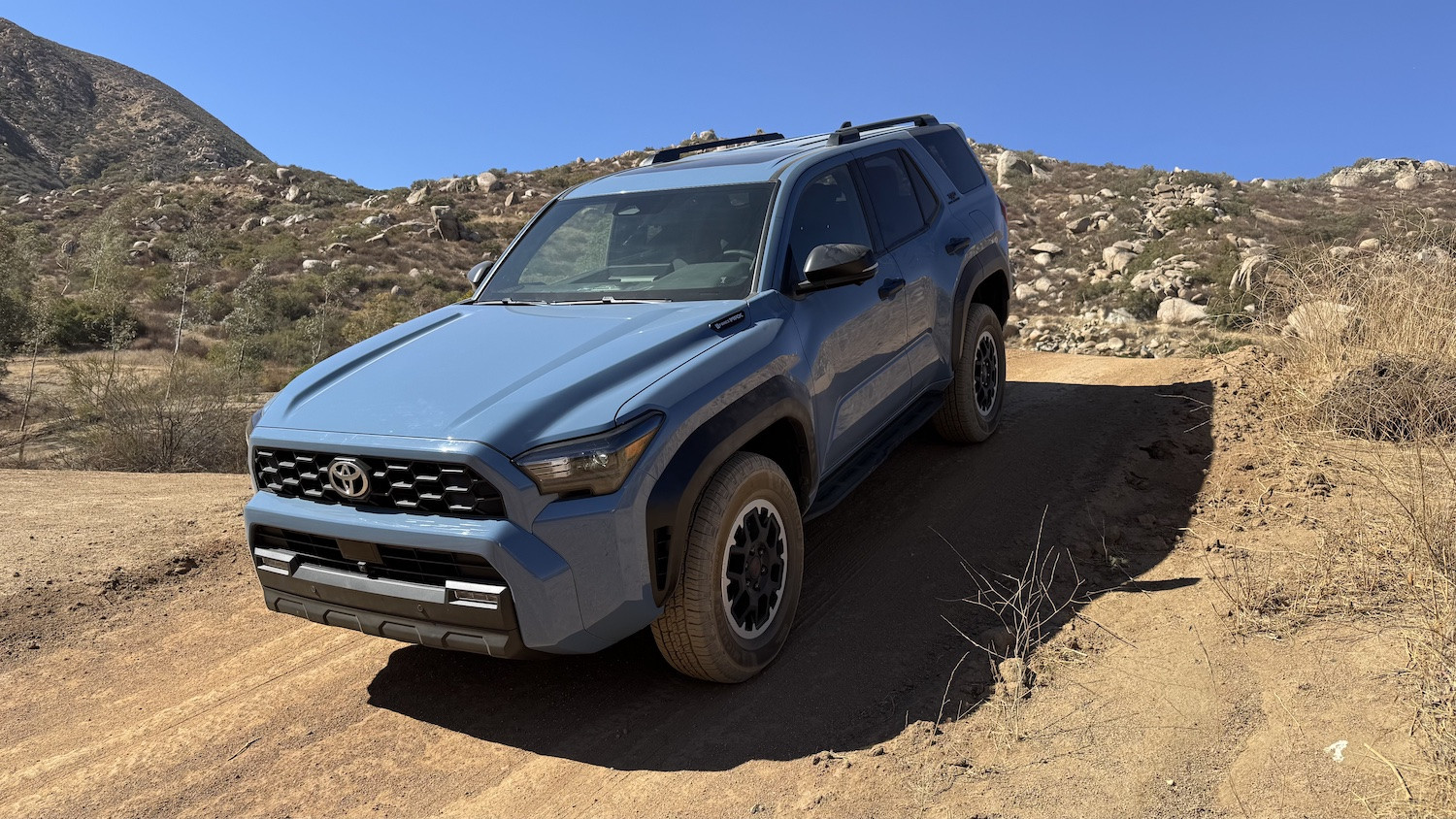 4runner 5945
4runner 5945
While extensive off-roading was not conducted with the TRD Off-Road, its capabilities are evident, offering ample performance for serious off-road enthusiasts. Forward visibility is excellent, especially with the optional camera, and the 9.1 inches of ground clearance is generous. The matte-black fender flares are functional and understated.
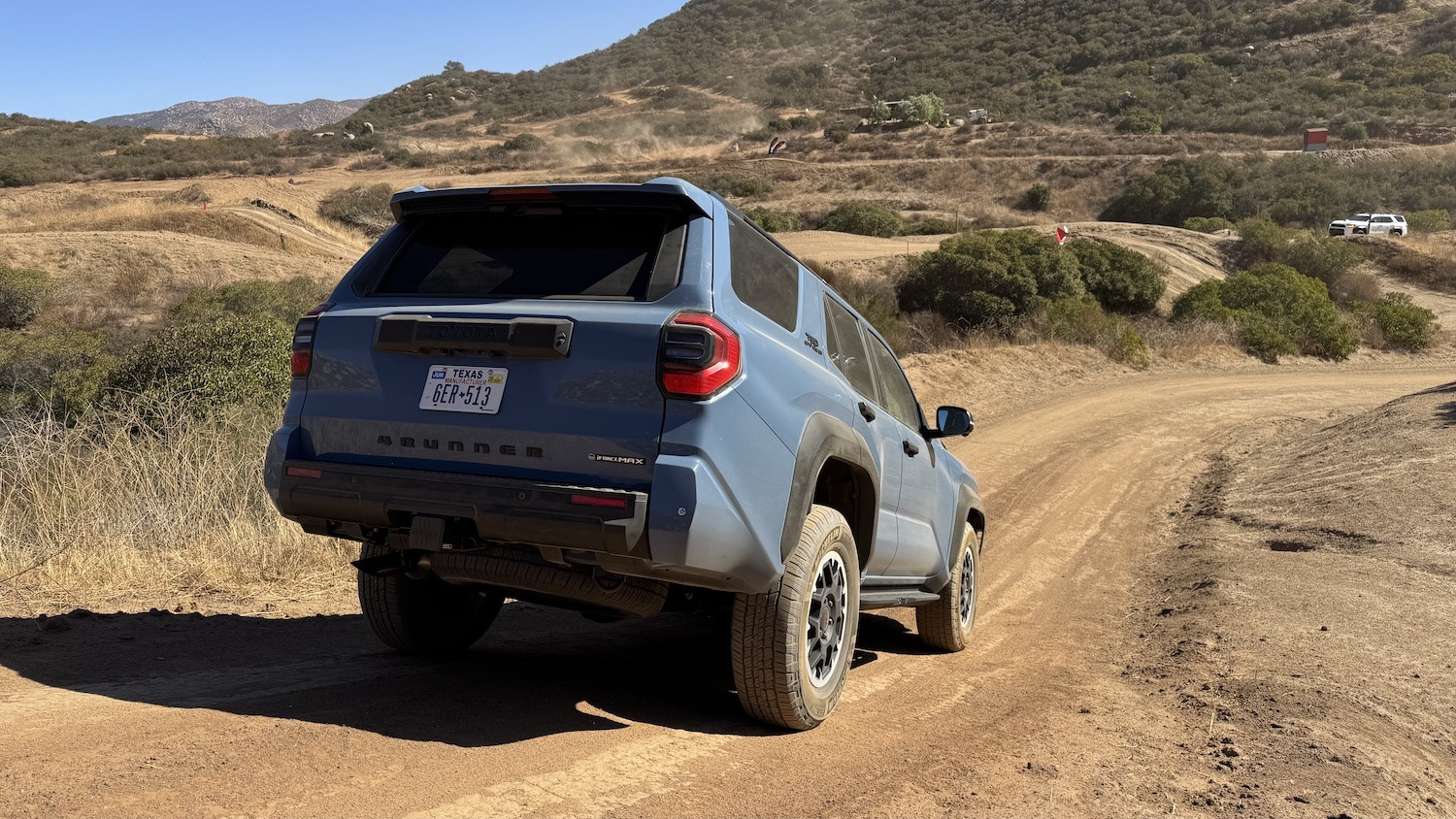 4runner 5950
4runner 5950
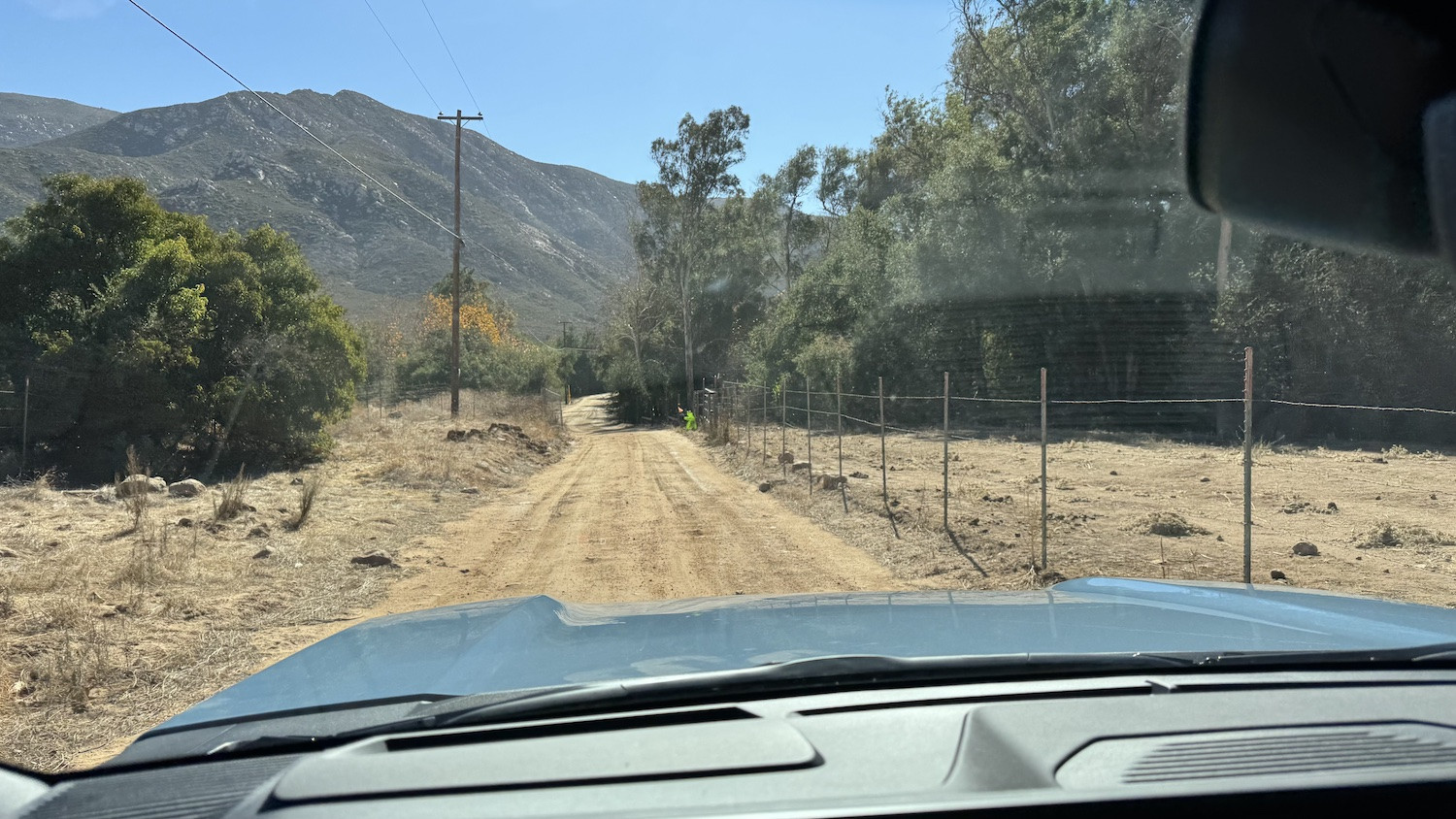 4runner 5954
4runner 5954
 4runner 5941 2
4runner 5941 2
The TRD Off-Road lacks a sway bar disconnect, but this is less critical given the front suspension’s limited articulation. Underbody protection, while present, could be improved (front skid plate is likely composite, transmission lacks protection), but aftermarket upgrades can address these areas.
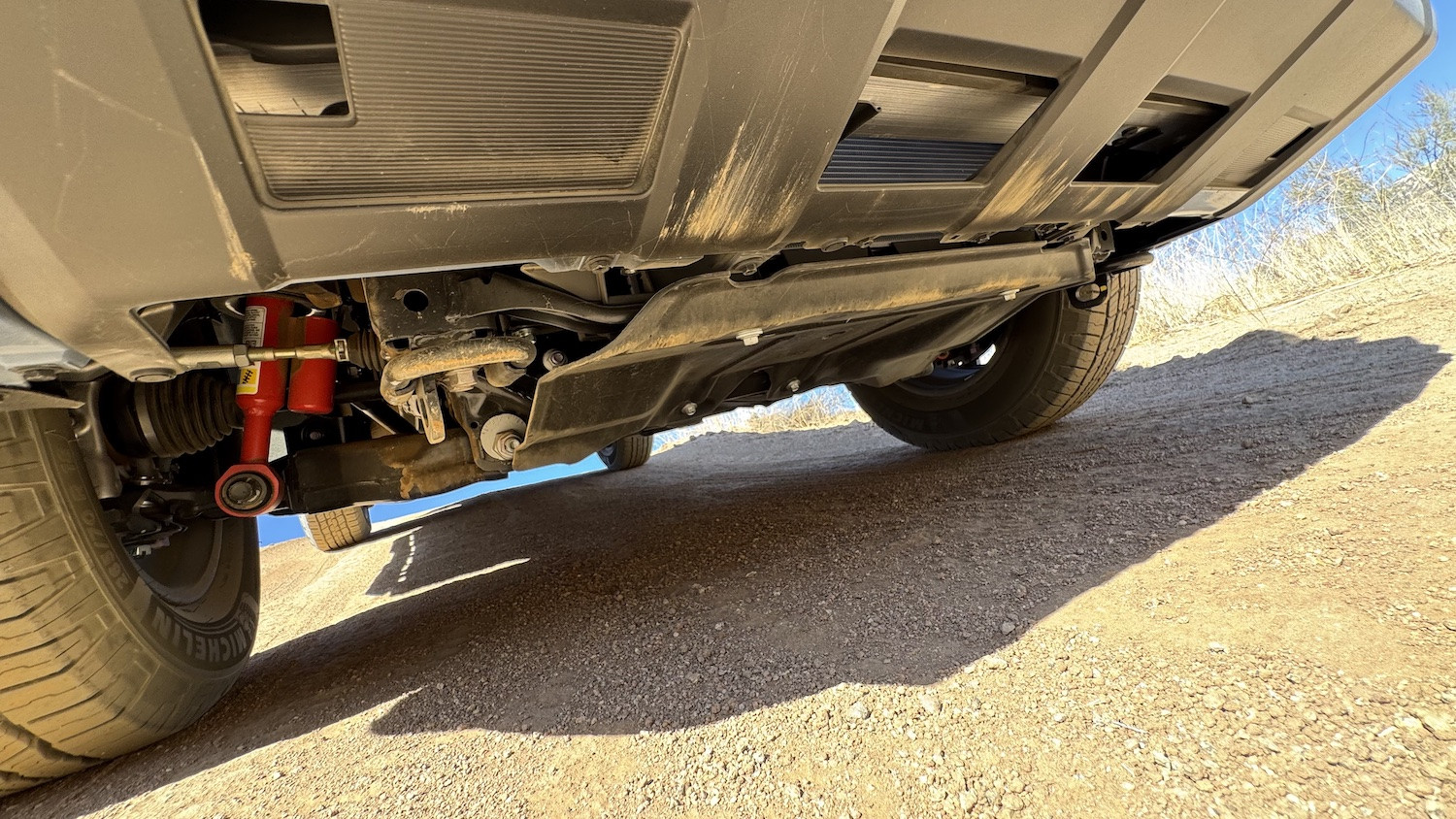 4runner 5946
4runner 5946
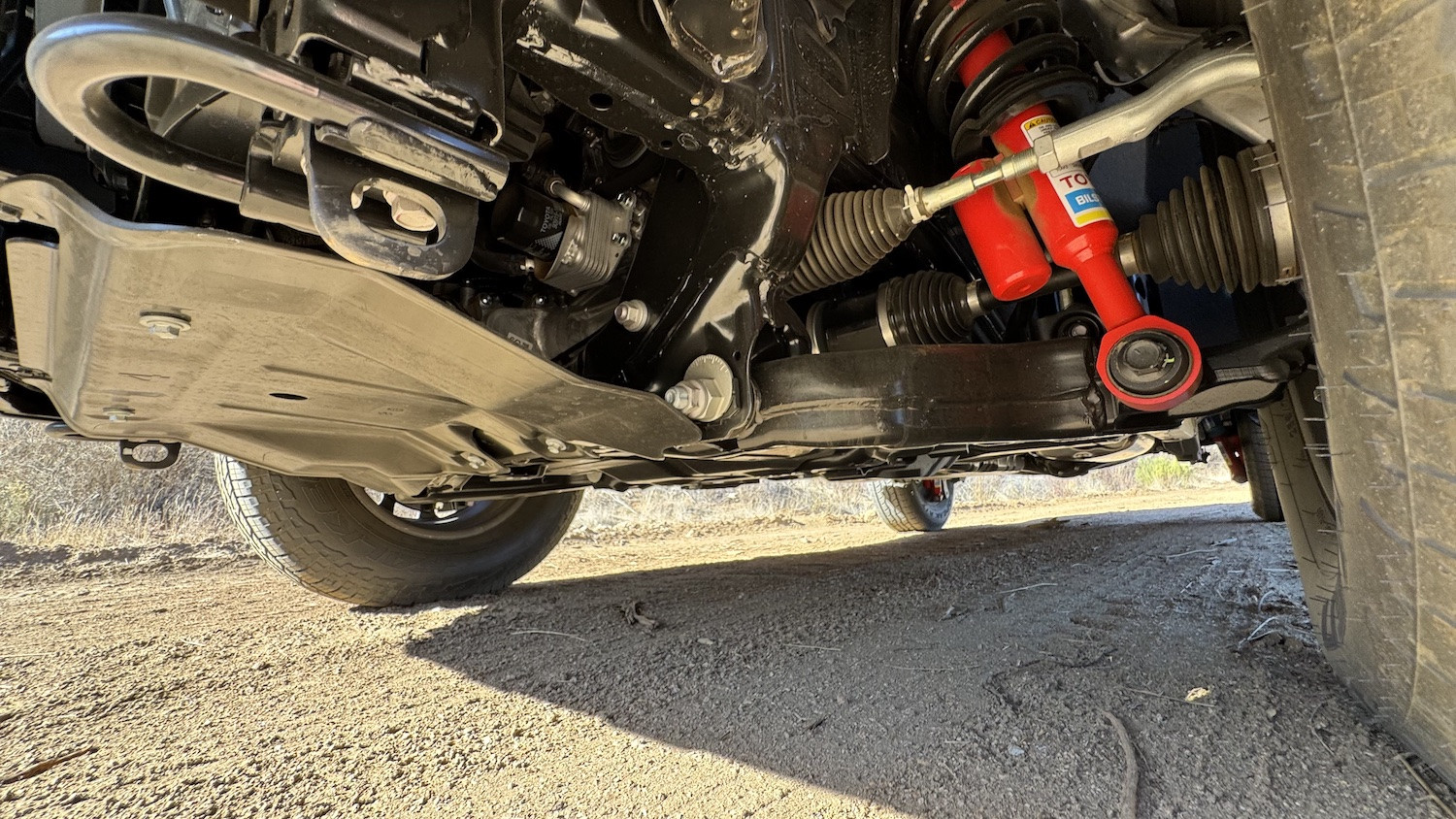 4runner 5992
4runner 5992
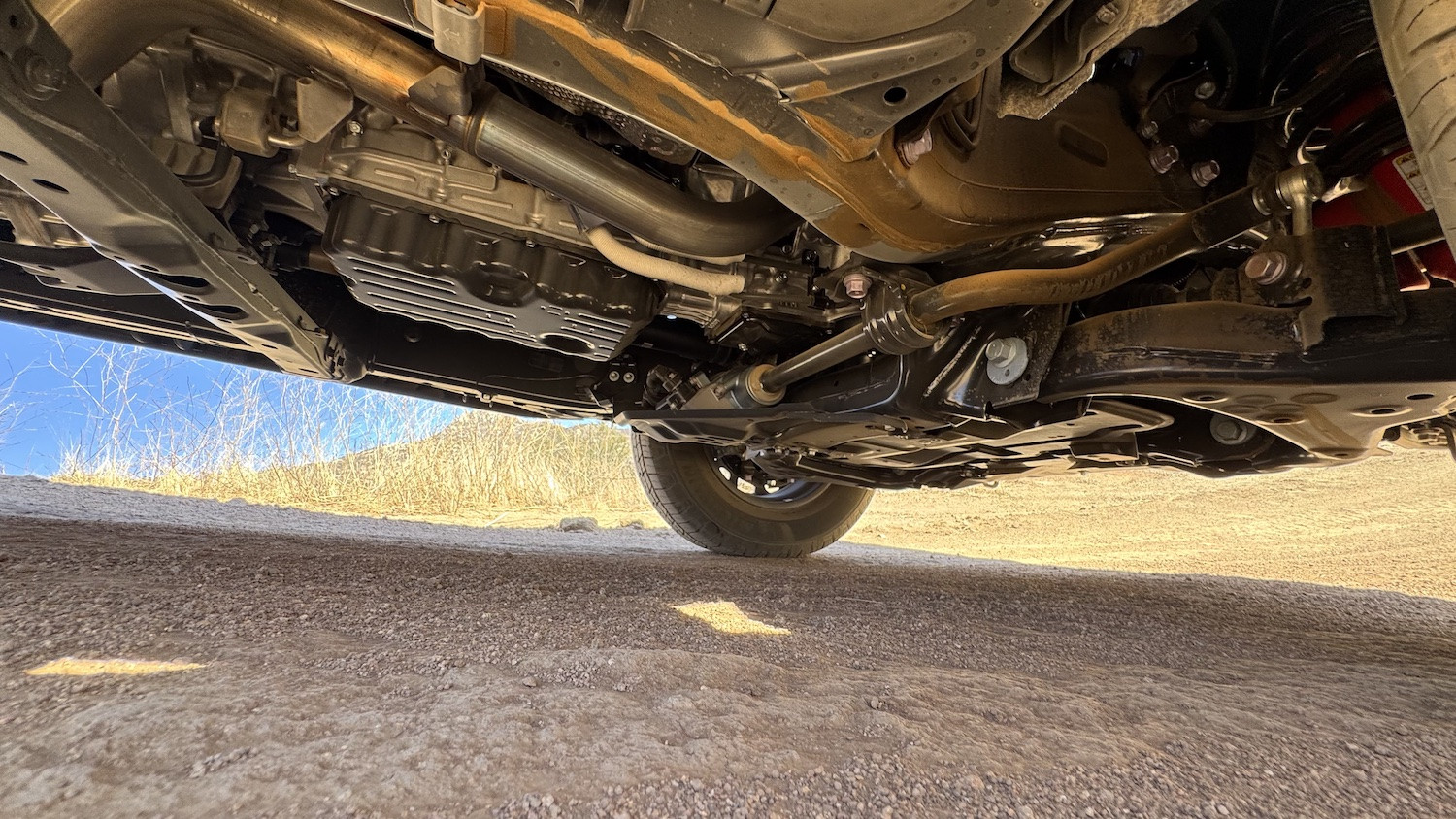 4runner 5947
4runner 5947
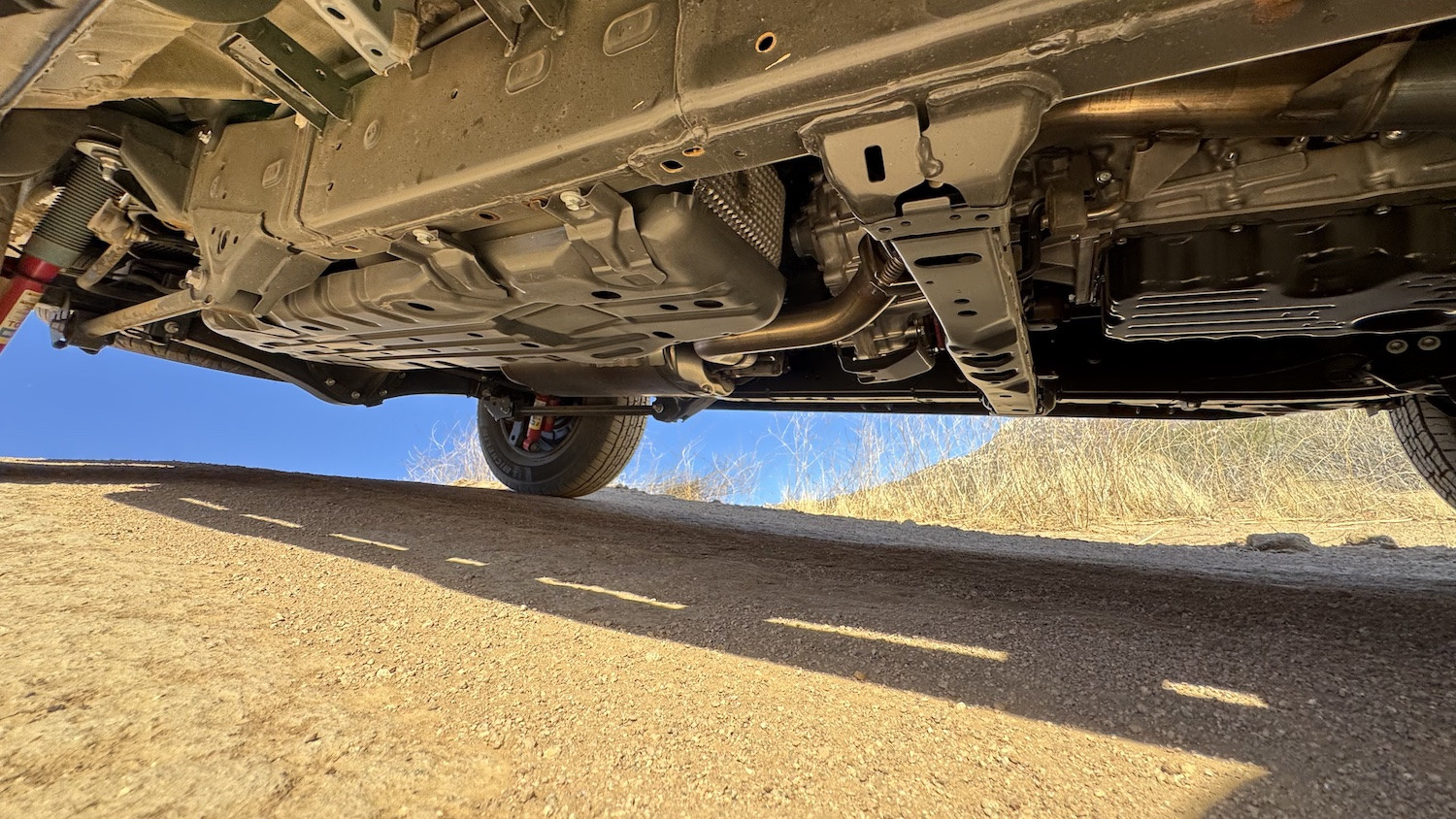 4runner 5948
4runner 5948
The base-model, non-hybrid TRD Off-Road, priced at $50,640, emerged as the most appealing variant, offering a functional and no-frills package.
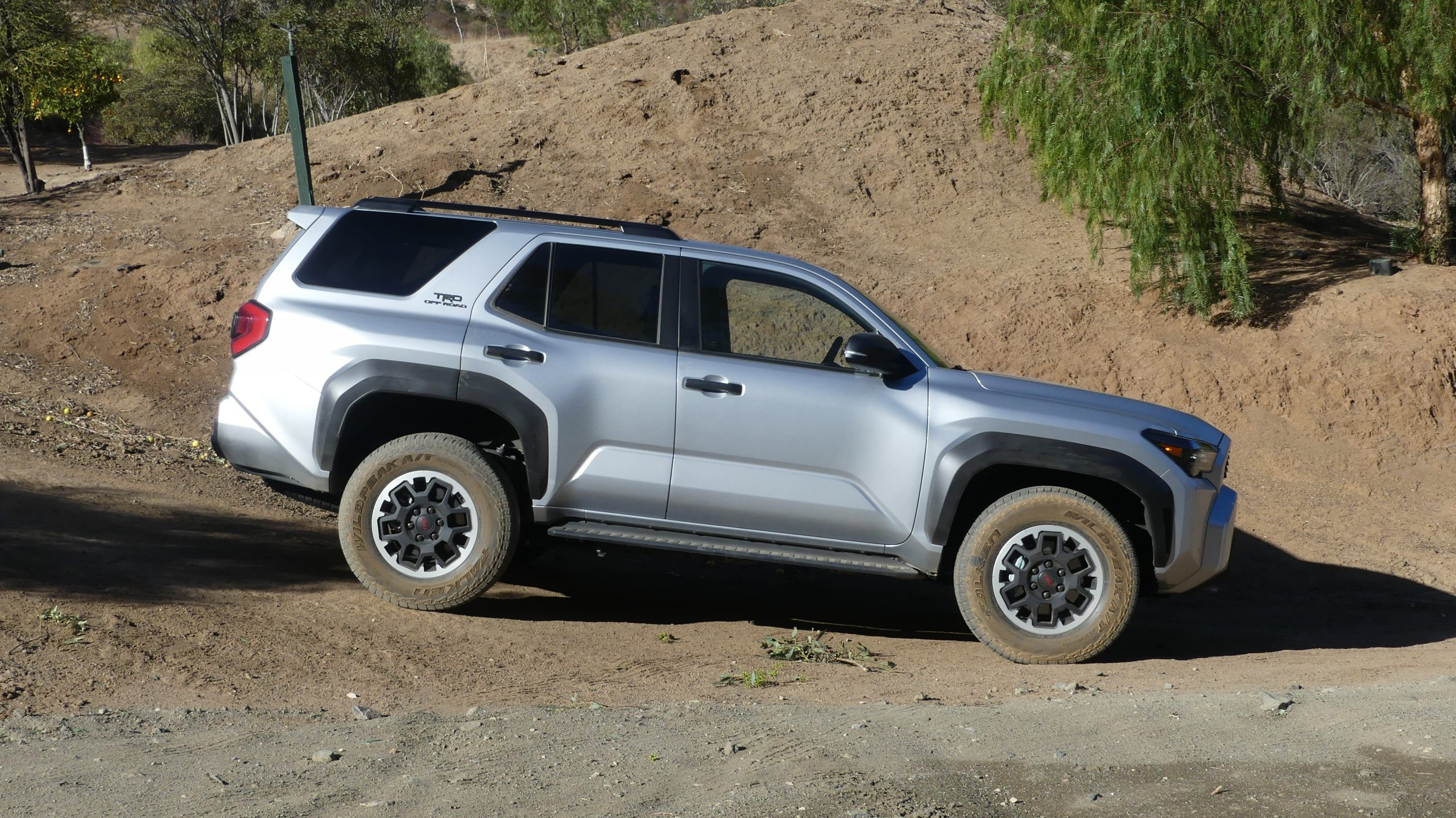 P1030234
P1030234
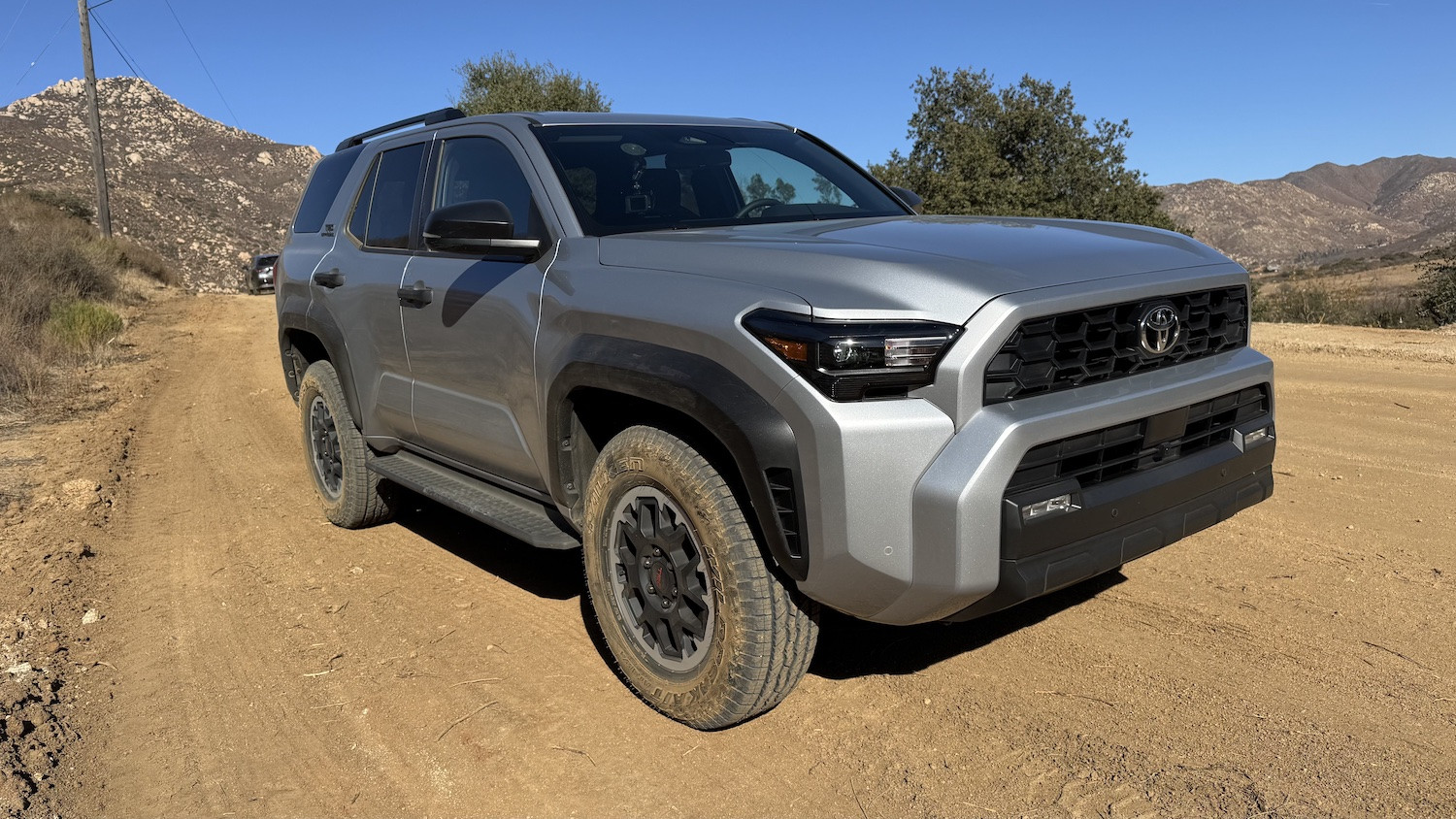 4runner 5988
4runner 5988
The optionless TRD Off-Road is straightforward and functional, featuring cloth seats, a rear locker, 33-inch tires, basic underbody protection, a gasoline 2.4-liter turbocharged engine, an eight-speed automatic transmission, and a low-range transfer case—essential features without unnecessary frills.
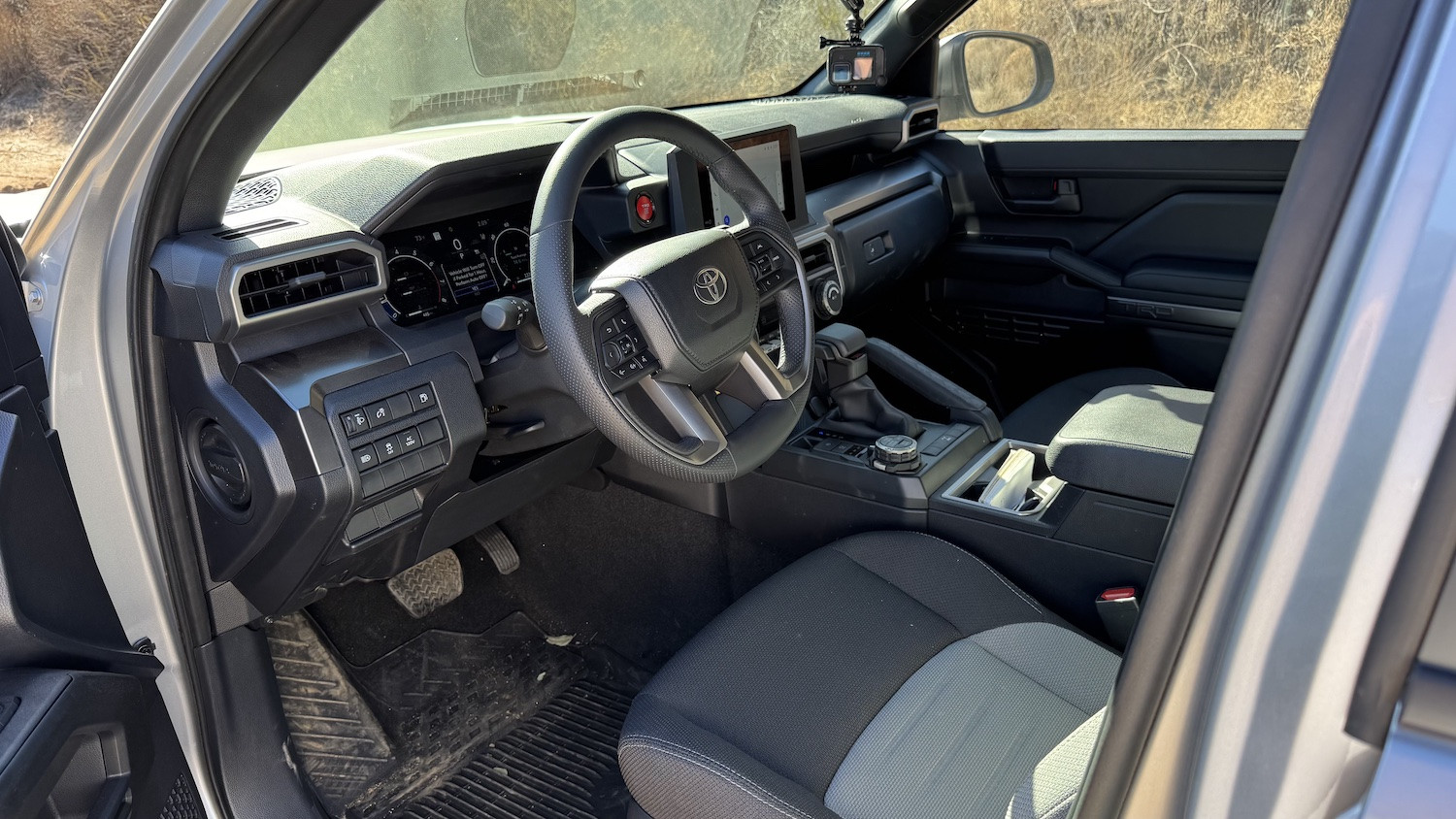 4runner 5989
4runner 5989
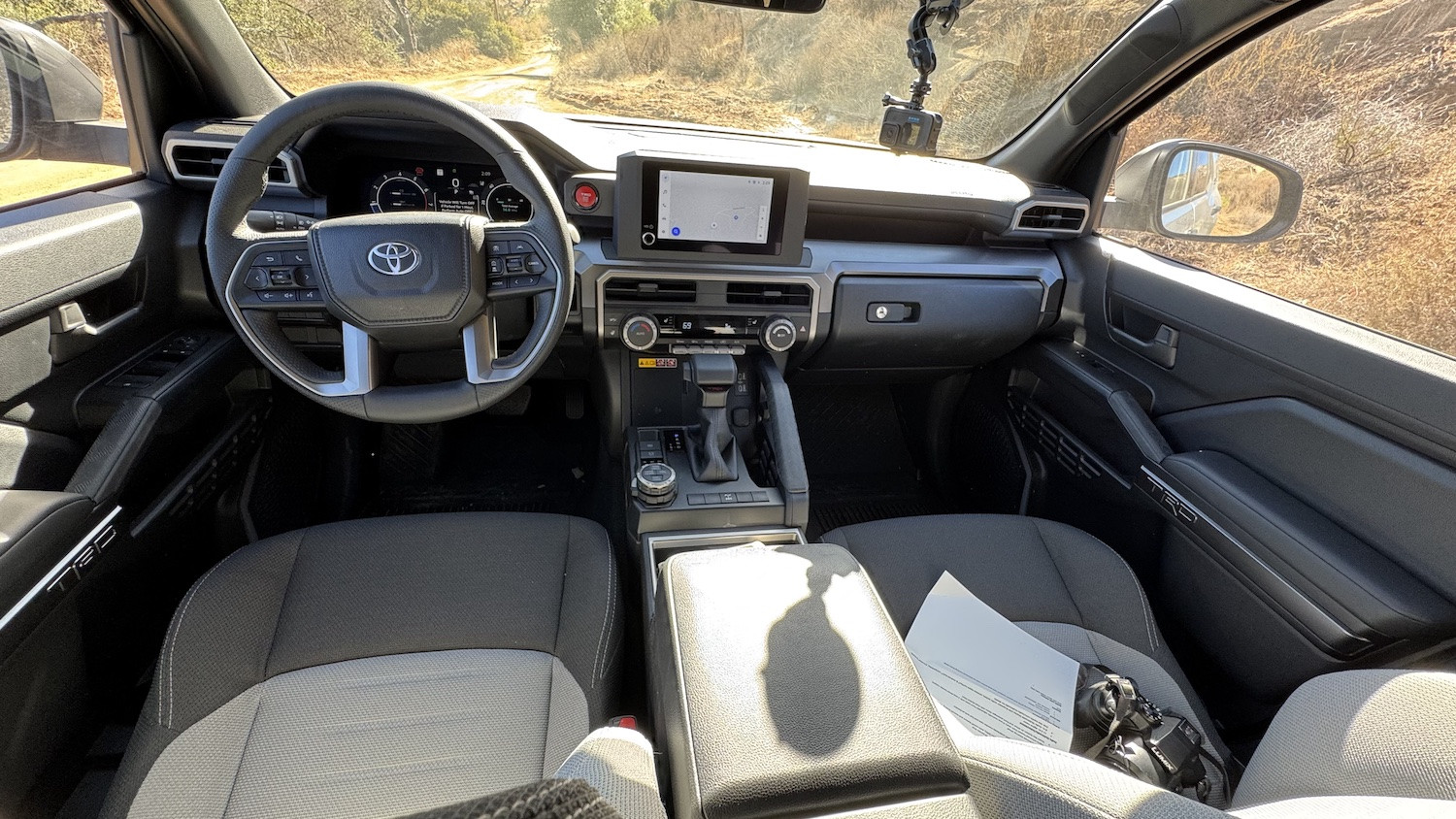 4runner 5990
4runner 5990
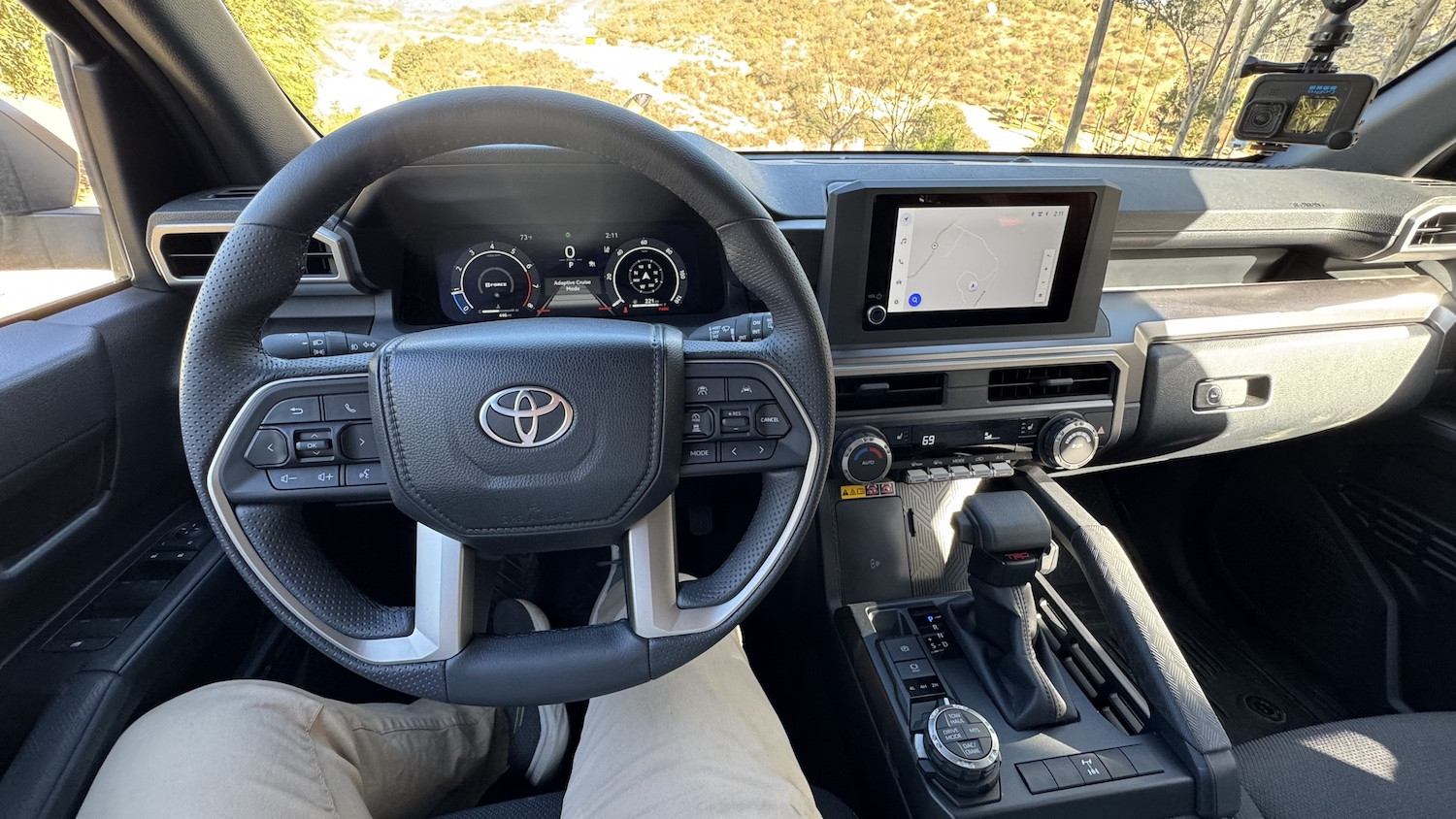 4runner 5996
4runner 5996
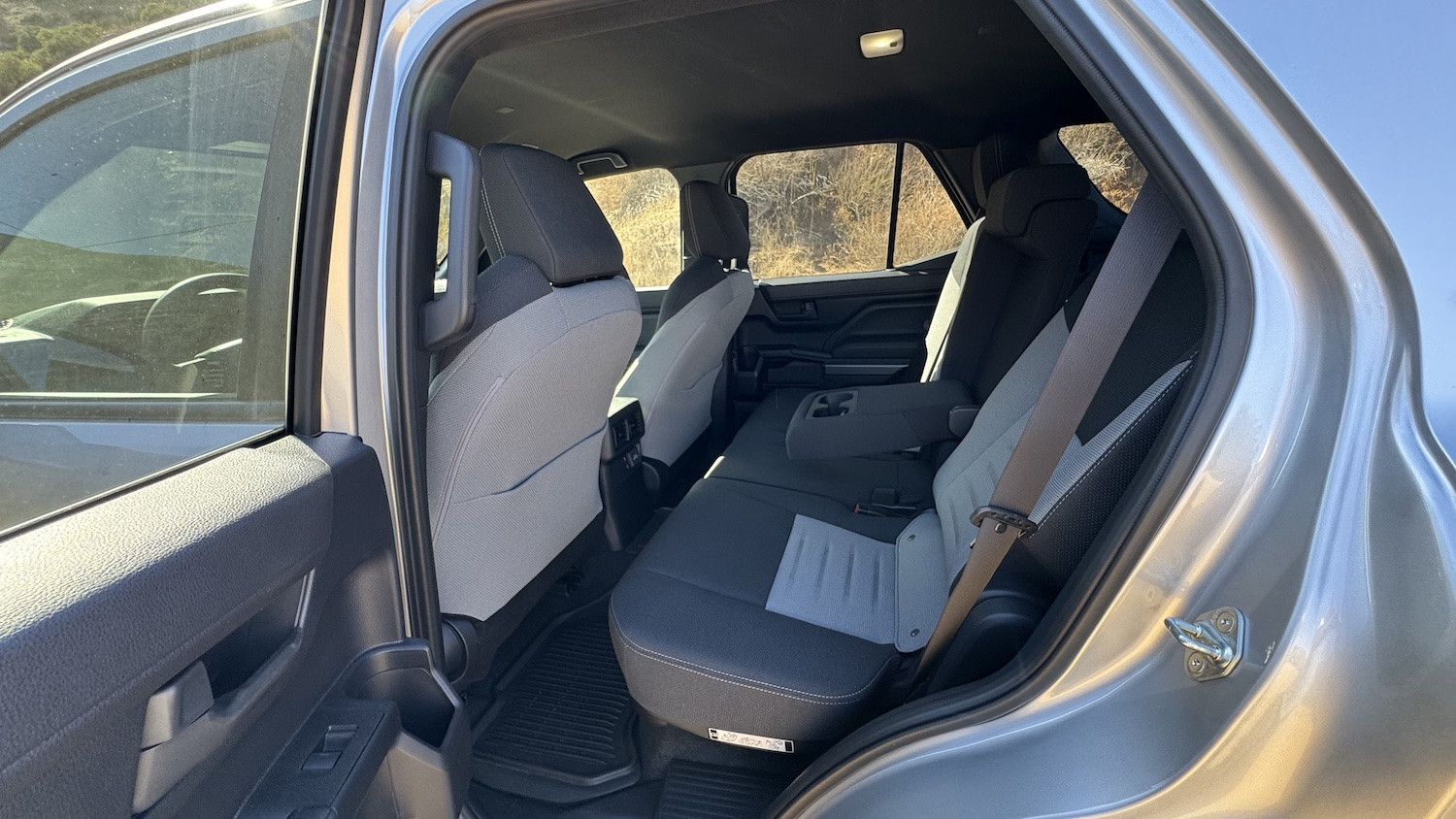 4runner 5991
4runner 5991
While a front-facing camera would be a valuable addition, particularly for off-roading, and running boards might be undesirable for some users, the base TRD Off-Road represents the best value 4Runner. Weighing 4,850 pounds, it is also over 600 pounds lighter than the Trailhunter or TRD Pro, mitigating the power difference compared to hybrid models. The weight savings, combined with greater cargo volume and questionable long-term fuel economy benefits of the hybrid, suggest that opting for the non-hybrid powertrain is a sensible choice.
Toyota 4Runner TRD Off-Road Versus Toyota Land Cruiser: Sibling Rivalry?
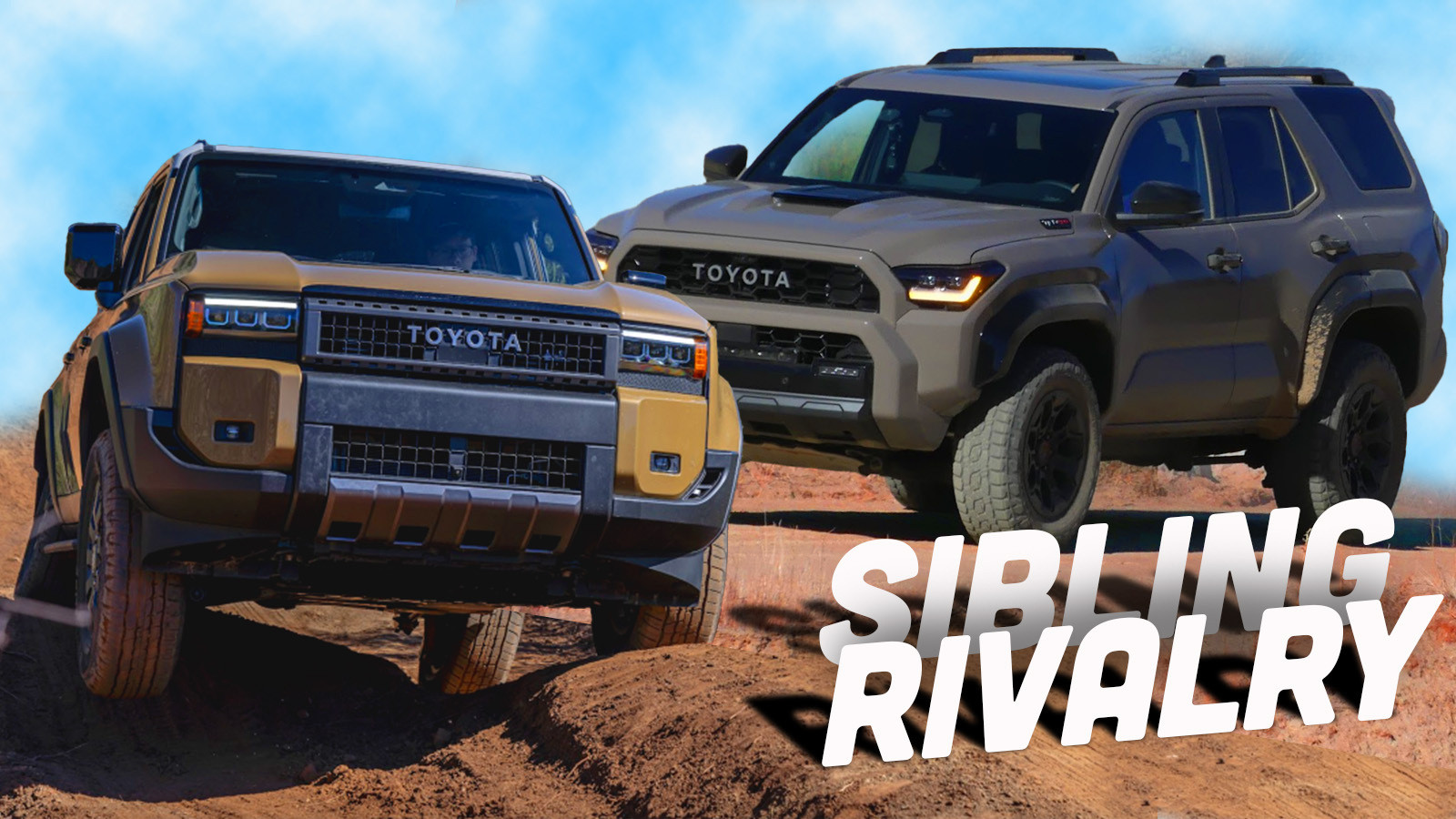 Siblingrivalry Top
Siblingrivalry Top
Considering the starting price of the base 4Runner TRD Off-Road at $50,640, it is nearly $7,000 less expensive than the base $57,400 Land Cruiser. The base Land Cruiser does offer a larger infotainment screen, a hybrid powertrain, and full-time four-wheel drive with a locking Torsen center differential, while the 4Runner features a smaller screen, part-time four-wheel drive, and a less powerful gasoline engine.
However, the interior quality of the base “1958” Land Cruiser is not significantly superior to the 4Runner’s, requiring a step up in Land Cruiser trim to notice a substantial improvement in materials. The hybrid powertrain, while standard on the Land Cruiser, may not justify the trade-offs in cargo space and increased cost compared to the non-hybrid 4Runner.
Interior styling comparison: Base Land Cruiser
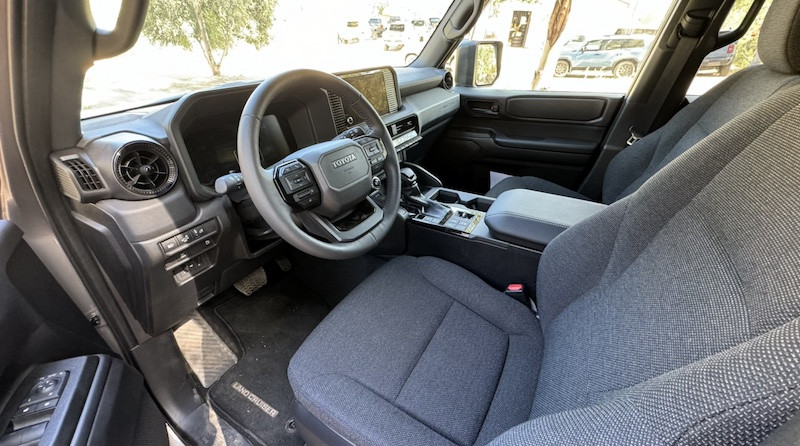 Land Cruiser 15
Land Cruiser 15
Base 4Runner TRD Off-Road:
 4runner 5989
4runner 5989
Another angle of the Land Cruiser interior:
 Land Cruiser 16
Land Cruiser 16
4Runner TRD Off-Road interior:
 4runner 5990
4runner 5990
Land Cruiser 1958 interior:
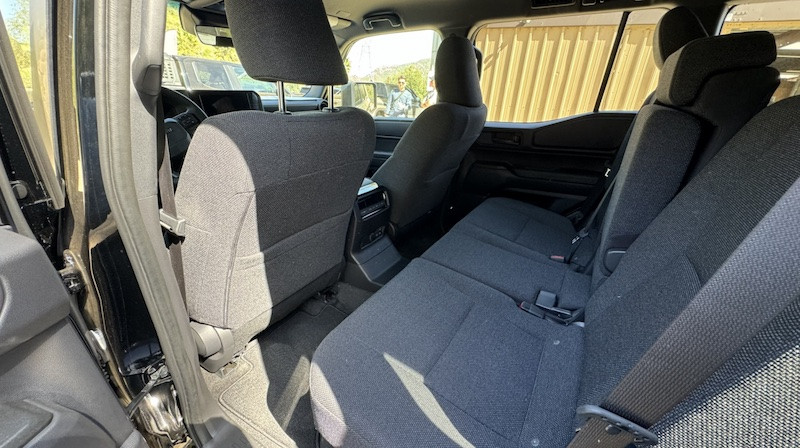 Land Cruiser 17
Land Cruiser 17
Base 4Runner TRD Off-Road interior:
 4runner 5991
4runner 5991
The Land Cruiser holds a slight edge in interior design elegance. Exterior styling comparison:
 4runner 5943
4runner 5943
 P1030234
P1030234
Land Cruiser exterior:
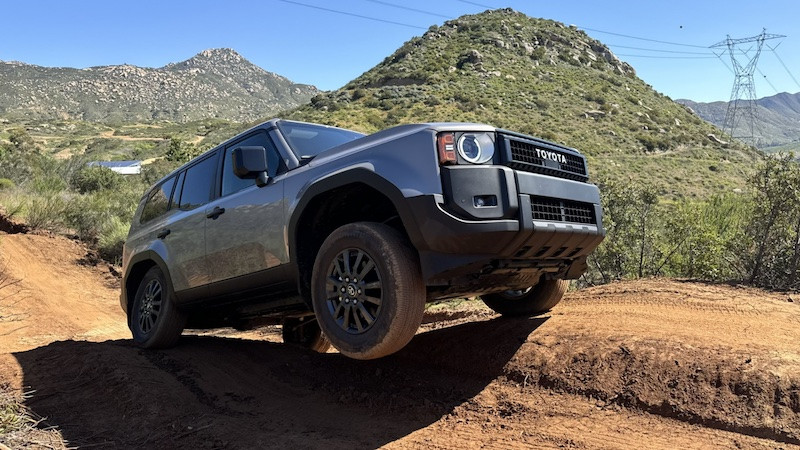 Land Cruiser 33
Land Cruiser 33
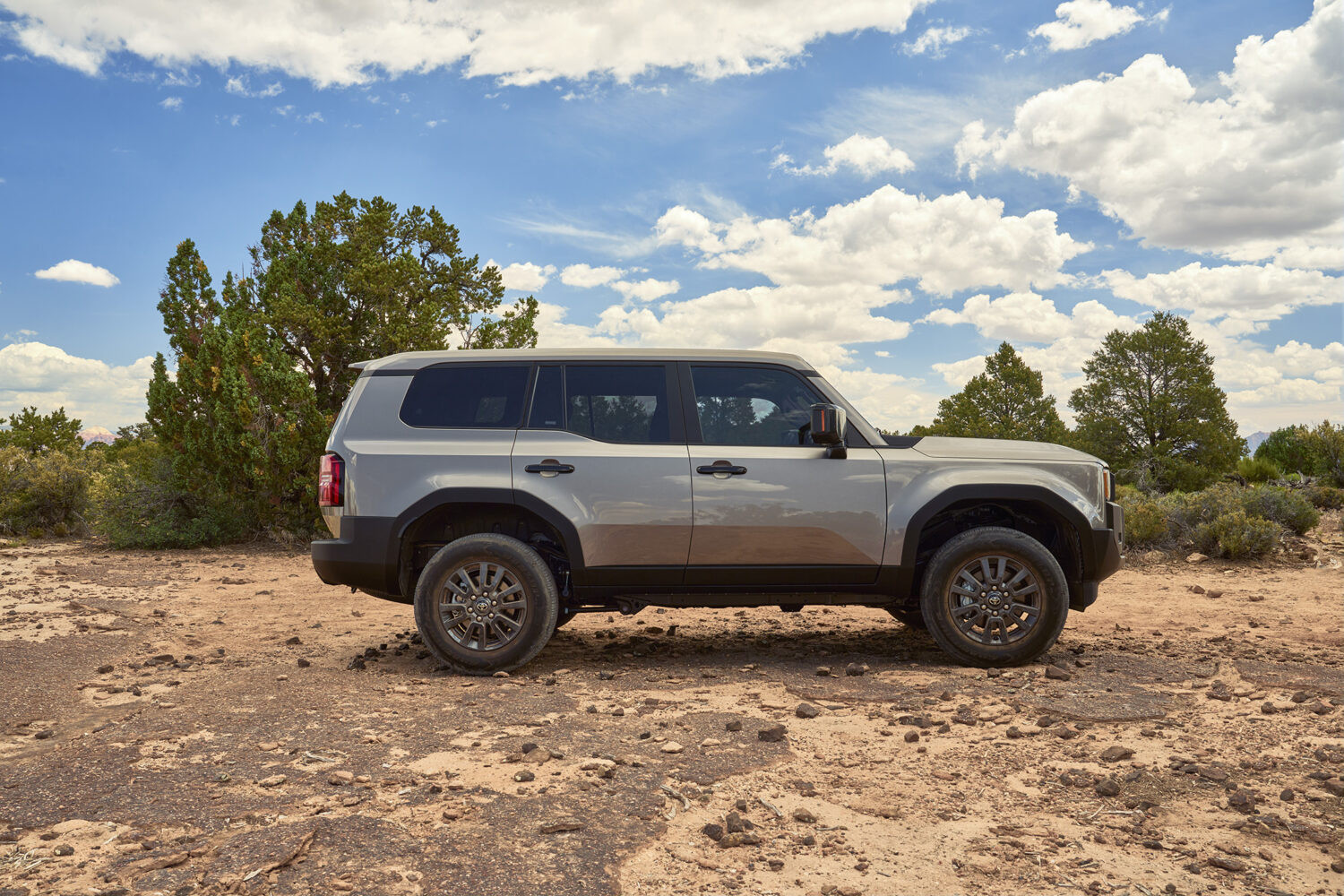 2024 Toyota Land Cruiser 1958 006 1500×1000
2024 Toyota Land Cruiser 1958 006 1500×1000
The Land Cruiser’s exterior design, with a more squared-off roofline and less “squished” front end, is arguably more appealing.
In terms of off-road capability, the 4Runner TRD Off-Road and Land Cruiser are closely matched. Both feature a rear locker (Land Cruiser adds a locking center differential), basic skid plates, and Toyo all-terrain tires.
However, tire sizes differ: the Land Cruiser uses 245/70R18 tires, while the 4Runner TRD Off-Road employs larger 265/70R18 tires, contributing to the 4Runner’s 9.1 inches of ground clearance compared to the Land Cruiser’s 8.7 inches.
Off-road geometry also plays a crucial role. The Land Cruiser boasts a 30-degree approach angle, a 22-degree departure angle, and a 25-degree breakover angle. The 4Runner TRD Off-Road’s approach angle is listed at 19 degrees, departure angle at 24 degrees, and breakover angle at 24 degrees.
While the Land Cruiser’s significantly better approach angle (11 degrees advantage) usually suggests superior off-road performance, the lower 22-degree departure angle somewhat negates this advantage. Furthermore, the 4Runner TRD Off-Road’s claimed 19-degree approach angle seems questionable, potentially understated.
Consider the base SR5, with smaller tires and a front chin spoiler:
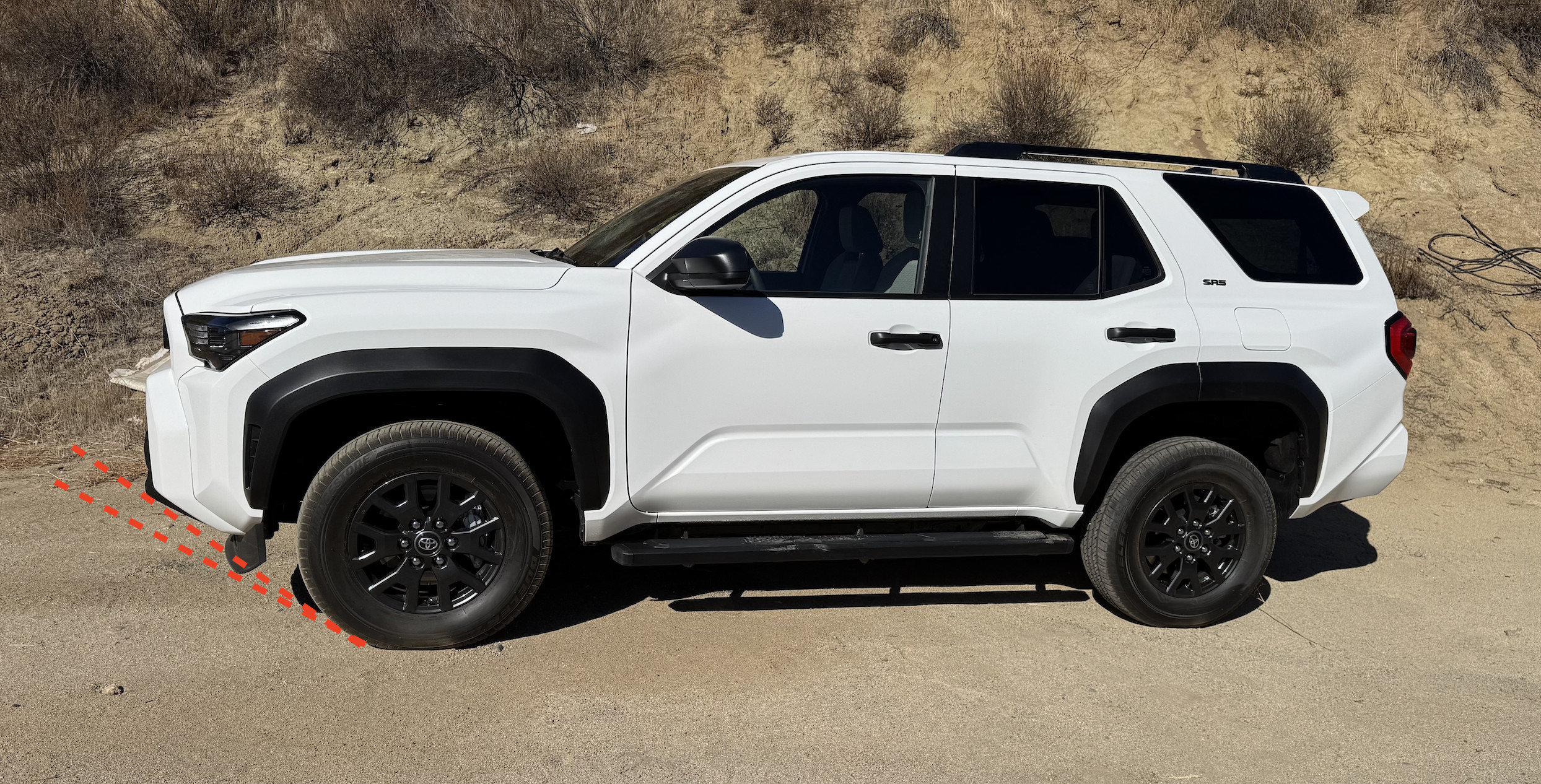 Screen Shot 2025 01 27 At 7.35.49 Pm
Screen Shot 2025 01 27 At 7.35.49 Pm
The SR5, with a claimed 18-degree approach angle, clearly gains more than a single degree by simply removing the chin spoiler. TRD Off-Road models, lacking this spoiler and equipped with larger tires, should logically have a significantly better approach angle than 19 degrees, potentially closer to 30 degrees, like the Trailhunter and TRD Pro with their 33-degree approach angles.
 4runner 5942
4runner 5942
Toyota’s online configurator, however, shows the TRD Off-Road with a chin spoiler, which may be removable. If removed, the 4Runner TRD Off-Road’s approach angle would likely improve considerably.
In practical off-road driving, the Land Cruiser 1958 and 4Runner TRD Off-Road feel similarly capable. Styling preference leans towards the Land Cruiser, while pricing favors the 4Runner.
Cargo volume comparison:
 P1030375
P1030375
Hybrid 4Runner TRD Off-Road and Land Cruiser offer comparable cargo space (around 82 cubic feet behind the front row, 42-46 cubic feet behind the second row). Non-hybrid 4Runners significantly outperform both, with 90.2 cubic feet behind the front row and 48.4 cubic feet behind the second row.
On-road driving dynamics are similar, with both SUVs exhibiting a comfortable ride, noticeable body roll in corners, and adequate but not sporty acceleration. Both prioritize off-road capability and Toyota’s reputation for reliability.
Final Verdict: 2025 Toyota 4Runner
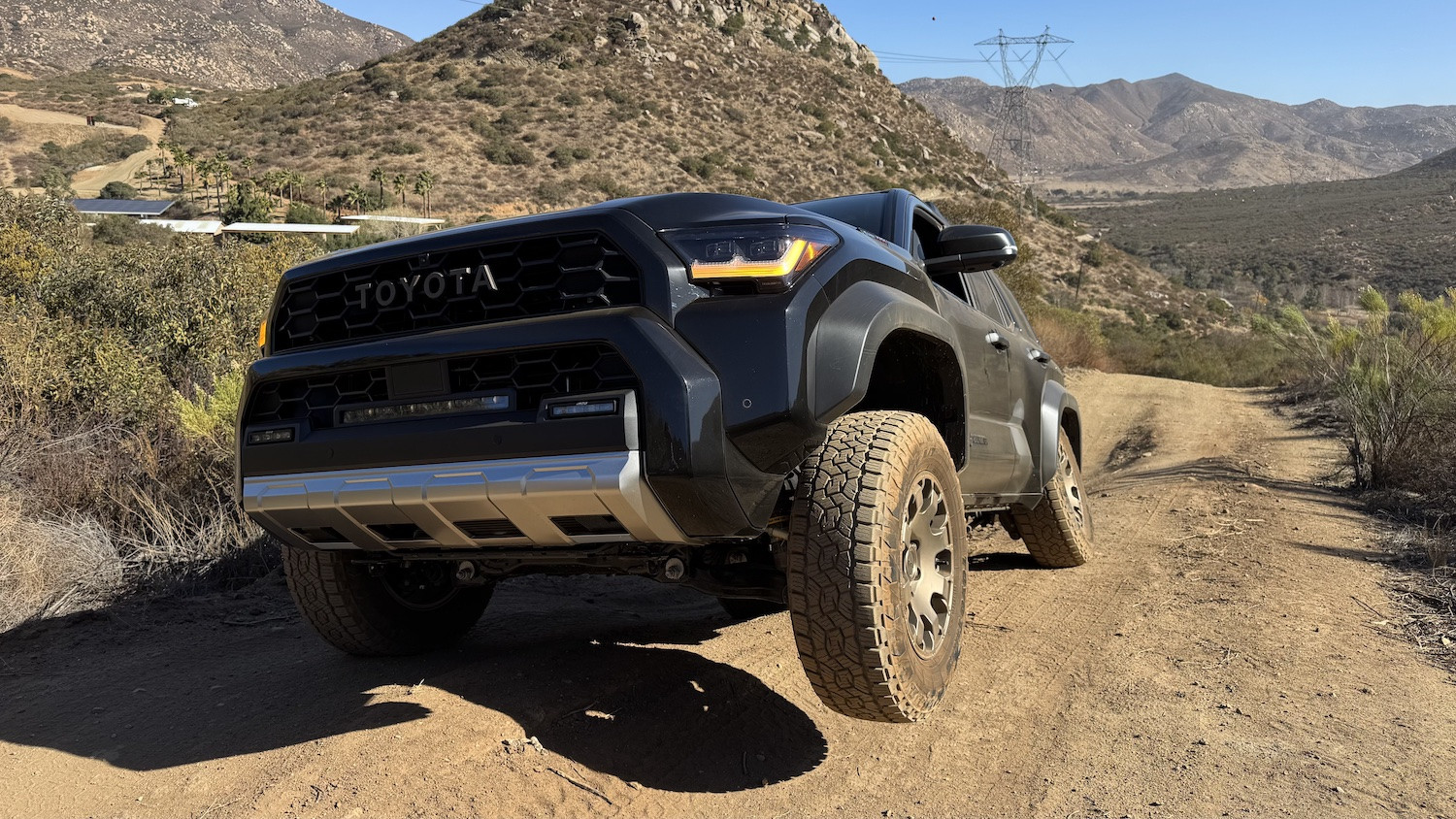 4runner 5906
4runner 5906
While the close architectural and capability similarities between the 4Runner and Land Cruiser might seem like overlap, Toyota’s strategy offers valuable choices. The new Land Cruiser, while less distinctive than its predecessors, addresses the previous model’s excessive price and luxury focus. The availability of two body-on-frame, mid-size, off-road Toyota SUVs is a positive development.
The 2.4-liter turbocharged inline-four engine is functional but not exceptional. The eight-speed automatic transmission is well-matched to the engine. The suspension and interior are modernized yet practical. The new 4Runner and Tacoma are worthy successors, and the Land Cruiser fits logically within the lineup as a more premium 4Runner alternative.
The Land Cruiser is not as hardcore off-road as the 4Runner TRD Pro or Trailhunter but surpasses the SR5 and Limited/TRD Sport trims. It is roughly equivalent in capability to the 4Runner TRD Off-Road but offers a standard hybrid powertrain (reducing cargo volume compared to non-hybrid TRD Off-Road), more refined styling, and a slightly softer ride.
For buyers prioritizing affordability and/or three-row seating, the base 4Runner SR5 is a compelling option. For balanced off-road capability and value, the 4Runner TRD Off-Road is ideal. For maximum off-road performance without budget constraints, the 4Runner Trailhunter or TRD Pro are top choices. For the most luxurious Toyota off-roader, the Land Cruiser is the answer (with the Lexus GX for even greater luxury). For those prioritizing cool aesthetics, the base Land Cruiser is an appealing option.
Ultimately, for those choosing between the 4Runner and Land Cruiser, the non-hybrid 4Runner TRD Off-Road offers superior cargo volume, omits the potentially unnecessary hybrid system, features a smaller infotainment screen (arguably less intrusive), and saves approximately $7,000 compared to the Land Cruiser. However, the allure of a non-base Land Cruiser with enhanced interior refinement and comparable off-road capability remains strong, particularly for buyers seeking a more premium experience in this segment.